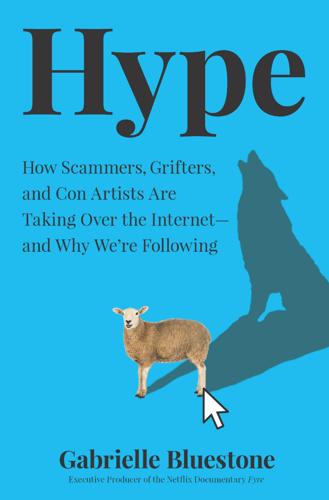
Hype: How Scammers, Grifters, and Con Artists Are Taking Over the Internet―and Why We're Following
by
Gabrielle Bluestone
Published 5 Apr 2021
Social Zapping and Fear of Missing Out Mediate the Effects of Maximization and Procrastination on Problematic Social Networks Use," Computers in Human Behavior 107: 106296, June 2020, https://doi.org/10.1016/j.chb.2020.106296. 131.Daria Kuss and Mark Griffiths, "Social Networking Sites and Addiction: Ten Lessons Learned," International Journal of Environmental Research and Public Health 14, no. 3: 311, March 17, 2017, https://doi.org/10.3390/ijerph14030311. 132.Oriana Schwindt, "TV Ratings: ‘The Bachelor’ Wins Big, ‘Celebrity Apprentice’ Grows," Variety, January 17, 2017, https://variety.com/2017/tv/news/tv-ratings-the-bachelor-celebrity-apprentice-1201961492/. 133.Influencer Marketing, "The State of Influencer Marketing 2019: Benchmark Report [+Infographic]," Influencer Marketing Hub, March 15, 2019, https://influencermarketinghub.com/influencer-marketing-2019-benchmark-report/. 134.Jacob Dirnhuber, "Children Turn Backs on Traditional Careers in Favour of Internet Fame, Study Finds," The Sun, May 22, 2017, http://www.thesun.co.uk/news/3617062/children-turn-backs-on-traditional-careers-in-favour-of-internet-fame-study-finds. 135.Josef Adalian, "CBS Took a Big Gamble on Love Island this Summer.
…
And it just seemed like a natural progression, with, what if it was a whole family and they literally were just planted in a neighborhood, and had products to talk about and soft-sell in whatever way? And it just sort of blew up from there.” The only conservative prediction The Joneses made, in my opinion, was assuming that guerilla marketing—stealth product placement embedded into everyday life—was a worst-case scenario for the ad industry. Nowadays, of course, social media influencers are much more transparent about what they’re selling, but their audience is just as rapt as the Joneses’ neighbors. Which is what’s so insane about today’s landscape. What was, in 2009, intentionally surreal, now seems almost banal, what with the former Goop employee who staged a sponsored multi-city engagement extravaganza for a live audience of about 5,000 emotionally invested strangers (and lost her day job not long after it went viral for all the wrong reasons),14 or the TikTok users who caught coronavirus after participating in a viral toilet-seat-licking challenge for clout.15 “I think now, with influencer marketing, what was covert has now become overt,” Borte said.
…
One of them, an intern who had been recruited in the second wave, was a Colorado teenager named Peter Huffman.37 He was in his senior year of high school when he got looped by a camp friend into what he thought would be “the next iteration of social networking.” What that really translated into was a sort of rudimentary, early version of social media influencing: in exchange for $10 here and $20 there, Spling would pay him to do simple tasks, like signing up all his friends for the site, or generating a certain number of comments under the videos of bike trick landing fails. Though Huffman was one of the youngest so-called interns on the team (most of the others on his email chain had college .edu addresses, he recalls), no one seemed to care about his age—or even if the accounts he had been signing up were real.
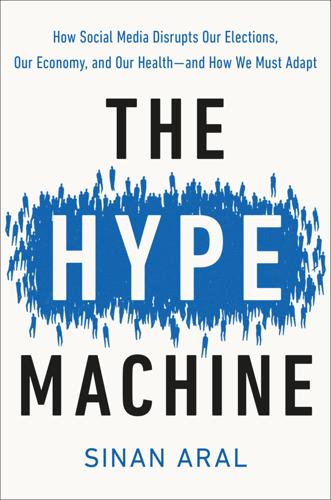
The Hype Machine: How Social Media Disrupts Our Elections, Our Economy, and Our Health--And How We Must Adapt
by
Sinan Aral
Published 14 Sep 2020
These studies demonstrate the existence of neural precursors to behavior change. Later I’ll examine large-scale behavioral experiments showing how social signals change people’s actual voting, rating, buying, dating, and exercise behaviors. When I do, keep in mind what’s happening in subjects’ brains as social media influences them. Wired for Promise and Peril Another important result of these studies supports a central tenet of this book—that the Hype Machine holds the potential for exceptional promise and tremendous peril. It turns out that we are neurologically wired for both the promise and the peril.
…
Naïve observational approaches neglect the confounding factors that affect both exposure and voting behavior. For example, voters targeted with such content are more likely to be sympathetic to it. Evaluations using randomized experiments have shown observational estimates of the effects of Facebook advertising campaigns to be frequently off by over 100 percent. Our own estimates of social media influence were off by as much as 300 to 700 percent without carefully linking exposure to behavior. The widely publicized evidence of the effectiveness of Cambridge Analytica’s voter targeting on inferred personality traits is not estimated from randomized experiments and thus plausibly suffers from similar biases.
…
If we randomly assigned an item to get an extra thumbs-up, it was 30 percent more likely to exceed a score of 10, which was no small feat given the mean rating on the site was 1.9. So with a small random bump-up at the beginning of the ratings cycle, items were 30 percent more likely to shoot off into the stratosphere of ratings. Figure 10.1 The effect of social media influence on ratings. The graph shows the distributions of normalized ratings of three randomly selected groups of posts on a social news aggregation website similar to Reddit. In the “up-treated” group, posts were manipulated to display a single thumbs-up vote as the first rating on the post (the line with the up arrow).

Futureproof: 9 Rules for Humans in the Age of Automation
by
Kevin Roose
Published 9 Mar 2021
We worry, for good reason, that robots are on the verge of taking over our jobs and making us obsolete. And we’re looking for something that can give us an enduring edge. One option, of course, is to try to differentiate ourselves through hard work. This strategy has become increasingly popular in recent years, with the advent of so-called “hustle culture.” All over social media, influencers and business gurus preach the value of productivity and constant, ceaseless effort. They post inspirational “hustle porn” memes on Twitter, LinkedIn, and Instagram with phrases like “Rise and Grind” or “Thank God It’s Monday.” They trade life hacking tips and cut out unnecessary cognitive burdens by wearing the same clothes every day or eating the same thing at every meal.
…
Taylor believed that most jobs could be broken into standardized, measurable tasks, and that those tasks could be perfected over time by ironing out inefficiencies and shaving away every millisecond of wasted time. Ultimately, he believed that enhanced productivity would be a win-win: companies would increase their output, and workers would get the satisfaction of operating at peak performance. Today’s version of Frederick Winslow Taylor is probably Gary Vaynerchuk, a marketing guru and social media influencer who has made a lucrative career out of inspiring his millions of followers to hustle harder. (“You need to work every goddamn minute you can,” Vaynerchuk said in a 2018 YouTube video.) But there are plenty of contenders. Elon Musk, the Tesla and SpaceX founder, famously works himself to the point of burnout, even sleeping on Tesla’s factory floor during intense production cycles.
…
Today, Kawai is a living legend at Toyota “Toyota’s ‘Oyaji’ Kawai Calls to Protect Monozukuri,” Toyota News, June 17, 2020. a former steelworker named Frederick Winslow Taylor Frederick Winslow Taylor, The Principles of Scientific Management (New York: Harper & Brothers, 1915). Gary Vaynerchuk, a marketing guru and social media influencer Ted Fraser, “I Spent a Week Living Like Gary Vaynerchuk,” Vice, December 17, 2018. Elon Musk, the Tesla and SpaceX founder, famously works Catherine Clifford, “Elon Musk on Working 120 Hours in a Week: ‘However Hard It Was for [the Team], I Would Make It Worse for Me,’ ” CNBC, December 10, 2018.
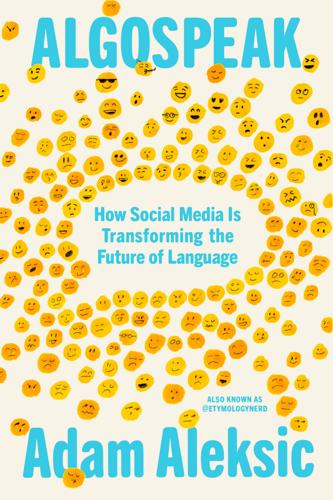
Algospeak: How Social Media Is Transforming the Future of Language
by
Adam Aleksic
Published 15 Jul 2025
We just understand it’s something to code-switch in and out of, which is why we mark off words as “internet slang” or “Gen Z slang.” * * * In September 2021, the TikToker Anthony Mai posted a video urging his followers to participate in a prank: For no reason, everybody should suddenly start commenting the chair emoji () in lieu of the laughing emoji for all videos by KSI, another social media influencer. The video went extremely viral, and for the next few weeks it seemed as if everybody on TikTok was spamming in not only KSI’s comments but under every successful video. Google searches for “chair emoji meaning” spiked, and people began speculating whether the emoji had officially become the new laughing emoji.
…
That’s why the uptalk in the influencer accent can be oddly reminiscent of a voicemail on an answering machine, and why the stress patterns are kind of similar to those of the broadcaster voice. We talk a certain way when we want to keep attention but we’re not expecting a response. The other source of the lifestyle YouTube accent is a real-life accent that I’ve already mentioned—the Valley girl accent. Before YouTube got popular, the equivalent of social media influencers were celebrities like Paris Hilton and the Kardashians, who speak with the same kind of uptalk still used by many creators today. Because these figures were the standard of female beauty and fashion at the time, their speaking style was adopted by others trying to present a high-class lifestyle.
…
Influencers are offered eye-watering incentives to promote items being sold through the shops, lending them an organic advertising feel. When a cottagecore creator promotes “cottagecore” apparel online, that not only reinforces the cottagecore identity for others but also feels much more authentic than a traditional advertisement. In contrast to stilted, unnaturally scripted promotions, this style of “influencer marketing” makes it feel as though the cottagecore influencer were simply recommending a product they like to others in their community. Reality, of course, is different. Companies and platforms are partnering with an army of content-creating minions to maximize profit from the online identities they helped manufacture in the first place.

Who’s Raising the Kids?: Big Tech, Big Business, and the Lives of Children
by
Susan Linn
Published 12 Sep 2022
Over the past decade, a plethora of books with titles like You Are the Brand, You Are a Brand!, You Are Your Brand, and U R the Brand sell the notion that each of us needs to be packaged and marketed. I’m not suggesting that kids are reading these books, but the message is trickling down to them, especially through social media influencers. The term “influencer,” according to Wired, is “inextricably tied to consumerism and the rise of technology.” It’s “shorthand for someone (or something) with the power to affect the buying habits or quantifiable actions of others by uploading some form of original—often sponsored—content to social media platforms.”56 Among kids aged eight to twelve, three times as many want to be influencers as want to be astronauts.57 Influencers can be celebrities posting paid shout-outs to brands on Instagram.
…
It’s “shorthand for someone (or something) with the power to affect the buying habits or quantifiable actions of others by uploading some form of original—often sponsored—content to social media platforms.”56 Among kids aged eight to twelve, three times as many want to be influencers as want to be astronauts.57 Influencers can be celebrities posting paid shout-outs to brands on Instagram. But they can also be seemingly regular people, including kids, who rack up enough followers to make potential product endorsements valuable to those who make and market consumer goods. Over time, these glorified salespeople, themselves, become brands. Successful social media influencers can make big bucks from companies paying them to push products. In 2020, nine-year-old Ryan Kaji earned $29 million on YouTube, making him the highest paid YouTube star that year. His channel Ryan’s ToysReview (now called Ryan’s World) had 2.2 billion followers. His brand Ryan’s World licenses more than five thousand products,58 including toys, housewares, and clothing,59 which grossed more than $250 million in 2021.60 But whether we generate income from our posts or not (and most of us don’t), social media encourages everyone, including children, to self-brand.
…
See e-books; reading books boredom the “Alexa, I’m bored” feature, 139–40 providing opportunities to generate tech-free solutions to, 224–25 Boss Baby (film), 139 Boston Children’s Hospital, 3, 27–28 Bowling Alone (Putnam), 132 boyd, danah, 221 BP (British Petroleum), 165, 171 Brand Strategy (magazine), 47 branding, 5, 13–14, 57–76, 89 brand-licensed children’s products and toys, 13–14, 29–30 brand-loyalty, 66–68, 134, 164, 165, 172, 184 churches/religious institutions, 71 corporate-financed advertising in schools, 164, 165, 172, 184 differentiating brand impression from reputation, 66 and edtech, 71, 184 presidential, 67, 69–7 social media and brand tribes, 63–65 social media and self-branding, 5, 72, 76, 219 social media influencers, 72 Toys “R” Us marketing, 58–61 young children and, 89–90 Bratz dolls, 59, 85 Brazil, 160–61 Britain adoption of Age-Appropriate Design Code, 200–201, 203 Quakers’ efforts to end of slavery, 230 screen time recommendations, 21 studies of touch screen-use by babies and toddlers, 42 British Food Journal, 116 British Medical Journal, 103 Bronfenbrenner, Urie, 65, 91 Broussard, Meredith, 150 Brown, Pat, 175 Buffett, Warren, 174 Bush, George H.W., 69 Bush, George W., 69, 91 BuzzFeed, 74 campaign finance reform, 199 Campaign for a Commercial-Free Childhood (CCFC), 3.
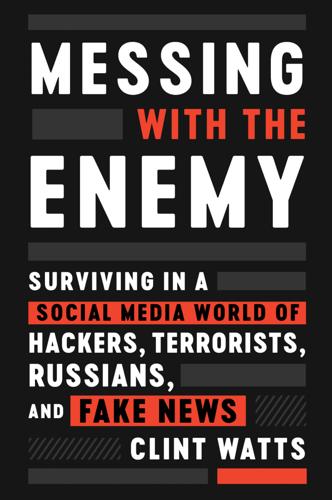
Messing With the Enemy: Surviving in a Social Media World of Hackers, Terrorists, Russians, and Fake News
by
Clint Watts
Published 28 May 2018
The conspiracy reached such heights that Governor Abbott deployed the Texas National Guard to monitor Operation Jade Helm and ensure that no federal takeover was afoot.9 Ultimately, the exercise occurred with little fanfare and was more of a public relations crisis than a threat of martial law. But the Jade Helm 15 exercise revealed to me and likely to the Russians just how easy social media influence could be with segments of the American public. The troll army’s operations in 2014 and 2015 indicated how Russia’s long-run investment in state-sponsored media outlets was beginning to pay big dividends. Social media provided a subtler pathway for government-sanctioned news outlets like RT and Sputnik News to grow their American viewership.
…
By Election Day, allegations of voter fraud and the election being rigged created such anxiety that I worried that some antigovernment and domestic extremist groups might undertake violence if Trump didn’t win. Pundits continued their prognostications of an easy Clinton victory, and calls for Trump supporters to go to the polls and monitor for fraud echoed far and wide on social media. Russian social media influence networks prepared for a Trump loss and promoted stories about the election being rigged as much as they pumped candidate Trump. Worn out from the unending election cycle and years of Russia analysis, I cast my vote in upstate New York and headed to an election-watching show at the Comedy Cellar, in New York City, my favorite place to hang and a spot I hoped might provide some needed relief after so many stressful months.
…
Putin’s plan had worked: an American reality show star spouting Russian propaganda lines would soon be the president of the United States. 7 Postmortem The postmortem on Russia’s influence and meddling in the presidential election of 2016 began well over a year ago and may never end. Less than a month after the election, social media influence became a fixation with journalists as they looked for an explanation as to how Donald Trump had beaten all the odds. He was completely unconventional, uninformed, unlikable in so many ways, and yet he had become the leader of the free world. Fake news entered the American lexicon, and my team’s pre-election detailing of Russian active measures on the internet was now the subject of hot debate.

Spies, Lies, and Algorithms: The History and Future of American Intelligence
by
Amy B. Zegart
Published 6 Nov 2021
Mueller, “Report on the Investigation into Russian Interference,” 4; United States v. Internet Research Agency, indictment, 12–13; Senate Select Committee on Intelligence, “Russian Active Measures Campaigns,” 5, 29–32. 13. Senate Select Committee on Intelligence, Hearing on Social Media Influence. 14. Senate Select Committee on Intelligence, Hearing on Social Media Influence. 15. Senate Select Committee on Intelligence, Hearing on Social Media Influence. See also Intelligence Community Assessment, “Assessing Russian Activities and Intentions in Recent US Elections,” January 2017; Senate Select Committee on Intelligence, “Russian Active Measures Campaigns”; MacFarquhar, “Inside the Russian Troll Factory.” 16.
…
U.S. Senate Select Committee on Intelligence, Hearing on Social Media Influence in the 2016 United States Elections, 115th Cong., 1st sess., November 1, 2017; U.S. Senate Select Committee on Intelligence, “Russian Active Measures Campaigns and Interference in the 2016 Election,” Vol. 2: Russia’s Use of Social Media with Additional Views, 116th Cong., 1st sess., October 2019, https://www.intelligence.senate.gov/sites/default/files/documents/Report_Volume2.pdf, 47. 4. Senate Select Committee on Intelligence, Hearing on Social Media Influence. 5. Descriptions are based on pictures displayed at Senate Select Committee on Intelligence, Hearing on Social Media Influence, https://www.intelligence.senate.gov/sites/default/files/documents/Exhibits%20used%20by%20Chairman%20Burr%20during%20the%202017-11-01%20hearing.pdf. 6.
…
Descriptions are based on pictures displayed at Senate Select Committee on Intelligence, Hearing on Social Media Influence, https://www.intelligence.senate.gov/sites/default/files/documents/Exhibits%20used%20by%20Chairman%20Burr%20during%20the%202017-11-01%20hearing.pdf. 6. Allbright, “Russian Facebook Page Organized.” 7. Senate Select Committee on Intelligence, “Russian Active Measures Campaigns,” 46–47. 8. Senate Select Committee on Intelligence, Hearing on Social Media Influence; Senate Select Committee on Intelligence, “Russian Active Measures Campaigns”; Robert S. Mueller III, “Report on the Investigation into Russian Interference in the 2016 Presidential Election,” Vol. 1, March 2019, https://www.justice.gov/storage/report.pdf. 9.
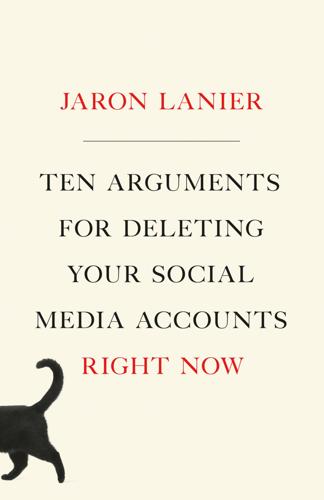
Ten Arguments for Deleting Your Social Media Accounts Right Now
by
Jaron Lanier
Published 28 May 2018
Similarly, a BUMMER addict eventually becomes preternaturally quick to take offense, as if hoping to get into a spat. Addicts also become aggressive, though they feel they are acting out of necessity. The choice is to victimize or be a victim. Even successful and pleasant BUMMER addicts, like top social media influencers, have reported that they must not be too nice to others, for that shows weakness1 in a highly competitive fishbowl. One must be followed more than one follows, for appearances’ sake. The characteristic personality change is hard to perceive or acknowledge in oneself, but easier to see in others, especially if you don’t like them.
…
If people want to be subsumed, then who am I to say, “You should fight for your individual dignity?” Doesn’t that make me the one who isn’t respecting the wishes of others? Because of the dilemma I just mentioned, I don’t want to criticize people who seem to like the situation—for instance, young people who are trying to be social media influencers. Instead I’ll focus on people who are trying to do something other than be a number, even as they are subsumed by the new reality of number supremacy. Sources of content, such as news websites, are discovered by people mostly through BUMMER, so such sites must game themselves to be favored by algorithms and crowds.
…
You can’t tell someone where to go and then claim that you discovered something new because you learned where that person went. This is yet another ubiquitous problem that’s as hard to see as air. Here’s some positive spin: The fact that independent journalism is in trouble in BUMMER’s shadow is a sign of its integrity. Journalists have successfully held themselves to higher standards than social media influencers, but they have also paid a price. Now the real news is called “fake news,” because by the standards of BUMMER, what is real is fake; in BUMMER, reality has been replaced by stupid numbers. POD PEOPLE Another way to illuminate the tricky degradation of context is to notice online situations in which it is not a problem, at least not yet.

Long Game: How Long-Term Thinker Shorthb
by
Dorie Clark
Published 14 Oct 2021
“We had CHROs, CEOs, authors, thought leaders, and more, all joining from all over the world,” she recalls. As a result of running the group, Tanvi, now a professor at Singapore Management University, has received prestigious speaking invitations, been featured in newspapers and magazines, and was lauded by the Society for Human Resource Management as a social media influencer for six years in a row. Besides starting your own group, another possibility is to identify people, or groups of people, you’d like to get to know based on your long-term future goals. If you think you might like to move to Los Angeles in the next few years, you could deliberately start getting to know Californians, so you can determine what it’s really like to live there and have a network of friends in place when you move.
…
But given enough time, career and life trajectories change, and you may veer much closer to each other. Even more profoundly, you can influence each other in unexpected ways—sparking a line of inquiry, awakening an old passion, or inspiring a creative solution. Your life looks different, and better, because of their presence. That’s how it happened for Hayim Makabee, the founder of an influencer marketing startup called KashKlik. Born in Rio de Janeiro, Hayim immigrated to Israel nearly thirty years ago. Wanting to give back, he started volunteering for an immigrant aid organization. In the process, he befriended a staffer named Ricardo, and together they helped organize a number of meetups, lectures, and holiday celebrations.

Like, Comment, Subscribe: Inside YouTube's Chaotic Rise to World Domination
by
Mark Bergen
Published 5 Sep 2022
He was particularly fond of Shay Carl, a bearded, bearish YouTuber in Idaho who had left a job setting countertops to post frequent, zany home videos of his family (YouTube handle: Shaytards) that earned impressive traffic. Real estate opened up next door, and Zappin offered it to Carl and envisioned filling the house with YouTubers, a decade before social media influencers piled into mansions regularly. Zappin put money down on the house before Carl agreed. Many other moves were impulsive. After Philip DeFranco, a popular YouTuber (handle: sxephil), shared that YouTube had given him a $100,000 grant to upgrade film equipment, Zappin begged YouTube for the same grant; once he got it, he went on a spending binge.
…
In October 2016, Twitter, Vine’s owner, unable to handle the service, unceremoniously shut it down. Paul led a mass migration of Viners to YouTube, where they made their videos longer and wilder. These creators grew up on Web 2.0—Paul was born in 1995—barely cognizant of a time before YouTube or internet fame. “Social media influencer” had become a natural career. “I want to be the biggest entertainer in the world,” Paul, then twenty, told an advertising magazine in 2016. This seemed plausible. By the following year he had more than fifteen million YouTube subscribers, a TV show with Disney, a film contract, a deal with the MCN Studio71, and a massive following.
…
Gahan, the adman, invited the Smosh teens to their first-ever office meeting and made his pitch: produce a video that mentions the Zvue, a squat portable iPod rival, and a check is yours. Smosh uploaded “Feet for Hands,” a three-minute absurdist sketch with a premise that’s exactly what its title suggests. The Zvue appeared on-screen for roughly eighteen seconds. The YouTubers received $15,000. A cottage industry of influencer marketing turned in its womb. Chad Hurley initially opposed paying YouTubers. “We didn’t want to build a system that was motivated by monetary reward,” he explained at a conference. YouTube’s mandate from Google didn’t involve monetary rewards, either. “You guys get to completely run the ship,” Eric Schmidt told Steve Chen during acquisition talks.
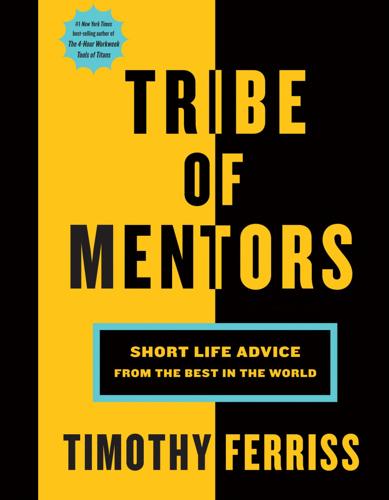
Tribe of Mentors: Short Life Advice From the Best in the World
by
Timothy Ferriss
Published 14 Jun 2017
The world doesn’t need more of that. The world needs healers and problem-solvers who use their hearts. Your heart is a million times more powerful than your brain. What are bad recommendations you hear in your profession or area of expertise? I have my feet in two industries right now, social media “influence” and the humanitarian industry. The worst recommendation that I hear in the influencer world is coming from marketing gurus who preach that if you build an audience and you start promoting brands to them, you can be extremely rich and successful. That’s cute, but remember the story of Bernays.
…
by Gary Vaynerchuk: Gary V. had the forethought to recognize the importance of Twitter and technologies that hadn’t come yet to maturity. He talked about how all the then-current forms of advertising would be left in the dust. He also predicted that there was going to be a marketing shift from professional athletes and celebrities to social media influencers. This book made me recognize that I have enough access to make a very large company, even from my house, since everyone has the same access to the Internet. The 4-Hour Workweek by Tim Ferriss: It taught me better ways to manage my time and the value of not making myself too busy. 5/3/1 by Jim Wendler: Getting stronger can be as simple or as complex as you want to make it.
…
When I dropped out of business school to create my first startup, 75 percent of the people I knew thought I was going to regret it all my life, and some even said that I would end up homeless. When I quit my struggling tech startup to start making videos online, everyone around me saw it as a shameful escape and a waste of my time. When I quit the influencer marketing agency Gary Vaynerchuk and I co-created to pursue using social media for good instead, everyone thought I was completely crazy and losing not only my mind but a huge source of income and a guaranteed future. Turns out they were the best decisions of my life. Because each one of those difficult decisions that looked like failures (at first) took me a bit closer to my real self.

Going Dark: The Secret Social Lives of Extremists
by
Julia Ebner
Published 20 Feb 2020
For example, in 2016, the Austrian Identitarians simulated a terrorist attack in a flash mob in central Vienna and a few months later covered the famous statue of Maria Theresa in a burqa to attract the media’s attention. Their media stunts are provocative enough to be turned into viral posts and tweets that are shared by key social media influencers – ‘controlled provocation’. This in turn forces conventional media outlets to cover their activities and give them a platform. Once an online campaign reaches what Whitney Phillips, an American expert on trolling and new media, calls the ‘tipping point’, where a story extends beyond the interests of the community being discussed, the ‘mainstream media’ has no choice but to cover it.24 The aim is to spread divisive content that makes it necessary for everyone who sits on the fence to take a side – ‘strategic polarisation’.
…
The investigative journalist David Neiwert powerfully explained in his book Alt-America how the aftermath of 9/11, the racist backlash against the first black US president and the growing popularity of far-right media figures has led to the emergence of a ‘mental space beyond fact or logic, where rules of evidence are replaced by paranoia’.43 Far-right and conservative social media influencers were quick in promoting the idea that the media’s coverage of Trump was biased, one-sided and unfair. In tandem with Trump himself, these emerging alternative news figureheads helped to popularise the terms ‘lying press’ and ‘fake news’. A 2017 Pew Research Center survey found that two in three Americans get their news from social media.44 In the competitive, fast-paced twenty-four-hour news ecosystem, traditional media outlets are struggling to strike the balance between speed and accuracy of reporting.
…
‘This is a minor setback at its worst. Make no mistake that this is concrete evidence that the Jew is terrified of us and they know that we are a real threat to them. We will never tire. We will never slacken. Hail victory! Hail our people!’ I log into the livestream of Tim Gionet (aka Baked Alaska), a white supremacist social media influencer. A few months earlier, the neo-Nazi activist had called on his tens of thousands of supporters to boycott Netflix as punishment for the release of the comedy-drama series Dear White People. Shortly after I join the livestream, Baked Alaska gets maced in the face by a counter-protester on his way to the rally.
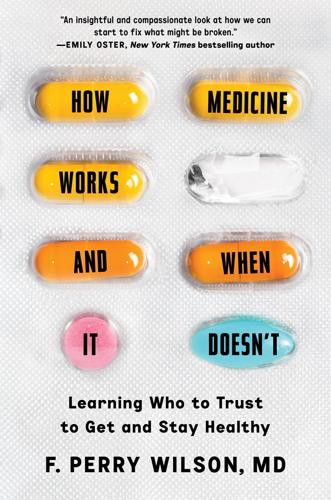
How Medicine Works and When It Doesn't: Learning Who to Trust to Get and Stay Healthy
by
F. Perry Wilson
Published 24 Jan 2023
These emojis were weighted five times as highly as a standard “like”—meaning that posts that elicited emotion were much more likely to be shown to other users, further amplifying their reach. Facebook’s own data, according to leaked files, showed that posts with more negative reactions and comments were spread further. And as the social media “influencer” market grew, individuals became quite adept at creating content that would elicit an emotional response. If all you care about is keeping eyes on your website as long as possible, this approach works beautifully. We can doom-scroll, we can rage-scroll, as long as we scroll. But it hurts us, sowing division, creating anger, creating a false us-versus-them narrative, negatively impacting our politics and our social cohesion.
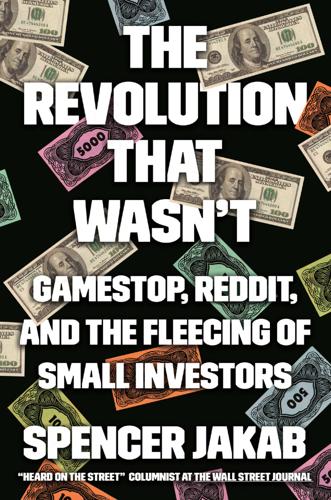
The Revolution That Wasn't: GameStop, Reddit, and the Fleecing of Small Investors
by
Spencer Jakab
Published 1 Feb 2022
It would use artificial intelligence to track fifteen million social media posts per month, according to VanEck.[7] His fund was an immediate success, drawing in more money than almost any previous exchange-traded fund (ETF) on its debut and seeing the third-highest opening volume ever, according to Bloomberg Intelligence. The influencer was using his influence to help a Wall Street firm harness the power of social media influencers and make money by selling that influence to the people most prone to listen to it. The fund’s marketing material declares: Social media and mobile technology have fundamentally changed the way we engage with stocks. There’s a ton of online chatter every day. Changing sentiment and our collective views clearly impact their value.
…
The parade of gaudy numbers had the same effect as late-night infomercials about get-rich-quick schemes that show testimonials by ordinary people in the same demographic as the gullible insomniacs. The people are relatable, yet they claim to have finally paid off all their bills and quit their jobs after ordering the DVDs and following the easy instructions. The concept is called “social proof.” Rachael Cihlar, an influencer marketing expert at Mavrck, which specializes in the field, wrote that, despite a lack of trust in institutions such as governments, the news media, and, in the case of our investments, financial experts, faith in our peers remains high. As our trust in institutions like Wall Street and hedge funds (that have gotten us into trouble before) continues to decline, the power of the people has taken over on social media, or in this case on a specific subreddit.
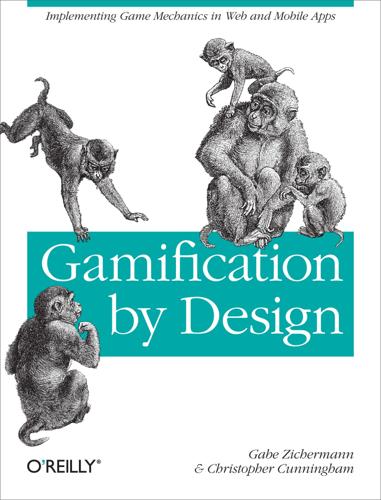
Gamification by Design: Implementing Game Mechanics in Web and Mobile Apps
by
Gabe Zichermann
and
Christopher Cunningham
Published 14 Aug 2011
But by summarizing the complexity of creditworthiness into a single number, anyone from a prospective landlord to a bank clerk can derive meaning from it without needing a Ph.D. in economics. Similarly, Weight Watchers creates a metric that calls on a series of numbers—from body mass index to weight to daily calorie intake—in order to follow the progress of their users who are seeking a healthier lifestyle. In the same vein, Klout—a web service that offers a social media influence score—tells you and others how you rank in influence and importance on Twitter. It doesn’t take into account just a single vector, but rather a series of numbers that are amalgamated into one. Point Systems In gamification, we can leverage one of five point designs to form the foundation of our experience.
…
Flirtation and Romance, Points Systems Health Month fruit bonuses, Points Systems killers (player type), Player Types, Intrinsic versus Extrinsic Motivation, Points Systems competitiveness, Intrinsic versus Extrinsic Motivation problems with, in Health Month badge system, Points Systems Klout, Composite metrics, The infinite leaderboard social leaderboards, The infinite leaderboard social media influence scores, Composite metrics kudos systems, 7. Recognition for Achievement L ladder rewards, Reward collections Lazzaro, Nicole, Why People Play leaderboards, Status, Social networking score, Example: Using a Metaphor, Leaderboards, The infinite leaderboard, The infinite leaderboard, Privacy and Leaderboards, Privacy and Leaderboards, Expert Players of Twitter, Game Mechanics and Dynamics in Greater Depth, 9.

Likewar: The Weaponization of Social Media
by
Peter Warren Singer
and
Emerson T. Brooking
Published 15 Mar 2018
Whatever the physical outcome, the terrorists would win this battle. Luckily, other eyes were tracking the flurry of activity online: those of a U.S. Army brigade’s tactical operations center. The center’s task was to monitor the environment in which its soldiers operated, whether dense cities, isolated mountain ranges, or clusters of local blogs and social media influencers. The fast-moving developments were detected and then immediately passed up the chain of command. The officers might once have discounted internet chatter but now understood its importance. Receiving word of the protest’s growing strength and fury, the colonel cut his meeting short and left discreetly through a back entrance.
…
Singer and Allan Friedman, Cybersecurity and Cyberwar: What Everyone Needs to Know (Oxford University Press, 2014). 9 30,000 foreigners: Martin Chulov, Jamie Grierson, and Jon Swaine, “Isis Faces Exodus of Foreign Fighters as Its ‘Caliphate’ Crumbles,” The Guardian, April 26, 2017, https://www.theguardian.com/world/2017/apr/26/isis-exodus-foreign-fighters-caliphate-crumbles. 9 more than a dozen: Tim Lister et al., “ISIS Goes Global: 143 Attacks in 29 Countries Have Killed 2,043,” CNN, February 12, 2018, http://www.cnn.com/2015/12/17/world/mapping-isis-attacks-around-the-world/index.html. 9 more frightened of terrorism: Andrew McGill, “Americans Are More Worried About Terrorism Than They Were After 9/11,” The Atlantic, September 8, 2016, https://www.theatlantic.com/politics/archive/2016/09/american-terrorism-fears-september-11/499004/. 9 “Twitter wars”: “Israel and Hamas Wage Twitter War over Gaza Conflict,” BBC News, November 15, 2012, http://www.bbc.com/news/technology-20339546. 9 influenced the targets: Thomas Zeitzoff, “Does Social Media Influence Conflict? Evidence from the 2012 Gaza Conflict,” Journal of Conflict Resolution 62, no. 1 (2016): 35. 10 portable cellphone towers: Ben Kesling and Ali A. Nabhan, “Iraqi Forces Seek Help by Restoring Mosul Cellphone Service,” Wall Street Journal, November 1, 2016, https://www.wsj.com/articles/iraqis-seek-help-in-mosul-by-restoring-cell-phone-service-1478030760?
…
: Luke Justin Heemsbergen and Simon Lindgren, “The Power of Precision Air Strikes and Social Media Feeds in the 2012 Israel-Hamas Conflict: ‘Targeting Transparency,’” Australian Journal of International Affairs 68, no. 5 (2014): 581. 195 “Playing war games”: Peter Schorsch, “Israeli Defense Forces Live-Tweets War,” SaintPetersBlog, http://saintpetersblog.com/israeli-defense-forces-live-tweets-war/. 195 “Israeli hunger for pizza”: Ran Boker, “Hamas Hacks Channel 10: ‘Prepare for Drawn-Out Stay in Bomb Shelters,’” Ynetnews, July 15, 2014, http://www.ynetnews.com/articles/0,7340,L-4543596,00.html. 195 nearly 300 messages: Thomas Zeitzoff, “Does Social Media Influence Conflict? Evidence from the 2012 Gaza Conflict,” Journal of Conflict Resolution 62, no. 1 (2016): 29–63. 195 the Hamas spokesperson: Lahav Harkov, “IDF and Hamas Wage War on Twitter,” Jerusalem Post, November 21, 2012, http://www.jpost.com/Features/In-Thespotlight/IDF-and-Hamas-wage-war-on-Twitter. 195 “short bursts”: David Sarno, “Twitter Creator Jack Dorsey Illuminates the Site’s Founding Document.

Stories Are Weapons: Psychological Warfare and the American Mind
by
Annalee Newitz
Published 3 Jun 2024
Responding to pushback from the LGBT community and its allies, DeSantis’s press secretary, Christina Pushaw, declared on Twitter that anyone against these pieces of legislation is “probably a groomer.”18 Not surprisingly, this psyop has created a terrifying environment for LGBT people. Online and on the street, they receive death threats simply for being visible. Perhaps the most absurd example of this came during college basketball’s March Madness festivities in 2023, when transgender social media influencer Dylan Mulvaney posted a sponsored video for Bud Light on Instagram. Mulvaney’s brand is sunny and wholesome—she posts videos of herself offering friendly advice about transitioning, including makeup tips and positive affirmations for when times are hard. She’s amassed nearly two million followers, but is hardly a political movement leader; she’s more like the girl next door, amplified into stardom by Instagram and TikTok.
…
Katy (@kathrynroseee), “Search the latest tweets with ‘who has friends telecommuting into DC’ I want to know what really happened? #dcblackout #dcsafe,” Twitter, June 1, 2020, 8:03 a.m. https://twitter.com/kathrynroseee/status/1267456866856157185. 4. Alizadeh, Meysam, Jacob N. Shapiro, Cody Buntain, and Joshua A. Tucker, “Content-Based Features Predict Social Media Influence Operations,” Science Advances 6, no. 30 (July 22, 2020). 5. See, for example: Newcomb, Alyssa, “A Timeline of Facebook’s Privacy Issues—and Its Responses,” NBCNews.com, March 24, 2018; and Heiligenstein, Michael X., “Facebook Data Breaches: Full Timeline through 2023,” Firewall Times, May 31, 2023. 6.

German Language Learning: This Book Includes: Learn German for Beginners, Phrase Book, Short Stories. Perfect for Travel! Get Fluent and Increase Your German Easily in Your Car or Anywhere You Want!
by
Language Building Lab
Published 4 Jan 2021
- What is your favorite sports team? 26. Was war der letzte Film, in dem du geweint hast? - What was the last movie that made you cry? 27. Was war der letzte Film, in dem du laut gelacht hast? - What was the last movie that made you laugh out loud? 28. Wer ist dein liebster Social Media Influencer? - Who is your favorite social media influencer? 29. Was ist die einzige Nahrung, die Sie für den Rest Ihres Lebens essen können? - What is the one food that you can eat for the rest of your life? 30. Was ist das seltsamste Essen, das Sie je gegessen haben? - What is the weirdest food that you have eaten? 31.

Health and Safety: A Breakdown
by
Emily Witt
Published 16 Sep 2024
In the shade of the Broward County courthouse, a high school junior, X González, gave a speech whose anaphoric refrain “We call BS” repeated itself on cable news networks for an entire day. With their shaved head and green khaki jacket they channeled the androgynous xenomorph-slayer energy of Sigourney Weaver in Alien, avoided social media influencer gimmicks, and seemed uninterested in celebrities or getting into Harvard. These qualities only served to make them the most sought-after trophy for the television reporters, who thronged them whenever they appeared in public. Despite their youth, the students soon became the focus of right-wing conspiracy theories—a video claiming Hogg was a “crisis actor” made it into the “Trending” list on YouTube; on Infowars, Alex Jones called Parkland a “deep state false flag operation.”
…
The typical attendee was white, male, and conservative, but a small group from the New Black Panther Party, which when I looked it up later was described by the Southern Poverty Law Center as “a virulently racist and antisemitic organization whose leaders have encouraged violence against whites, Jews and law enforcement officers,” attracted the attention of conservative social-media influencers, who were seeking evidence that the gun-rights movement didn’t have a race problem. The claim that the overall movement was not racist was belied, however, by the open presence of racists—Proud Boys in yellow sweatshirts, Alex Jones ranting from the top hatch of his black armored truck, far-right internet personalities, including the neo-Nazi Jovi Val.

How Money Became Dangerous
by
Christopher Varelas
Published 15 Oct 2019
Some parents were accused of having shelled out as much as $6.5 million to buy their child’s access to the “side door,” as Singer put it. Sitcom actress Lori Loughlin allegedly paid $500,000 to get her two petite daughters admitted to USC under the guise of their joining the crew team. One of the daughters, Olivia Jade—a social media influencer who decidedly does not row crew—approached college as a marketing platform, striking deals with Amazon Prime and launching a makeup line with Sephora. Before her freshman year began, she posted a YouTube video for her couple of million followers: “I don’t know how much of school I’m gonna attend, but I’m gonna go in and talk to my deans and everyone and hope that I can try and balance it all.
…
To locate a specific entry, please use your e-book reader’s search tools. accountability, 360, 362, 363, 368, 369 acquisitions, see mergers and acquisitions activist investors, 104, 106, 360 see also corporate raiders Adelson, Jay, 228, 240, 242, 244 Adult Video News (AVN) Awards, 218, 219 advertising, 294, 296, 298, 362 social media influencers and, 283, 294–96, 298 AEA, 182 aerospace and defense companies, 118, 124, 125, 137 Conquistadores del Cielo club and, 124–25, 146 “Last Supper” summit and, 124 see also Grumman Corporation; Martin Marietta; Northrop Corporation Aetna, 188 Airbnb, 246 air travel, 299–300 Albert, Mark, 94–95, 96–97 Alcatel, 202 algorithms, 23, 37, 242 All Things Considered, 349 Amateur Athletic Union, 274 Amazon, 233, 246, 292 American Express, 188 American Psycho, 144 American Toxxic Control, 155, 159, 168 Andonian, Nazareth, 16–19, 25–29, 31–36, 38–42 Andonian, Vahe, 16, 39–40 Anschutz, Philip, 212 anti-Semitism, 304 AOL, 237 Apollo Global Management, 165 Armstrong, Michael, 207, 208 Ashe, Danni, 226–27, 231–33, 244, 245 Aspen Institute, 210, 371 Aspin, Les, 124 asset division, 246 AT&T, 190, 196–97 Citi and, 197, 207, 208 IPO of, 197, 198, 207, 208 ATMs, 216–17, 246 Augustine, Norman, 124, 136 Avery, Al, 228, 240, 244 B-2 Stealth Bomber, 118, 136, 138 Bailes, Justin, 331, 332, 335, 344, 345 Bailey, Jeff, 154 bankers, 97, 358 author’s uncle John, 371–73 banks, 247, 259 ATMs at, 216–17, 246 Glass-Steagall legislation and, 189, 200 investment, going public, 52–53 local, managers of, 22 Bank of America: author at, 5, 7, 9–43, 111, 216–17, 285, 358 “five c’s of credit” in training program of, 13, 42 jewelry industry and, 5, 9–35 spreadsheets used at, 19–20, 24 Bank One, 196 Barbarians at the Gate (Burrough and Helyar), 144 Barss, Patchen, 233 B Corp, 105 Beach Boys, 178, 182 Bear Stearns, 118, 146, 188 Bell, Alexander Graham, 190 Bell Labs, 190 Bennett, Bruce, 331, 339 Bertelsmann, 170 Bibliowicz, Jessica, 196 Bieber, Justin, 296–97, 299 Big Brother, 302 Bitcoin, 245, 246, 308 Bizaardvark, 299 Black Monday, 37 Blockbuster, 160 Blockchain, 246 Blodget, Henry, 196, 207, 212, 215 Blyth & Co., 51 Boeing Company, 124 bonds, 50–51, 56, 77–78 high-yield (junk), 91, 93, 96, 97, 104 Salomon and, 50–51, 55–58, 62, 64, 67, 72, 74–76 Bonfire of the Vanities, The (Wolfe), 47, 116, 144 bonuses, see compensation Boob Cruise, 231 Booker, Cory, 340 Borde, Laurence (“Larry Bird”), 54, 55, 79, 203 Brannan, Sam, 230 Bruck, Connie, 93, 94 bubbles, 229, 244, 307, 362–63 crypto, 245–46 dotcom, 175, 211, 214, 228–31, 233–34, 236, 238, 240, 243, 244, 267, 322 education, 292 pension, 353–54 Budweiser, 162 Buffett, Warren, 275, 316, 324 Salomon Brothers and, 68, 75–76, 262–63 Businessweek, 68 cable industry, 96 Caesars Palace, 27–29 California Community Foundation, 347 California gold rush, 230 CalPERS (California Public Employees’ Retirement System), 335–36 Canal+, 170 Caporali, Renso, 119 Carpenter, Michael, 200–201 Carr, Michael, 118, 138, 145 Carter, Jimmy, 154 character, 13, 22–23, 34, 35, 40–43, 358 Chicago Daily Herald, 219 Chinatown, 150 Chrysler, Walter, 74 Cicero, 128 Citadel, The, 48 Citicorp-Travelers merger, 189, 253 Citigroup (Citi), 211, 214–15, 261, 315 AT&T and, 197, 207, 208 author at, 5, 199, 204–5, 211–12 bureaucracy and policies at, 203–4 creation of, 189 culture at, 209, 215, 264, 365–66 culture committee at (Project Passion), 204–6, 211, 264–65, 365–66 Lucent and, 200–201 Prince as CEO of, 208–10 TMT (technology, media, and telecom) group at, 5, 211–12, 253 Weill as CEO of, 188 Weill’s creation of financial supermarket model with, 189–90, 195, 196, 200, 209, 211 Weill’s resignation from, 208–9 Citron, Robert, 315–20, 324, 326, 343–45, 352, 367 Clinton, Bill, 189, 324 cloud, 225, 361 see also data centers Coachella, 292–93, 295, 296 CocaCola, 295 Cocktail, 355 college: admissions scandal, 291–92 financial aid, see student loans Colorado River, 162 COMDEX, 218 Comedy Central, 302 commerce: e-commerce, 232–33, 244, 245 physical world and, 247 CommScope, 201, 202 community and human contact, 233, 247, 307, 309, 358, 361 diminishment of, 216, 246–47 engagement with, 369–70 Compagnie Générale des Eaux, 169 compensation, 248–79, 361 and aligning incentives with investment horizons, 364 annual cycle of, 270–71 author’s bonuses, 248–51, 266–70 of CEOs, 275–76 and complexity and opacity of purpose, 260–61 contentment and, 268–70, 278–79 culture tied to, 205–6, 257–58, 264–65 and “having a number,” 251–53, 263–64, 274, 277, 278 reactions to bonus amounts, 256–59, 270 Salomon bonuses, 64, 248–51, 253–59, 262–63 talent and skills and, 261–62 transparency in, 260, 269, 270, 275, 361–62 CompuServe, 237, 241 computers, 38 algorithms, 23, 37, 242 Black Monday and, 37 spreadsheets, 19–23, 24, 37, 360 ConQuest, 221 Conquest of Happiness, The (Russell), 248 Conquistadores del Cielo, 124–25, 146 Consumer Electronics Show (CES), 217–19 Conway, Cathy, 109–12 Corbat, Michael, 315, 324 Corning Inc., 201 corporate raiders, 82, 84, 88, 89, 94, 96, 103–4, 360 as activist investors, 104, 106, 360 in Pretty Woman, 98, 100–102 see also hostile takeovers credit: five c’s of, 13, 42, 205 spreadsheets used for analysis in, 19–20, 24 worthiness, 22 credit cards, 233 in e-commerce, 232–33, 244, 245 Credit Suisse, 263–64, 273–74, 340 Crisanti, Jim, 203 cryptocurrencies, 245–46, 308 Culligan, 164–68, 182 currency(ies), 245–46 cryptocurrencies, 245–46, 308 phone minutes as, 245 Cutler, Carol, 207 Daily Stormer, 304 Danni’s Hard Drive, 226, 227, 231–33 data centers, 224–25, 227–28, 231 Equinix, 228, 230–31, 237–47 “naked woman in the server room” story and, 223–26, 232 security at, 225 Davis, Mark, 156–58, 165, 166, 221–22 DEA (Drug Enforcement Administration), 31–33, 34, 39, 40 Deasy, John, 351 DEC (Digital Equipment Corporation), 227–28 defense and aerospace companies, see aerospace and defense companies Defense Department, 124 Denham, Bob, 324 Denny’s, 154 Depression, Great, 51, 189 derivatives, 316–19, 324 de Vries, Peter, 81 Diamond, Neil, 321 diamond and gold wholesalers, see jewelry industry Diamond Club, 15 Dii Group, 213 Dimon, Jamie, 196, 197 Disney, 81–90, 85, 86, 111, 304 Eisner at, 88, 89, 109 Epcot Center, 86 films, 88, 102, 148–49 Steinberg’s hostile takeover attempt, 81–84, 86–91, 98, 102–4, 111 Touchstone Pictures, 88, 102 Disney, Roy, 85 Disney, Walt, 84–86, 87, 103, 112 Disney Channel, 299, 301, 302 Disneyland, 84, 85, 103, 112, 148, 288–90, 314 author’s career at, 4, 5, 10, 11–13, 40, 45, 61, 71, 81–85, 89–90, 106–12, 148, 158, 289, 290 Café Orleans at, 81, 106–12, 289 in Pretty Woman, 106 privilege and, 289–90 Disney World, 85–86 Dominguez, Bernardo, 132 Dominica, 285, 286 dotcom bubble, 175, 211, 214, 228–31, 233–34, 236, 238, 240, 243, 244, 267, 322 Doughty, Caitlin, 301 Douglas, Michael, 98 Drexel Burnham Lambert, 91–96, 188 author’s offer from, 91, 93, 94–95 bankruptcy of, 96 Milken at, 91–94 Ducasse, Alain, 168, 169 Dunkin’ Donuts, 294 earthquake, Whittier Narrows, 34–35 eBay, 233 Ebbers, Bernie, 212, 238 e-commerce, 232–33, 244, 245 Economic Consequences of the Peace, The (Keynes), 280 Economist, 245 Eisner, Michael, 88, 89, 109 Elmassian, George, 25, 31, 32, 34, 38 Elmassian, Richard, 25, 31–33, 38 Enron, 171, 177 Epcot Center, 86 Equinix, 228, 230–31, 237–47 Escobar, Pablo, 39 Euripides, 9 Evoqua, 182 exchange-traded funds (ETFs), 105 F9 mistake, 127 Facebook, 294, 305 Family Ties, 97–98 Fargo, William, 230 Federal Reserve, 370 FedEx, 127 Feuerstein, Don, 57 FICO score, 22 Finance Leaders Fellowship program, 371 financial crisis of 2008, 1–2, 7, 76, 211, 215, 259, 307 Equinix and, 242 financial supermarkets and, 211 see also Great Recession financial supermarkets, 204, 214–15, 361 financial crisis and, 211 Weill’s model of, with Citi, 189–90, 195, 196, 200, 209, 211 financial system, financial industry, 6, 328–30 causes of society’s dysfunctional relationship with money, 359–63 citizens’ disconnection from government finance, 328–29, 343–44, 351, 353, 362 clashes sparked by financial unrest and collapse, 355–58 compensation in, see compensation complexity of, 260–61, 277 estimated worth of financial instruments in the world, 209 net financial burden, 329–30 people’s feelings about working in, 277 preppers and, 306 see also Wall Street financial system, reform of, 363–64 accountability for public officials, 369 action items for banking system and investment management, 364–66 action items for each of us, 368–70 action items for government, 366–68 changing compensation structures to align incentives with investment horizons, 364 community engagement, 369–70 creating federal-level oversight or review board for pension systems, 366–67 creating independent review processes, 364–65 education in financial and economic matters, 368 forming culture or values committees, 365–66 requiring finance background for treasurers and other financial officers, 367 simplicity of regulations, 367–68 Fiorina, Carly, 190, 194–95 Fitzgerald, F.
…
Filter, 153, 162, 164–68, 172, 179 Weill and, 188–89, 196 see also hostile takeovers meritocracy, 60–61, 310, 362 Meriwether, John, 57, 59, 60, 62–64, 66–68, 76 Merrill Lynch, 51, 190, 191, 196, 207, 345 Citron and, 316, 318, 319, 343, 344 Messier, Jean-Marie, 168–70, 175–76 Heckmann and, 168, 169, 173, 174 Messih, Robert, 198–200, 212 Mestre, Eduardo, 119–23, 136, 138, 145–46 Meyer, Ron, 169 Microsoft Windows, 218–19 Milken, Michael, 91–94, 96–97, 104 background of, 91–92 at Drexel, 91–94 indictment and prison sentence of, 92, 96, 104 Predators’ Ball of, 93–94 reinvention of, 104 Millennials, 294 Miller Brewing Company, 162 mission statements, 103 Modern Monetary Theory (MMT), 330 money laundering, 31–33, 38–40 Monkey Bar, 70–71 Morgan, Cristina, 199 Morgan Stanley, 133, 196, 215 cocktail reception of, 69–70 Morgan Stanley Dean Witter, 209 mortgage market, 21 mosque shooting, 304–5 Mozer, Paul William, 55–58, 62, 64, 67–69, 72, 74–76, 262 Mozer rule, 56 MTV, 302 Murray, Angela, 204 Napoleon III, 169 National Institutes of Health, 303 National Investment Bank, 5 Netflix, 160 Newsday, 137 New Yorker, 196, 212, 306 New York Post, 290 New York Stock Exchange (NYSE), 176, 268 New York Times, 59, 167, 209, 302, 303–4 New York Times Magazine, 84 New Zealand: mosque shooting in, 304–5 preppers and, 306–7 Nietzsche, Friedrich, 44 9/11 terrorist attacks, 176, 235–36 92nd Street Y, 207–8 Nokia, 202 Northrop Corporation, 113, 118–19, 125 B-2 Stealth Bomber, 118, 136, 138 Grumman’s negotiations with, 119–24, 136–38, 142–43, 145–46 Northrop Grumman Corporation, 146 Notre Dame, University of, 151–53 NYFIX, 242 Obama, Barack, 340 Occidental College, 4, 11, 81, 83, 89, 99, 111, 287 Oftelie, Stan, 334 Operation Desert Storm, 114 Operation Polar Cap, 39 Oracle, 261 Orange County, Calif., 4, 312–19, 323–28, 330–36, 342–45, 351–52, 365 Citron in, 315–20, 324, 326, 343–45, 352, 367 pension system in, 345 Project Robin Hood in, 331–33 Orange County Register, 315 Orange County Transportation Authority (OCTA), 334–35 Orwell, George, 210 Osnos, Evan, 306, 307 other line, see privilege ownership, asset division and, 246 Oyster Bay golf outings, 134–36 PAIX (Palo Alto Internet Exchange), 223, 228 Partinoli, Dave, 185–86 Patriot Bank, 372–73 Paul, Jake, 282–83, 295, 299, 301–2, 305 Paul, Logan, 282–84, 293–96, 299–303 PayPal, 233, 307 Pendergrass, Kristina, 336 pension systems, 335–39, 353–54, 359 accountability and, 369 in Orange County, 345 oversight or review board for, 366–67 in Stockton, 335–36 Penthouse, 244 PeopleSoft, 261 Perez, Monalisa, 303–4 pets.com, 229–30 PewDiePie, 304–5 Pfefferman scandal, 31 phone minutes: as currency, 245 see also prepaid calling cards Podesto, Gary, 320, 321 pooling, 170–72, 176 pornography, 218, 219, 233, 244 Danni’s Hard Drive site, 226, 227, 231–33 portfolio insurance, 37 poverty, 349 Predators’ Ball, 93–94 Predators Ball, The (Bruck), 93, 94 prepaid calling cards, 220–21, 223, 245, 246 SmarTalk, 218, 221–23, 244 preppers (survivalists), 305–8 Pretty Woman, 98–103, 106 Prince, Chuck, 208–10, 211 private companies, 177 Private Jet Studio, 303 privilege, 280–310, 362 air travel and, 299–300 Disneyland and, 289–90 education and, 291–92 extended across generations, 291 healthcare and, 291 social media influencers and, 283–84, 291–99, 301–3, 305 Project Passion culture committee, 204–6, 211, 264–65, 365–66 Project Robin Hood, 331–33 Purcell, Tom, 133, 325 Purpdrank, Jerry, 295 quarterly earnings expectations, 177–78 of Lucent, 194 of U.S. Filter, 162–63, 168, 170, 172, 174, 175 Quattrone, Frank, 263, 274 Qwest, 212 Reagan, Ronald, 317 Recession, Great, see Great Recession Reed, John, 189, 208 regulations, simplicity of, 367–68 retirement: saving for, 370 see also pension systems review processes, 364–65 Richards, Ann, 1 Rigoli, Andy, 236–41 Ripley, William Zebina, 74 Roberts, Julia, 98, 100–102, 106 Roche, Jim, 113–14 roll-up companies, 153, 167 Ross, Diana, 94 Rowan, Marc, 165 Rowland, Frank Sherwood, 99 Rubenstein, Adam, 220–21 Rubin, Bob, 195 Ruiz, Pedro, III, 303–4 Russell, Bertrand, 248 Russia, 303 Salomon, Arthur, 50 Salomon, Billy, 51, 58–59, 64, 68 Salomon, Ferdinand, 50 Salomon, Herbert, 50 Salomon, Percy, 50 Salomon Brothers, 44–80, 97, 237 analyst staffing at, 131 author at, 5, 44–50, 54, 55, 59–62, 64–66, 70–74, 76–80, 90–91, 94, 95, 101, 114, 115, 118–24, 126–36, 145–46, 148, 149, 156–83, 195–207, 229, 236, 248–59, 265–70, 277, 284, 286, 314–15, 323–28, 330–35 author’s sister at, 134–36, 259 bond market and, 50–51 bonuses at, 64, 248–51, 253–59, 262–63 Buffett and, 68, 75–76, 262–63 Citi and, 195–98 culture at, 52, 61–62, 75, 206, 215 diversity at, 47, 60 Equinix and, 241 F9 mistake and, 127 “Fortune Cookie Meeting” at, 120–23, 126 founding of, 50 golf outings of, 134–36, 259 Gutfreund at, 57–60, 63, 67–68 image consciousness at, 145 investment banking department of, 114–15, 126–27 IPO spinning and, 199–200, 210, 212 Lucent and, 190, 195, 200–202 luncheon events of, 114 M&A department of, 116, 118, 119, 128–29, 131, 180, 190, 195, 199, 200, 229, 259 as meritocracy, 60–61 Meriwether at, 57, 59, 60, 62–64, 66–68, 76 Mestre at, 119–23, 136, 138, 145–46 Mozer at, 55–58, 62, 64, 67–69, 72, 74–76, 262 Northrop and, 113, 118–19, 125 Northrop-Grumman negotiations and, 119–24, 136–38, 142–43, 145–46 Orange County and, 314–15, 323–28, 330–35 Papa at, 128–30 as private partnership, 51, 63–64, 75, 76 recruitment cocktail party of, 78–80 risk taking at, 53 SmarTalk and, 221–22 Soenen at, 115–18, 131–35, 259 Soenen’s relationship troubles and, 138–43 transition to public corporation, 52, 55, 59, 64, 68, 75, 76 Travelers’ acquisition of, 253 Treasury bond scandal at, 55–58, 62, 64, 67, 72, 74–76, 262 U.S.
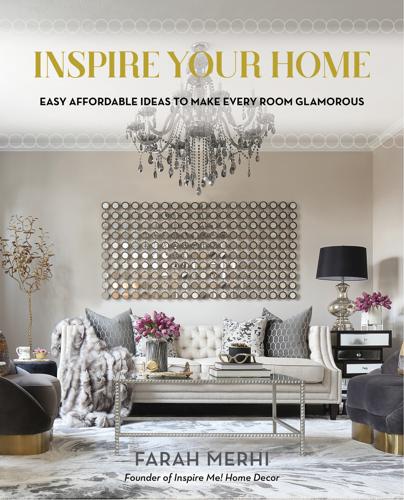
Inspire Your Home
by
Farah Merhi
Published 22 Oct 2019
And to every single friend and person who has been a part of my life and helped shape me into who I am today. There are so many, but you know who you are. A special thank-you to Eastbrook Homes and Knoll Townhomes for allowing me into their beautiful builds for additional photography. ABOUT THE AUTHOR Farah Merhi is a designer, author, entrepreneur, social media influencer, and the founder and CEO of Inspire Me! Home Decor. It all started in 2012 as a creative outlet. Farah had a clear vision of what she wanted to do: inspire others and give them the tools they needed to make their houses into beautiful homes. She believes one’s home should be a source of inner peace.

Can't Even: How Millennials Became the Burnout Generation
by
Anne Helen Petersen
Published 14 Jan 2021
But there’s a reason I sometimes find myself scrolling through my own account as I fight that before-sleep anxiety: When I don’t feel connected to myself or my life, Instagram reminds me of who I’ve decided I am. For knowledge workers, a well-curated Instagram, like a popular Twitter presence, can be a gateway to a job, or #sponcon. The purest example of this concept is the social media influencer, whose entire income source is performing and mediating the self online. Most people’s lives aren’t so explicitly monetizable, but that doesn’t mean they’re not cultivating a brand to project to the larger world. To wit: I have a friend whose brand is “Parenting is hard but always worth it.”
…
Norton, 49 Guendelsberger, Emily, 134–35 Hacker, Jacob, 8, 11–12 Hairpin, 140 Harried Leisure Class, The (Linder), 191 Harris, Malcolm, 32, 50, 52, 238 Harvard University, 9, 45, 57–58, 124 Hays, Sharon, 31 health insurance, xviii, xx, 111, 120, 133, 138–39 Herrman, John, 173 “Higher Education for American Democracy,” 48 high school experience, 33, 45, 47, 54–60, 62–65 Hippocrates, xvii Ho, Karen, 114, 123–26 Hochschild, Arlie Russell, 211 Hollis, Rachel, 241 hope labor, 78–79, 82, 84, 86, 91 hours of work, 189, 191 How Not to Hate Your Husband After Kids (Dunn), 241 How to Do Nothing (Odell), 204 human capital, 50–53 Hyman, Louis, 7, 100, 102, 121–22 Indeed.com, 71 In Search of Excellence, 73 Instagram automatic refresh, 156 boomers response to Trump, 167 burnout and, 159–61 digital labor, 172 experiences displayed, 154 gateway to a job, 163 jealousy photos, 162 low-effort distraction, 164, 180, 193, 251 multitasking, 176 my posts, 149, 151 one’s brand, 181, 192, 198, 202, 222–23 parenting threads, 210, 222, 241 sales medium, 187 unrewarding part-time job, 165 internships competition for, 79–80 Disney College Program, 72 during Great Recession, 78 supply and demand, 71 unpaid or low paid labor, 12–13, 78–79, 82, 84 iPhone, 154, 157 Japan, fertility rate, 248–50 Job, The (Shell), 82, 132 jobs, anecdotes Alex, pastoring, 81 Elizabeth, Disney job, 72 Emma, temp librarian, 90–91 Erin, tech job, 82–83, 85, 88 Greta, cool jobs, 70 Hiba, journalist, 86–87 Jess, nonprofit foster care job, 89 Michael, creative work, 70 Rooney, meaningful work, 70 Samantha, grocery store manager, 88 Sofia, unpaid internships, 79–80, 89 Stephanie, writing for free, 75–77 Jobs, Steve, 69 jobs anecdotes, race and identity Black, 70 Latina, 72 Middle Eastern, 82 mixed race, 89 Pakistani, 86 white, 70, 79, 81, 90 white and Asian, 75 Johns Hopkins Center for Talented Youth, 55 Journal of Black Studies, 143 Kessler, Sarah, 143, 145 Kethledge, Raymond, 165 Keynes, John Maynard, 183 Kids These Days (Harris), 32, 52 Kimmel, Michael, 228 Klinenberg, Eric, xx, 200 Kuehn, Kathleen, 78 Kurtz, Adam J., 69 Lareau, Annette, 22–24, 31 Laverson, Marvin, 49 lean corporations, 106–7 Legally Blonde (film), 70 leisure anxiety and fear over, xv, 180–82 aspirational class and, 192–95 burnout and, 182 capitalism, influence, 191–92 digital labor, 172 free time, 32, 181 guilt for time off, 188–89 history of, 182–83 hobbies, 195–99, 224 social media substitution, 164–65 See also social networks leisure time, anecdotes Aly, perfectionist, 196 Claire, too tired, 203 Ethan, Dungeons and Dragons, 197 Gina monetize hobbies, 197–98 Janique, monetize hobbies, 197 Jimmy, monetize all activities, 198 Lara, hobbies abandoned, 196–97 Meghan, too tired, 202 Rosie, cost of activities, 202 Teresa, gaming group, 201 leisure time anecdotes, race and identity Asian American, 197 Black, 197 Jewish, 196 white, 196, 202 “Less Sex, Fewer Babies,” 247 Levinson, Marc, 9 Liberal Parents, Radical Children (Decter), 9 Linder, Staffan B., 191–92 LinkedIn, 51, 151, 159 Live Action Role Play (LARP), 173–74 See also Slack LiveJournal, 56, 140 Lockheed Martin, 73 Lockman, Darcy, 226–30, 241 Lorde, Audre, 241 Lorenz, Taylor, 2 love what you do fallacy, 69–72, 86–90 Lowrey, Annie, vii, x, 77 Manhood in America (Kimmel), 228 Manjoo, Farhad, 142, 147 Martin, Sara, 73 McDonald’s, 110–11, 220 McKinsey & Company, 74, 121–22 Meyer, Marissa, 240 Microsoft, 130, 188 middle class bootstrap narrative, 15 expansion and contraction, 3, 6, 113–14 Personal Responsibility Crusade, 15–16 postwar expansion and, 11 renewal of, 10 success best practices, 51–52 middle class security blue collar middle class, 61 downward mobility, 37, 41–44 millennials and, viii, 34–35 yuppie strategy, 39–40 See also under boomers millennial family anecdotes Caitlin, activities and stress, 21–22 Marshall, Stacy, fear of downsizing, 23 Stefanie, free time, 22 Talinger, Garrett, overscheduled, 23–24 Yanelli, “Little Billy,” 23 See also concerted cultivation millennial family anecdotes, race and identity biracial, 21 Black, 23 white, 22–23 millennial goals calling, 81–82 Calvinist outlook, 81 revised goals, 76–77 well-paying and cool jobs, xix, 68–69, 75–76, 87, 90–92 millennials, description, xviii–xix, xxi Miller, Katherine, 166–67 missing children, 30–31 Mommy Burnout, 241 Mose, Tamara R., 236–38 Mull, Amanda, 71 Mullainathan, Sendhil, 233 multitasking, 98, 158, 215, 221, 226, 232 National Commission on the High School Senior Year, 49 National Labor Relations Act, 5 National Public Radio (NPR), 149, 192, 247 Nemoto, Kumiko, 249 Netflix, 35, 154, 156, 199 networking, 79 Newman, Katherine S., 37, 42, 44 Newport, Cal, 165 news cycle, xxi, 166–68 Newsweek, 18 New Yorker, 128 New York Magazine, 5 New York Times, ix, 2, 109, 133, 169, 185, 192, 194, 249 Nisbet, Robert, 9 Obama, Barack, 137 Odell, Jenny, 204–5 “Old Economy Steve,” 2 Our Kids (Putnam), 199 Overachievers, The (Robbins), 46 “Overprotected Kid, The” (Rosin), 30 overseas labor, 112 Overwhelmed (Schulte), 222, 224 overwork cult blame for, 128–29 culture of Wall Street, 123–25 free food, 73, 123 history of, 73–74 in Japan, 249–50 motivation for burnout, 126 workplace competition, 75 See also productivity; Silicon Valley Overworked American, The (Schor), 185 Palaces for the People (Klinenberg), 200 Panichkul, Erin, 80 parenting breastfeeding and healthy diet, 218–19 dangerous world, 210 distribution of labor, 226–32 downward mobility and, 210, 235–39 economic insecurity and, 232–36 expectations and class differences, 216–20 fathers’ roles, 212, 225–26 having children, 243–48 Instagram parenting, 222–23 leisure time and, 230 mothers’ roles, 220–24, 227 patriarchy and choice, 210–11, 242 playdates, 236–38 second shift, 211–12, 223 special needs children and, 234 time alone, 225, 231 unsupervised children or paid care, 212–15 parenting anecdotes Alexa, East Coast pressure, 236 Alissa, responsibilities, 226 Amy, guilty, 225 Amy, parenting burnout, 208 Amy, playdates, 237 Brooke, resentment, 226 Casey, bankruptcy, 235 Celia, housewife busy-work, 223 Cheryl, burnout stress, 234 Christine, outside interests, 225 Debbie, responsibilities, 227 Erika, and Pinterest, 224 Jennifer, responsibilities, 230–31 Jenny, parenting burnout, 208 Jill, division of labor, 229 Julie, East Coast pressure, 239 Kaili, guilty, 221 Katie (Atlanta), alone time, 225 Katie (Atlanta), self-sacrifice, 222 Lauren, British to US, 208 Lauren, burnout stress, 234 Lauren, college student, 221 Lisa, resentment, 207 Lorraine, stay-at-home mom, 233 Marie, alone time, 225 Meredeth, burnout stress, 234 Meredith, rage, 235–36 Nana, single parent, 233–34 Petersen, Anne Helen, 243–45, 247 Rachel, and Pinterest, 224 Renee, resentment, 229–30 Sara, division of labor, 229 Sara, partner leisure, 230 Sara, resentment, 230 Sarah, resentment, 229 Sasha, Instagram Mom, 222 Stephanie, burnout stress, 234–35 parenting anecdotes, race and identity Hispanic, 226 Jewish Israeli, 233 Latina, 223, 234 queer cis-gendered woman, 230 white, 208, 221–22, 225–26, 233–35, 237, 239 white, queer, and neurodivergent, 234 parenting burnout, 208–10, 234, 241 Patagonia, 240 Patz, Etan, 30–31 “Personal Responsibility Crusade,” 11 Pew Charitable Trusts, 14 Pew Research Center, xvii, xxiv Pinterest, 158–59, 163, 176, 224 Playdate, The (Mose), 236 Pod Save America, 194 precariat, viii, 96–98, 128 private equity and venture capital, 104–6, 143 productivity apps for, xxvi, 155, 173 corporate goals, 113, 125 distractions and, 175–76 doing nothing, 204–5 history of, 186 sleep and, 127 working hours, 185 workweek and, 184–88 See also overwork cult; surveillance professional jobs, 62–63 ProPublica, 169 Putnam, Robert, 199, 202 QuikTrip, 115–16 racial discrimination essential or expendable workers, ix helicopter parenting and, 35–37 limitations to government programs, 7 programs directed to white males, 15 Reagan, Ronald and Reagan administration, 11, 15–16, 31 ReCode Decode, 146 Reddit, 2, 130, 159 “relative-deprivation theory,” 229 retirement 401k and, 14, 76, 103, 112, 114, 139, 243 defined contribution plans, 14 pensions, 13–14, 103 union pensions, 7 See also Social Security Riveted (Davies), 167 Robbins, Alexandra, 46 Roosevelt, Franklin D., 5 Rosenblat, Alex, 141, 145 Rosenfeld, Jake, 6 Rosin, Hanna, 30–33 Sabbath World, The (Shulevitz), 190 Salomon Smith Barney, 126 Sarnecka, Barbara W., 213 Scarcity (Mullainathan), 233 Schneider, Barbara, 62–63 Schor, Juliet B., 185 Schulte, Brigid, 222, 224 second jobs, 79–81, 102–3, 144, 186 See also gig and freelance work; Uber and ride-hailing companies Second Shift, The (Hochschild), 211 sexual harassment, 109–11 Shafir, Eldar, 233 Sheehan, Dan, 3 Shell, Ellen Ruppel, 82, 132 Shils, Edward, 9 Shulevitz, Judith, 190 Silicon Valley, 73–74, 141, 172, 187 Skimm, 194–95 Slack, 130, 149–51, 158, 171–74, 176 sleep, lack of burnout and, xvi children, 34, 46, 58 motherhood and, 224 Silicon Valley, 73 stress and, 127–28 Small Animals (Brooks), 213 Snapchat, 156, 159 social media addiction to, 156–58, 170–71 anxiety from hatefulness, 168–69 digital labor, 172 dramatization of news, 169–70 social media influencer, 163 social networks, 199–202 Social Security early history, 7 freelancing and, 139 key economic risks, 8 minimal benefits, 14 postwar expectation, 13 Social Security Act, 13 Spire Stone, 133 Standing, Guy, 96–98, 145–46 Stephens, Bret, 10 Stevenson, David, 62–63 stock market, 103–4, 106, 112, 114 Stockton, Nick, 170 Stoller, Matt, 105 St.
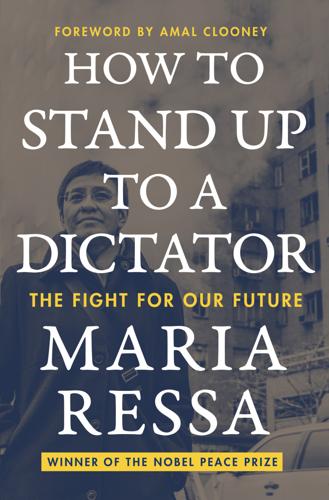
How to Stand Up to a Dictator
by
Maria Ressa
Published 19 Oct 2022
“Ninety-seven percent of Filipinos on the internet are on Facebook, Mark!” I exclaimed, hoping, in part, that that tidbit might entice him to visit. Perhaps then he would better understand the problems we were beginning to see: how journalists were coming under attack and how the government had hired social media “influencers” to wage its propaganda war. Mark was quiet for a beat. Maybe I had been too pushy. “Wait, Maria,” he said, looking directly at me, “where are the other three percent?” I wasn’t the only one speaking out. Numerous people, from presidents to civil society to journalists all around the world, began warning Facebook that it was ravaging our democracies.
…
His disinformation network also hijacked popular pages and news groups with copied-and-pasted comments that slowly chipped away at the legacy of the Aquino family, long seen as his family’s nemesis—all the while rehabilitating the image and the role of the Marcoses. The network, which crossed from websites to Facebook pages and groups, YouTube channels, and social media influencers, pumped out propaganda on a massive scale to first downplay or outright lie about the Marcos regime’s excesses, kleptocracy, and human rights violations, exaggerate Marcos’s achievements, and vilify critics, rivals, and mainstream media. The creation of Marcos pages on Facebook began to ramp up in 2014, shortly after Imelda Marcos hinted about a Marcos return to the presidency.25 In a post from 2014 on the popular Facebook page Pinoy Rap Radio, Marcos Jr. claimed that there was no proof of the Marcoses’ stolen wealth and that his mother had “won every corruption case” against her.
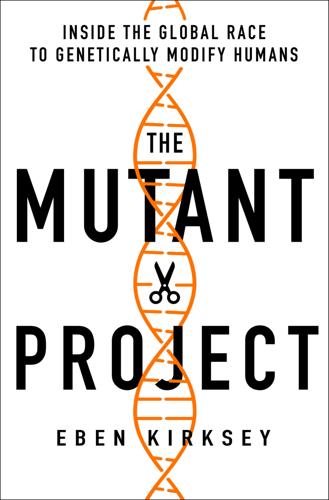
The Mutant Project: Inside the Global Race to Genetically Modify Humans
by
Eben Kirksey
Published 10 Nov 2020
The spectacular rise of Jiankui He seemed to fit the story line of the “China Dream”—an official national policy that aims to displace the status quo of Western modernity and replace it with an Asian future. 2 THE CHINA DREAM Public opinion about Dr. He’s experiment was still forming as I wrapped up brunch with Helen O’Neill and headed to mainland China. Some social media influencers were repeating Beijing’s initial message: that Jiankui He had achieved what others only imagined, outpacing the international competition, bringing glory to the nation. “Pioneers will always be the target of an attack,” in the words of one viral post. Another said: “New things will always be questioned and criticized.”1 But many others saw the experiment as a national disgrace: “This is unfortunate for the children, it is unfortunate for China, and it is unfortunate for mankind.”
…
He was ordered to stay quiet while criminal and ethical investigations were under way. 23 BUBBLES VANISHING INTO AIR As the Chinese authorities investigated possible wrongdoing by Dr. Jiankui He, the families who participated in the experiment became swept up in the inquiry. Some Chinese social media influencers blamed the volunteers, saying that they should be burned or even shot to death. One couple who participated in the experiment made a bold rebuttal in a letter addressed to the judge who was overseeing the investigation: “Is the negative impact of these comments even greater than the research itself?”

Green Gold
by
Sarah Allaback
Published 14 Mar 2025
APEAM, the association of Michoacán avocado packers and growers, has responded by beefing up security, supporting local efforts to deter cartels, investing in local schools, building a $12 million office complex to house APEAM and USDA officials, and highlighting the industry’s strengths and positive contributions through studies and media campaigns. They’ve also hosted guided tours through the region for social media influencers, food-industry executives, chefs, and international visitors. In 2017, twenty California growers visited Michoacán on a trip cosponsored by APEAM and the California Avocado Society. A Carpinteria farmer who attended said he felt safe and was impressed by the lush scenery, the hospitality, and the expansive packinghouses that boxed Hass avocados round the clock.
…
Working with Mexican Hass avocado importers from Fresh Del Monte and Stonehill Produce, store produce director Lou Rotell orchestrated the delivery of 301,000 avocados weighing 86,764 pounds to set the Guinness World Record for the largest avocado display in history, breaking a record set in 2019 by a Louisiana market. “Folks wanted their pictures taken in front of it,” social media influencers filmed the event, and children stared, mouths agape, Rotell said. “It was a hoot.” He later sold the bounty at five for a dollar and gave unsold fruit to a food pantry.4 Marketing schemes like these capitalize on two significant demographic shifts. The first was the coming of age of the millennials, a cohort of more than 72 million people—the first generation in the United States to be raised with the avocado as a mainstream product.

Paper Girl: A Memoir of Home and Family in a Fractured America
by
Beth Macy
Published 6 Oct 2025
“And when you really call certain parents out on it, they take their kids out of school and do online school, or they say they’re ‘homeschooling’ them.”[13] Friends Hunter Woodruff, eighteen and a tenth grader, with Dalton Dorsey and another friend from a neighboring school district on a hot August afternoon a few blocks from Urbana’s Monument Square. According to a recent survey of UHS students, the No. 1 goal of Urbana’s teens was to become a social media influencer. “For the first time in history, the individual is the basic unit of society,” the journalist Bill Bishop, the author of The Big Sort: Why the Clustering of Like-Minded America Is Tearing Us Apart, from 2008, told me. “People don’t want community; they want a platform.”[14] The scramble for burnished egos and platforms had been orchestrated by far-off tech bros, billionaires who addicted us to amped-up outrage that pitted us against one another and made it downright impossible for us to collaborate on our shared economic concerns.
…
See guns weapons of mass destruction, 181 Wears, Cheryl, 243, 278–79 Webb, Kelsey, 199 welding, 65, 199 James, Silas Cole, with, 3–4, 94–95, 95, 100, 103, 103, 138, 188–89, 244, 258–59, 261 wages, 3–4, 103, 259 well-being, human, 46 Weller, Justin, 157, 297–98 with Urbana mayoral election, 154, 155, 267–68, 270 as Urbana Youth Center director, 154–56, 155, 265–68, 270–72, 272, 283 Weller, Tim (father), 271 West Liberty, 147, 148, 198, 200, 223 West Virginia, 40, 57, 104, 115, 149, 208 White, Addison, 29–30, 31, 32 white-collar workers, 112 white-identity politics, 81 whiteness, 257 white people, 80, 182, 185, 304 Christian nationalists, 81, 117, 160, 184, 254–57 evangelicals with violence, 255 racial replacement of, 176, 187, 307 women, 82, 84–85, 169 white supremacy, 168, 176, 207, 228 Wilberforce University, 150 wildfires, 161–62 Williams, Dixie Irene, 72 Williams, Isabella, 269 Wills, Art, 155 Wilson, Linn, 73, 151, 154 Wilson, Roger (husband), 73, 151–52 Winfrey, Oprah, 174 Wisconsin, 45, 48, 91, 157, 250 woke, 64, 81, 110, 165 women, 63, 83, 113, 149, 275, 305, 306 abortion and, 120–21, 159, 160, 163, 267 Christian nationalists, 81 Moms for Liberty, 196, 274 patriarchy and, 119, 125, 135 Trump with, 183 white, 82, 84–85, 169 Woodruff, Hunter, 1, 68 workers, 48, 112 absenteeism, 91, 187–88 blue-collar, 47, 113, 211 flextime for, 91 Haitian, 274, 291–92 layoffs, 46–47, 54, 63, 70, 84, 157, 182 McDonald’s, 93, 96, 99, 103, 138 public schools, 90, 159, 214–15 shortage, 75, 91, 188, 200, 202–3, 269 social, 38, 108, 208–9, 214 threats against government, 110 Urbana Youth Center, 148, 270 working class, 74, 80, 145, 249 World Trade Organization, 46, 202 World War II, 23, 23, 33, 79, 307, 309 Wright, Orville, 7 Wright, Wilbur, 7 Y Yellow Springs, Ohio, 149–50, 190 Yoder, Natalie, 191, 263, 263–67, 266 youth, 15, 89, 116, 179. See also children; students; Urbana Youth Center construction wages, 268 juvenile detention, 68, 219 mental health and, 68, 92, 108, 158, 270 overdosing, 73 as social media influencers, 69 suicides rates, 68, 78, 89–90, 108, 197 with “unruly” charges, 217 YouTube, 15, 178, 180, 186, 293, 306 Z Zuckerman, Diana, 127, 283 A B C D E F G H I J K L M N O P Q R S T U V W X Y Z About the Author Beth Macy has won more than two dozen national journalism awards, including a Nieman Fellowship for Journalism at Harvard University, a Guggenheim Fellowship, and a Los Angeles Times Book Prize for Dopesick, which was made into a Peabody Award-winning series for Hulu.

Fixed: Why Personal Finance is Broken and How to Make it Work for Everyone
by
John Y. Campbell
and
Tarun Ramadorai
Published 25 Jul 2025
Clamp Down on Conflicts of Interest Because the financial system is so unintuitive for most people, they are unusually receptive to advice in this domain. That advice may come from people with job titles like “financial adviser” or “investment adviser,” who recommend investment strategies as well as purchases of particular financial products; but it may also come from brokers or salespeople in financial companies, or even from social media influencers (“finfluencers” in the financial context, who are usually unreasonably attractive messengers delivering highly questionable content).60 Many of the people who offer advice receive compensation for directing their clients or followers to specific financial products—usually expensive ones that are profitable for their producers and bad deals for customers.
…
See also retirement savings savings accounts: linked to transaction accounts, 239; prize-linked, 223, 240, 241; in starter kit, 239–241 scams: cryptocurrency, 188, 303n23; pension, 68, 277n33 Schneider, Rachel, 80 Schumer, Charles, 205 Schumer box, 205–206 second-order stochastic dominance, 296n39 secured debt, mortgages as, 100 Securities and Exchange Board of India (SEBI), 309n39 Securities and Exchange Commission (SEC) (US), 216 self-insurance, 295n34 SEP-IRA account, 297n7 shares, people with limited resources owning, 8 Sharpe, William, 131 Sharpe ratio, 292n10; diversification and, 131–132 Shiller, Robert, 55 Shipley, Simon, 4, 63, 263 shocks: coping with financial, 9; effects of systemic, 82 short-term borrowing, risk of debt trap and, 228–229 short-term fluctuations, managing, 237–244; short-term unsecured credit, 242–244; transaction and savings accounts, 237–241 short-term insurance, 251–253 short-term interest rates, 289n37 “shoving” (reforming) the financial system, 200–230; automating financial decisions, 228–230; channeling flow of financial information, 205–211; clamping down on conflicts of interest, 226–228; curbing market power, 223–225; disclosures to consumers, 205–209; disclosures to other businesses, 209–211; fighting biases with biases, 221–223; financial education, 203–204; financial infrastructure and, 201–203; how to shove, 215–220; “nudges” are insufficient, 211–215; what to shove, 221–230 shrouded equilibrium, 276n21 Silk Road, 194 simplification of financial products, 232 skill: asset management, 137; luck confused with, 44–45 Skinner, Jonathan, 160 sludge, 204, 309n36 smart contracts, 190, 192, 195 smart disclosure, 209 Smetters, Kent, 147 Smith, Adam, 55 social commitment devices, 86 social media, financial advisors recruiting clients via, 312n60 social media influencers, conflicts of interest and, 226 social networks: learning from, 45–47; relying on friends and family to provide insurance, credit, loans and investment opportunities, 71–72, 89, 280–281n15 social sanctions, to enforce loan repayment, 72, 279n43 Social Security system, 163, 170; personal identification and, 202; ratio of workers to beneficiaries, 297n4; replacement rate and, 153 Sodini, Paolo, 22 Soros, George, 53 South Korea, chonsei in, 64–65 spending: declining marginal utility of, 125; income variability and fluctuations in, 81; paying off debt quickly and cutting, 94 spending temptation, failure to save and, 31, 47–49, 84–85 Sphinx, 297n1 stablecoins, 281n21, 281–282n23 stamp tax, 113 standard deviation, 131, 132, 280n2, 292n10 Starmer, Keir, 25 starter kit for personal finance, 235–237; annuities and reverse mortgages, 259–261; asset allocation in retirement accounts, 257–259; beyond the, 261–262; educational debt, 244–246; financing large investments, 244–250; investments, 250–251; long-term insurance, 253–254; managing risk, 250–254; managing short-term fluctuations, 237–244; mandatory to offer or mandatory to choose question, 236–237; mortgages, 246–250; retirement accounts, 254–257; retirement financing, 254–261; short-term insurance, 251–253; short-term unsecured credit, 242–244; transaction and savings accounts, 237–241 startup business, conditional probability and, 41–43 State Bank of India, 5 stochastic dominance, defined, 296n39 stock portfolios, returns on, 22 stock prices, 134–136; CAPE ratio and, 135, 135 stock volatility, 292n12 structured products, 138; in starter kit, 251 student debt/loans, 3, 14, 106–110; bankruptcy and, 284n1; default rates, 286n18; forbearance period during COVID-19 pandemic, 286n16; income-contingent repayment, 108–109, 245–246, 286n19; income-contingent repayment plans, 108–109, 245–246, 314n14; problem of financial illiteracy and, 33; SAVE plan and, 286n19; in United Kingdom, 266n13 subprime borrowers, 90, 92, 307n18 Sufi, Amir, 249 Sun Also Rises, The (Hemingway), 40 Sunstein, Cass, 211–212 Superannuation Co-Contribution Scheme (Australia), 310n42 surveillance pricing, 186 Survey of Consumer Finances (SCF) (US), 16–17, 162, 164–165 Survey of Household Economics and Decisionmaking (SHED), 82 Sweden, wealth inequality in, 22, 23 Swensen, David, 258–259 SWIFT, 184 Synapse, 189 system of accounts, 8 tangible assets, avoiding overinvestment, 293n15 target date funds, 167–168, 169, 299n24, 299–300n25, 310n44; retirement accounts and, 230, 258, 259 taxes, retirement savings and, 156–159, 255–256 tax-favored retirement accounts, 156–159, 217, 255–256 tax incentives: for employers, 217, 256; inequality in response to, 158; for retirement savings, 217, 241 tax refunds, adding to emergency funds, 87, 313n4 teaser mortgage rates, 118–119 technology: AI patents, 301n1; connecting lenders with borrowers, 242–243; information, 233; mobile phone penetration, 180, 181.
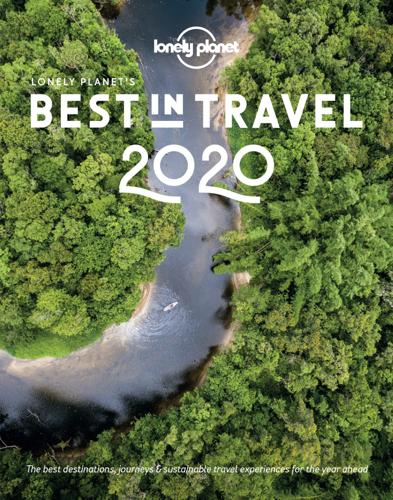
Lonely Planet's Best in Travel 2020
by
Lonely Planet
Published 21 Oct 2019
As self-confessed travel geeks, our staff collectively rack up hundreds of thousands of miles each year, exploring almost every destination on the planet in the process. Where is the best place to visit right now? We ask everyone at Lonely Planet, from our writers and editors all the way to our online family of social media influencers. And each year they come up with hundreds of places that are special right now, offer new things for travellers to see or do, or are criminally overlooked and underrated. Amid fierce debate, the list is whittled down by our panel of travel experts to just 10 countries, 10 regions, 10 cities and 10 best value destinations.

Lonely Planet Lonely Planet's Best in Travel 2022
by
Lonely Planet
Published 26 Oct 2021
As self-confessed travel geeks, our staff collectively rack up hundreds of thousands of miles each year, exploring almost every destination on the planet in the process. Where is the best place to visit right now? We ask everyone at Lonely Planet, from our writers and editors all the way to our online family of social media influencers. And each year they come up with hundreds of places that are special right now, offer new things for travellers to see or do, or are criminally overlooked and underrated. Amid fierce debate, the list is whittled down by our panel of travel experts to just 10 countries, 10 regions, 10 cities and 10 best value destinations.

Zucked: Waking Up to the Facebook Catastrophe
by
Roger McNamee
Published 1 Jan 2019
The Kremlin, rather than being the dominant social media manipulator globally, will be one of many seeking to surreptitiously move audiences to their preferred position using social media influence. Future political manipulators will copy the Kremlin’s information warfare art but apply an advanced level of technology, artificial intelligence, to sway audiences through rapid social media assaults. The danger to democracy will not be just authoritarians, but all political campaigns and public relations firms employing social media influence to drive audiences apart online and drive constituencies apart at the ballot box.” Zeynep Tufekci, the UNC scholar who is one of the world’s foremost experts on the impact of emerging technology in politics, has observed that internet platforms enable the powerful to affect a new kind of censorship.

Reset
by
Ronald J. Deibert
Published 14 Aug 2020
Some of you reading this may have grown up entirely within the universe of Facebook, Google, Snapchat, and TikTok and not know what it’s like to live without them. I’m among those living generations that have experienced life before and after social media. I remember standing in a long line with nothing to do but think. Not everything is social media, but social media influence everything else, so prominent and influential is the business model at their core. The platforms that run social media have huge gravitational force and sweep up most everything else into their orbit (sometimes literally, through acquisitions), absorbing even non-social applications into the galaxy of social media.
…
He also shrewdly saw dissidents’ reliance on these open and (in some cases) insecure devices and platforms as a means to sow fear. In what is truly becoming a new normal in the playbook of digital authoritarianism, al-Qahtani employed at least three separate but linked tactics. First, he contracted with the prestigious consulting firm McKinsey & Company to prepare an internal brief identifying key social media “influencers.” Left unsaid but obvious nonetheless, the aim of such a report was to help prioritize targets of al-Qahtani’s cyberwar on opposition. He simultaneously managed to secretly infiltrate Twitter itself, paying a number of Saudi-born, Silicon Valley–based engineers to find employment at the company and then clandestinely acquire confidential data on users, such as real names, private direct messages, geolocations, and IP addresses.

Gene Eating: The Science of Obesity and the Truth About Dieting
by
Giles Yeo
Published 3 Jun 2019
This marketing strategy is incredibly effective, with the juice cleansing business worth upwards of $5 billion (£3.6 billion) per year. And of course it is! Who doesn’t want the perfect skin, svelte body and seemingly glamourous life of those that undertake and endorse these programmes (the hiring of Sarah to manage the bar and sell the cleanses is a case in point)? In addition to celebrity and social-media ‘influencer’ testimonials, the companies further justify these huge claims by having ‘reliable’ doctors (I’m looking at you, Dr Junger) and other professionals backing them up. YOUR LIVER IS WORTH IT This seems to be an appropriate time to introduce one of the more underappreciated organs that keeps the body ticking.
…
It took years to change, years to start reintroducing foods that I’d become pretty much brainwashed to believe were poisoning me’. When I interviewed Ella for the Clean Eating documentary, I asked what her thoughts were on the dangers of social media driving disordered eating. ‘You know what ... I think there can be and I think it’s up to us [social-media influencers] to be as responsible as we can be to do everything to allow people not to take it out of context. But to me that doesn’t stop at food, that’s the whole of social media and I think for the whole of social media, there’s a collective body, there’s a responsibility’. THE BELLE GIBSON STORY Then there was the far more controversial story of Belle Gibson.
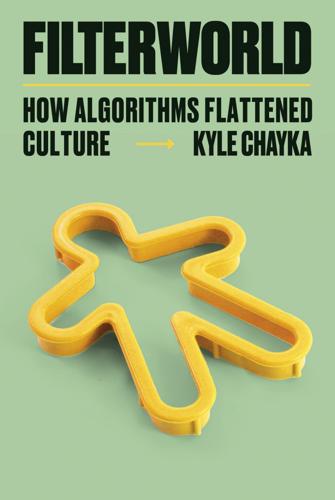
Filterworld: How Algorithms Flattened Culture
by
Kyle Chayka
Published 15 Jan 2024
That’s how a New York City bar called Black Tap became famous around 2016 for its elaborate milkshakes, which came so encrusted with candy and other accessories (even an entire piece of cake) that they were barely edible but looked appropriately dramatic in a photo for Instagram. In fact, the shakes were designed not by a chef but by the restaurant’s social media manager. They were first served only at special events for social media influencers, but became even more popular with regular customers, who could turn them into content just the same. They were more meant to be photographed than finished; the excess of ingredients created unsustainable physical waste. Standing at Weekenders in Kyoto, I felt that the entire coffee shop had become a kind of Instagram wall, a recognizable prop with which to document your tastes as a consumer.
…
They can devoutly follow a personal vision, perhaps to the detriment of their engagement numbers and future potential to make a living, or they can cater to both feeds and audiences—creating the equivalent of only love and heartbreak poems—in the hope of surviving as an influencer, with the backup of selling sponsorships or swag if the art itself doesn’t profit. Ultimately, the algorithmic feed may not be the death of art, but it often presents an impediment to it. BOOKSTAGRAM AND BOOKTOK Social media influencers are forces of marketing: They can popularize almost anything, whether a new product from a fashion brand or a damaging political ideology. If you want something to be popular in Filterworld, the fastest way is to get the influencers on your side. Entire industries have been reshaped around their gravity.

The Minimalist Way
by
Erica Layne
Published 25 Feb 2019
This idea is controversial because many small businesses and solopreneurs rely on the income they earn from third-party advertising, so an alternative is simply being more selective about the websites you visit. If you find that the advertising on a site you visit frequently is disproportionately influencing your consumerism, take a break from that site. 3.Unfollow any social media influencers who make you feel like what you have is not enough—or who continually share products and post sponsored content with the hope that you’ll click through and buy. 4.If your budget and your personal values allow, upgrade your subscription-based entertainment accounts (like Pandora, Spotify, or Hulu) to the ad-free plans. 5.Consume less media in general, and read more books, which are ad-free!

The Coming Wave: Technology, Power, and the Twenty-First Century's Greatest Dilemma
by
Mustafa Suleyman
Published 4 Sep 2023
More citations mean more prestige, credibility, and research funding. Junior researchers are especially liable to be judged—and hired—on their publication record, publicly viewable on platforms like Google Scholar. Moreover, these days papers are announced on Twitter and often written with social media influence in mind. They are designed to be eye-catching and attract attention. Academics fervently argue for open access to their research. In tech, strong norms around sharing and contributing support a flourishing space of open-source software. Some of the world’s biggest companies—Alphabet, Meta, Microsoft—regularly contribute huge amounts of IP for free.
…
The introduction of power looms put old-fashioned weavers out of business; motorcars meant that carriage makers and horse stables were no longer needed; lightbulb factories did great as candlemakers went bust. Broadly speaking, when technology damaged old jobs and industries, it also produced new ones. Over time these new jobs tended toward service industry roles and cognitive-based white-collar jobs. As factories closed in the Rust Belt, demand for lawyers, designers, and social media influencers boomed. So far at least, in economic terms, new technologies have not ultimately replaced labor; they have in the aggregate complemented it. But what if new job-displacing systems scale the ladder of human cognitive ability itself, leaving nowhere new for labor to turn? If the coming wave really is as general and wide-ranging as it appears, how will humans compete?

Your Face Belongs to Us: A Secretive Startup's Quest to End Privacy as We Know It
by
Kashmir Hill
Published 19 Sep 2023
GO TO NOTE REFERENCE IN TEXT outlandish claims about Hillary Clinton: Years later, in January 2021, Mackey, aka Vaughn, was charged with election interference, a federal offense, for tweeting that voters for Hillary Clinton could avoid long lines by voting by text or social media and providing the means to do so. That, of course, is not a legal way to vote. At least 4,900 people actually texted the number he provided with Clinton’s name, according to federal prosecutors. “Social Media Influencer Charged with Election Interference Stemming from Voter Disinformation Campaign,” U.S. Department of Justice, January 27, 2021, https://www.justice.gov/opa/pr/social-media-influencer-charged-election-interference-stemming-voter-disinformation-campaign. GO TO NOTE REFERENCE IN TEXT “Right Wing Gossip Squad”: Zanting, “Rudy Giuliani Ex-Advisor Richard Schwartz Worked With the Alt-Right,” AnimeRight News, May 7, 2018, https://web.archive.org/web/20190330154815/https://animeright.news/zanting/rudy-giuliani-ex-advisor-richard-schwartz-worked-with-the-alt-right/.
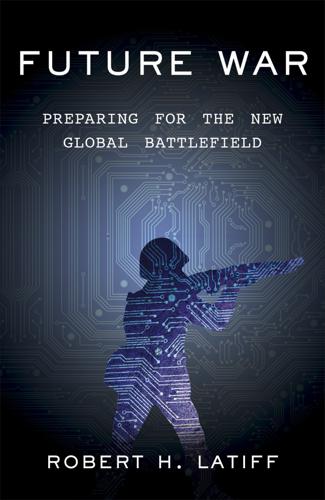
Future War: Preparing for the New Global Battlefield
by
Robert H. Latiff
Published 25 Sep 2017
Special Operations Command, gray zone security conflicts are characterized by “ambiguity about the nature of the conflict, opacity of the parties involved, or uncertainty about policy and legal frameworks.” They do not fit into our well-developed models of war and peace. These conflicts, of which the Russian annexation of Crimea, the rise of the Islamic State, and Boko Haram’s terror campaign in Nigeria are examples, combine subversion, destabilizing social media influence, disruptive cyberattacks, and anonymous participants, rather than recognizable armed forces. Future threats will be similarly complex and will require complex responses. TECHNOLOGY AND WEAPONS Humans have always found untold reasons and all sorts of ways to kill their fellow human beings.
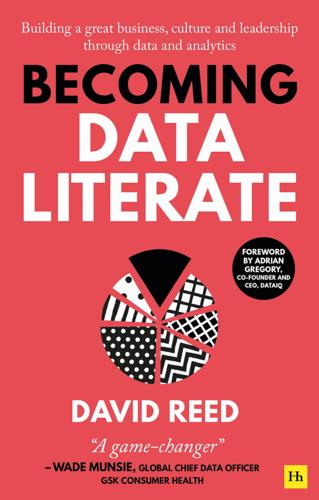
Becoming Data Literate: Building a great business, culture and leadership through data and analytics
by
David Reed
Published 31 Aug 2021
So if the leader of the marketing team needs to find out about an aspect of data governance, for example, they can tap up their customer analytics contact for an introduction more easily than if they try to contact the data governance team directly. This effect can be recognised in the way brands use social media influencers to disseminate product information, positive reviews or aspirational images. The networks built by those influencers are based on weak ties that take little time and effort to create – a simple follow, like or share – and benefit from the multiplier effect whereby immediate contacts bring their own contacts into the network.

Age of Context: Mobile, Sensors, Data and the Future of Privacy
by
Robert Scoble
and
Shel Israel
Published 4 Sep 2013
They also know what wine clubs you’ve joined, what restaurants you have visited in Napa and where you bought your last case of wine. They know what tasting rooms you visited and what you posted about each. Based on all this data, VinTank gives wine enthusiasts a numerical rating. It is similar to how Klout ranks social media influencers, but it seems to be based on more data. It’s also in real-time. When you post that smiling photo of you with your friends, touching glasses in a toast, VinTank captures it as it goes live. In 2011, it dawned on Mabray and Jory that there might be greater value to wineries than just using this data for analyst reports.
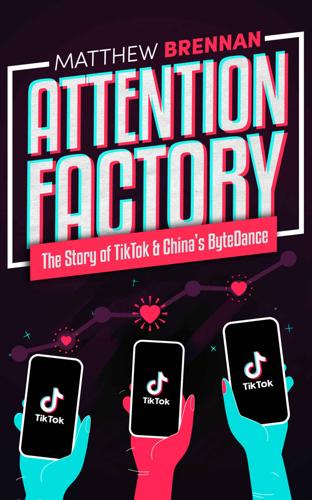
Attention Factory: The Story of TikTok and China's ByteDance
by
Matthew Brennan
Published 9 Oct 2020
ALEX HOFMANN, former Musical.ly president of North America, left after the ByteDance acquisition ALEX ZHU 朱骏 ( z hūjùn) , co-founder of Musical.ly, later CEO of TikTok ALLEN ZHANG 张小龙 (zhāngxiǎolóng ), founder of WeChat and Foxmail, senior executive VP at Tencent ARIEL REBECCA MARTIN (BABY ARIEL), social media influencer, most followed Musical.ly account 2016-2018 BLAKE CHANDLEE, joined TikTok in June 2019 as VP of global business solutions, having spent twelve years at Facebook as VP of global partnerships CAO HUANHUAN 曹欢欢 ( cáohuānhuān ), senior algorithm architect, former principal research engineer at ByteDance, Beijing CHEN HUA 陈华 ( chén huá ), former Kuxun co-founder and CEO CHEN LIN 陈林 ( chén lín ), ByteDance executive, previously CEO of Toutiao, now responsible for innovative products and education.

Traction: How Any Startup Can Achieve Explosive Customer Growth
by
Gabriel Weinberg
and
Justin Mares
Published 5 Oct 2015
The first place to look for potential affiliates is your own customer base. They are easy to recruit and work with because they are already familiar with and have an affinity for your brand. After getting customers involved in your affiliate program, you will want to contact content creators, including bloggers, publishers, social media influencers, and email list curators. Monetizing blogs can be difficult, so these content creators often look for other ways to make money. We interviewed Maneesh Sethi, popular blogger at HacktheSystem, to talk about how companies can build relationships with people like him. Maneesh has been an affiliate for many products he has personally used.

The Creative Curve: How to Develop the Right Idea, at the Right Time
by
Allen Gannett
Published 11 Jun 2018
Today he has more than five million subscribers on his page, with each video typically receiving over 500,000 views. He has also written two New York Times bestselling memoirs, and launched a clothing line, a coffee brand, and a record label with a Sony distribution deal that specializes in pairing emerging musicians with powerful social media influencers. Franta has become a new type of digital mogul, something he credits to his ability to understand his audience: “I know what I like and I’ve found, through the years with YouTube, that people like what I like.” How did a teenager from Minnesota gain this ability? Again, it started with consumption.

This Is How They Tell Me the World Ends: The Cyberweapons Arms Race
by
Nicole Perlroth
Published 9 Feb 2021
Lost in the maelstrom was subsequent reporting that year which showed that the New York Times Moscow bureau was also the attempted target of a Russian cyberattack. There was no evidence that Russia’s hackers were successful. See Nicole Perlroth and David E. Sanger, “New York Times’s Moscow Bureau Was Targeted by Hackers,” New York Times, August 23, 2016. For the most definitive press accounts of Russia’s social media influence efforts, see Scott Shane and Mark Mazzetti, “Inside a 3-Year Russian Campaign to Influence U.S. Voters,” New York Times, February 16, 2018. I also relied on the United States indictment of Russia’s Internet Research Agency. See Indictment, United States v. Internet Research Agency, et al.
…
After Prigozhin was indicted for his role in the 2016 election interference, he told the Russian state news agency Ria Novosti, “The Americans are very impressionable people; they see what they want to see. I have a lot of respect for them. I am not upset at all that I ended up on this list. If they want to see the devil, let them see him.” For a more granular view of how Russia’s social media influence campaign played out locally, see Stephen Young, “Russian Trolls Successfully Peddled Texas Pride in 2016, Senate Reports Say,” Dallas Observer, December 19, 2018. For the hack of VR Systems, see the NSA’s leaked report published by Matthew Cole, Richard Esposito, Sam Biddle, and Ryan Grim, “Top Secret NSA Report Details Russian Hacking Effort Days before 2016,” Intercept, June 5, 2017.

Uncanny Valley: A Memoir
by
Anna Wiener
Published 14 Jan 2020
I followed up, though the CEO had not responded, and added an apology, tagging him into the conversation I was having with myself. He quickly wrote back, and the disagreement migrated over to email, where he invited me for lunch. A few weeks later, I biked from work to his company’s office in the Mission. With teenage-like impudence and a vain savior complex—I had the ear of a social media influencer, I thought, and not only would I bend it, I would introduce it to art—I had brought along a small stack of books to give him, all of which espoused different versions of my own aesthetic or political inclinations. They also pandered to what I believed were his interests, in that they were short.
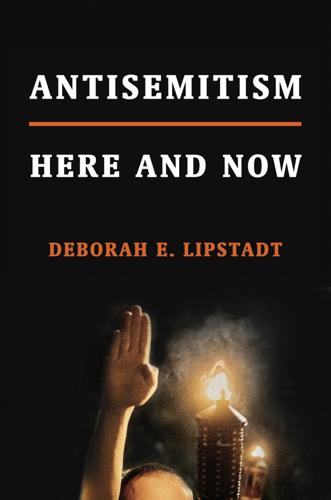
Antisemitism: Here and Now
by
Deborah E. Lipstadt
Published 29 Jan 2019
“White nationalism went from being a conversation you could hold in a bathroom to a front parlor.”14 Even though there is no evidence of a direct relationship between Trump and these extremist groups, Fortune magazine assessed the impact of the interactions between them. Using social media analytics software, it tracked the campaign’s connections to white supremacists. Locating the white supremacists who were considered social media “influencers,” Fortune discovered that a significant number of Trump campaign workers followed the leading #WhiteGenocide influencers. The study concluded that “the data shows…that Donald Trump and his campaign have used social media to court support within the white supremacist community, whether intentionally or unintentionally.”15 Not only did Trump’s campaign workers regularly follow influential white supremacists on social media, they were also spreading their hate-filled messages to the millions of people who followed Donald Trump on social media.

Cultish: The Language of Fanaticism
by
Amanda Montell
Published 14 Jun 2021
From the crafty redefinition of existing words (and the invention of new ones) to powerful euphemisms, secret codes, renamings, buzzwords, chants and mantras, “speaking in tongues,” forced silence, even hashtags, language is the key means by which all degrees of cultlike influence occur. Exploitative spiritual gurus know this, but so do pyramid schemers, politicians, CEOs of start-ups, online conspiracy theorists, workout instructors, even social media influencers. In both positive ways and shadowy ones, “cult language” is, in fact, something we hear and are swayed by every single day. Our speech in regular life—at work, in Spin class, on Instagram—is evidence of our varying degrees of “cult” membership. You just have to know what to listen for. Indeed, while we’re distracted by the Manson Family’s peculiar outfits* and other flashy “cult” iconography, what we wind up missing is the fact that one of the biggest factors in getting people to a point of extreme devotion, and keeping them there, is something we cannot see.
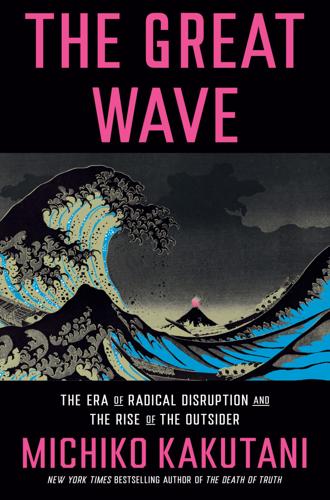
The Great Wave: The Era of Radical Disruption and the Rise of the Outsider
by
Michiko Kakutani
Published 20 Feb 2024
Others, like Donald Trump, are harrowing case studies in the hazards posed by ignorance, venality, and narcissism, combined with shamelessness and power. The democratizing effects of the internet have given outsiders of every sort—from climate activists, to white nationalists, to would-be social media “influencers”—the ability to circumvent old-school gatekeepers. And this at a time when mistrust in the government and traditional sources of authority have been building since the economic meltdown of 2008, which fueled populist anger at institutions and elites. These developments have created a vertiginous moment that has exposed our interdependent world’s profound vulnerabilities.
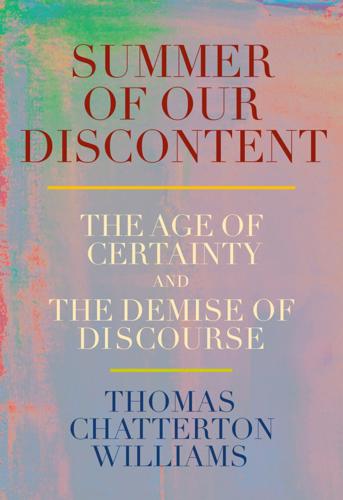
Summer of Our Discontent: The Age of Certainty and the Demise of Discourse
by
Thomas Chatterton Williams
Published 4 Aug 2025
*7 On the first Tuesday in June, Instagram users were encouraged to take a break from posting content and instead participate in #TheShowMustBePaused, a mission started by two black women in the music industry, Jamila Thomas and Brianna Agyemang. The idea was to hold the music industry accountable for benefiting from the “effort, struggles and successes of Black people.” Mariah L. Wellman, “Black Squares for Black Lives? Performative Allyship as Credibility Maintenance for Social Media Influencers on Instagram,” Social Media and Society 8, no. 1 (2022). *8 The very notion of “black minds” as opposed to “white” or other kinds of minds is a classic form of racism (or racialism). Yet it has been highly influential in transforming not just school admissions criteria but even the very nature of math and science pedagogy.

Lurking: How a Person Became a User
by
Joanne McNeil
Published 25 Feb 2020
Search strings used to be phrased like ingredients: revolution AND french OR russian NOT american physics AND aviation NOT aerospace You don’t need coding experience to recognize that this query language is styled like computational methods. In retrospect, Boolean search strings look like the liberal use of #hashtags #for #emotional #emphasis by today’s social media influencers. When I search for information now, I feel like I should add “please” and “thank you” to every request. There is no way around it, talking to the Google search bar like a human generates more relevant results. To home in on the information sought, a user might type “how do i download a printer driver for mac” rather than “download printer driver mac,” or “why is the capital of ohio columbus” rather than “ohio capital columbus.”
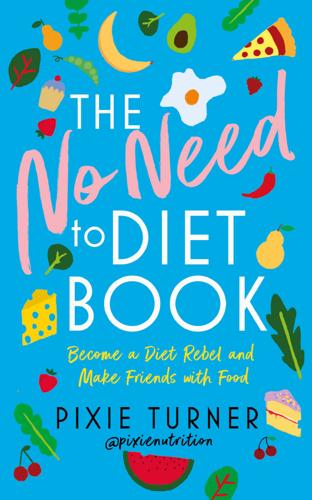
The No Need to Diet Book: Become a Diet Rebel and Make Friends With Food
by
Plantbased Pixie
Published 7 Mar 2019
Conclusion Whether you are impacted by the media and social media in a positive or negative way, or barely at all, depends on a complex interplay between individual personal characteristics and the larger social climate. Most of the time, negative media effects are not intended, of course. Most media producers and social media influencers aren’t trying to harm people, but that doesn’t absolve them from responsibility when the content they produce has negative effects. Also, don’t get your nutrition information from sensationalist documentary film-makers. Quiz: Do you have social media anxiety disorder? Check how many of these common symptoms of social media anxiety disorder you identify with: YES/NO Interrupting conversations to check your social media accounts Lying to others about how much time you spend on social media Withdrawal from friends and family Trying to stop or reduce your use of social media more than once before without being successful Loss of interest in other activities Neglecting work or school to comment on Facebook or Twitter account Experiencing withdrawal symptoms when you are not able to access social media Spending over six hours per day on social networking sites like Facebook, Twitter or Instagram Overwhelming need to share things with others on social media sites Having your phone with you 24 hours a day to check your social media sites Using social media more often than you planned Severe nervousness or anxiety when you are not able to check your notifications Negative impacts on your personal or professional life due to social media usage The more of these you identify with, the more likely it is that you may have some anxieties around social media and should perhaps look into reducing your usage.

Picnic Comma Lightning: In Search of a New Reality
by
Laurence Scott
Published 11 Jul 2018
While Karl Marx pointed this out over 150 years ago, today the commodity’s disruptiveness is intensifying. We are living in an age when it is possible to commercialise our personal experiences on an unprecedented scale. Private life isn’t only there to be shared with our followers, but also to open up a space for publicity. In this economy of publicised privacy, the social-media influencer is our age’s figurehead, an icon of late-capitalism’s intensely porous relationship between fantasy and reality. I love the blatancy of the term ‘influencer’, which lays all its cards on the table. It doesn’t attempt to hide the fact that our view of the world is manipulated by external agents.

Less Is More: How Degrowth Will Save the World
by
Jason Hickel
Published 12 Aug 2020
The data on this is clear: people who live in highly unequal societies are more likely to shop for luxury brands than people who live in more equal societies.16 We keep buying more stuff in order to feel better about ourselves, but it never works because the benchmark against which we measure the good life is pushed perpetually out of reach by the rich (and, these days, by social media influencers). We find ourselves spinning in place on an exhausting treadmill of needless over-consumption. So, if not income, what does improve well-being? In 2014, the political scientist Adam Okulicz-Kozaryn conducted a review of all the existing data on this question. He found something remarkable: countries that have robust welfare systems have the highest levels of human happiness, when controlling for other factors.

Cloudmoney: Cash, Cards, Crypto, and the War for Our Wallets
by
Brett Scott
Published 4 Jul 2022
Much like an obscure director might call their unrecognised movie The Greatest Show on Earth (in the hope that it becomes that), enthusiasts were posturing when applying monetary language to the tokens. They were looking forward to a time when the tokens would become money, but much media reporting went along with this present-tense branding of a future state, with reporters and social media influencers referring to the tokens as a ‘new digital currency’. This returns us to the point I began the chapter with. We are susceptible to seeing movable numbered objects as ‘money’, because we fixate upon the surface-level numbers that accompany a monetary system. Some numbered objects are easy to see through: a chocolate coin moulded with the number ‘1’ and packaged in a foil wrapper with money-like branding.

Secrets of the Sprakkar
by
Eliza Reid
Published 15 Jul 2021
This field remains one with significant inequality: male professionals are better known and earn a lot more money. But progress in gender equality overall in the country has narrowed the gap appreciably. In addition to much publicized equal bonuses for national team members, female sporting heroes have sponsorship contracts and are popular social media influencers (especially the CrossFit champions). Margrét Lára is now one of the most recognizable players in Iceland, even though she retired from the national team in 2019, having capped off a professional career that included stints in both Sweden and Germany and representing her country in 124 international matches, where she scored 79 goals.
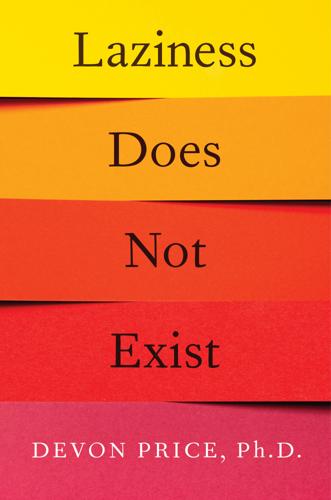
Laziness Does Not Exist
by
Devon Price
Published 5 Jan 2021
utm_source=google&utm_medium=organic&utm_campaign=organic. 28. Maria Fischer, “These Honest Photos Show Why You Should Never Compare Your Body to Bloggers,” Revelist, June 21, 2017, https://www.revelist.com/internet/bloggers-photoshopped-body-photos/8165/following-goodheads-lead-more-and-more-youtubers-bloggers-and-social-media-influencers-have-committed-themselves-to-the-fight-against-photoshop/2. 29. Erin A. Vogel, Jason P. Rose, Lindsay Roberts, and Katheryn Eckles, “Social Comparison, Social Media, and Self-Esteem,” Psychology of Popular Media Culture 3, no. 4 (2014): 206–22. 30. Jacqueline Nesi and Mitchell J. Prinstein, “Using Social Media for Social Comparison and Feedback-Seeking: Gender and Popularity Moderate Associations with Depressive Symptoms,” Journal of Abnormal Child Psychology 43, no. 8 (November 2015): 1427–38, doi:10.1007/s10802-015-0020-0. 31.
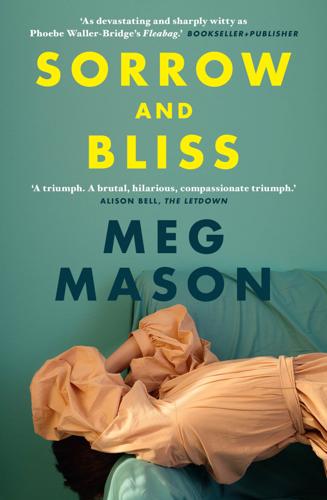
Sorrow and Bliss
by
Meg Mason
Published 1 Sep 2020
I put my hand on my chest but felt nothing. 34 I SPENT THE day and first night without him on the stripped bed; after he left there did not seem to be a reason to remake it. Life, a life involving sheets and dishes and letters from the bank did not exist any more. Between sleeping and waking and sleeping again, I Googled Robert. Then I Googled Jonathan. His wife is a social media influencer. Her Instagram is a mixture of holiday photos, sponsored posts about a brand of collagen drink and photos of what she is wearing shot in the mirror of the lift that I used to take down to the street to breathe. She gets the most likes when she posts pictures of her little tribe, #thestronggirls, all of whom have blonde hair and names that are also common nouns.

Irreversible Damage: The Transgender Craze Seducing Our Daughters
by
Abigail Shrier
Published 28 Jun 2020
If you were an anxious teenage girl, plagued by menstrual cramps and social anxiety, you might just look at him and say: “I’ll have what he’s having.” * * * Discovering online trans gurus is equal parts thrilling and disconcerting to curious tweens—like the pornography they’re curious about but not quite ready to see. One young woman I interviewed told me that in high school, she fell for the boy-band looks of social media influencer Wes Tucker, only to be thrown into a tailspin when she learned Wes was biologically female. (The young woman decided her crush was evidence that she herself was also “trans.”) Which brings me back to Chase Ross, one of the more measured and obviously mature internet gurus. I approached Chase for an interview after another female-to-male adolescent told me that Chase’s videos had been the source of her transgender epiphany.
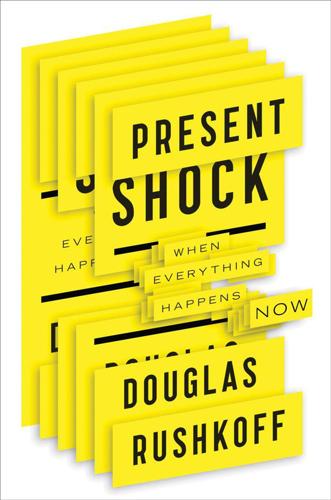
Present Shock: When Everything Happens Now
by
Douglas Rushkoff
Published 21 Mar 2013
The impatient rush to judgment of the Tea Party movement is only as unnerving as the perpetually patient deliberation of its counterpart present shock movement, Occupy Wall Street. Opposite reactions to collapse of political narrative, the Tea Party yearns for finality while the Occupy movement attempts to sustain indeterminacy. Inspired by the social-media-influenced revolutions of the Arab Spring, Occupy Wall Street began as a one-day campaign to call attention to the inequities inherent in a bank-run, quarterly-focused, debt-driven economy. It morphed into something of a permanent revolution, however, dedicated to producing new models of political and economic activity by its very example.

Digital Empires: The Global Battle to Regulate Technology
by
Anu Bradford
Published 25 Sep 2023
This reflects the government’s escalating effort to strangle criticism that disrupts public order or undermines Party rule.62 Individuals have been jailed following social media posts that criticize the government or contain undesirable remarks about Hong Kong, Taiwan, or Xinjiang.63 For instance, Sun Jiandong, who only had twenty-seven Twitter followers when he was detained in 2019, had replied to a Chinese state media tweet by tweeting: “Glory to Hong Kong, shame on Communist bandits.”64 This and other controversial tweets by Mr. Sun generated 168 likes, retweets from ten users, and comments from ninety-five users. Mr. Sun—hardly a social media influencer by numbers—completed a thirteen-month prison sentence. The Chinese leadership faces a delicate balancing act in its efforts to censor the internet, which has led it to pursue optimal, as opposed to absolute, censorship. The government wants to harness the benefits associated with a free internet yet remains aware of the risks associated with such openness.65 One benefit of maintaining a freer internet and media environment is that those channels can provide the government with valuable information that helps it govern the country more effectively.
…
Frustrated by its ability to unlock competition with one enforcement case at the time, the Commission sought new enforcement powers through a Digital Markets Act (DMA), which it gained in 2022 when the European Parliament and the Council adopted the regulation.148 The DMA targets so-called digital gatekeepers, which are the largest digital platforms that have the greatest ability to influence market competition. Given the high revenue thresholds associated with the designation of a company as a gatekeeper, the regulation will mainly apply to the largest US tech companies, including Amazon, Apple, Google, Meta, and Microsoft. The DMA will vest the EU with the authority to regulate the business conduct of these gatekeepers ex ante, prohibiting them from engaging in certain business practices—such as self-preferencing—while at the same time demanding them to engage in other practices—such as ensuring interoperability of their technologies with those developed by their rivals.149 Most importantly, under the DMA, the Commission does not need to marshal evidence to show that any such practice harms consumers, as such specified practices are presumed illegal and hence prohibited.
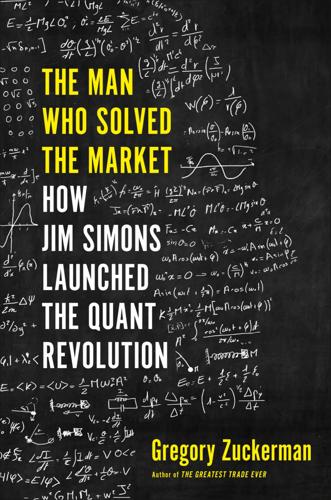
The Man Who Solved the Market: How Jim Simons Launched the Quant Revolution
by
Gregory Zuckerman
Published 5 Nov 2019
The rage among investors is for alternative data, which includes just about everything imaginable, including instant information from sensors and satellite images around the world. Creative investors test for money-making correlations and patterns by scrutinizing the tones of executives on conference calls, traffic in the parking lots of retail stores, records of auto-insurance applications, and recommendations by social media influencers. Rather than wait for figures on agricultural production, quants examine sales of farm equipment or satellite images of crop yields. Bills of lading for cargo containers can give a sense of global shifts. Systematic traders can even get cell phone–generated data on which aisles, and even which shelves, consumers are pausing to browse within stores.

How I Built This: The Unexpected Paths to Success From the World's Most Inspiring Entrepreneurs
by
Guy Raz
Published 14 Sep 2020
The idea to publish an expensive travel book as a way to get attention for a company that sells suitcases was certainly a gamble, but it was one built on a smart strategy for building buzz. “With the tastemakers in the book or with the editors that we reached out to through the PR agency or the social media influencers that I would send messages to asking them to post about us,” Jen said, “all of our efforts in the beginning were trying to get other people to simply talk about us—so that we didn’t have to talk about ourselves as much.” The gamble worked. On November 9, 2015, Jen and Steph woke up to a feature on Vogue’s website about a new travel brand called Away.

Number Go Up: Inside Crypto's Wild Rise and Staggering Fall
by
Zeke Faux
Published 11 Sep 2023
It requires crooked lawyers, brokers, and bankers to draft reams of securities paperwork, even if all the information in them is false. And that leaves a paper trail that pretty much inevitably leads to the scammers getting busted. Crypto didn’t require any of that. All it takes is some rudimentary programming, which can be done by freelancers hired online, and some posts by a social media influencer. * * * — IN SEPTEMBER 2017, near the peak of the ICO boom, the boxer Floyd Mayweather Jr. wrote a message on Twitter that would have been indecipherable for anyone not schooled in the jargon of crypto hype. Above a photo of him with twenty-three glittering championship belts, he wrote: “Centra’s (CTR) ICO starts in a few hours.
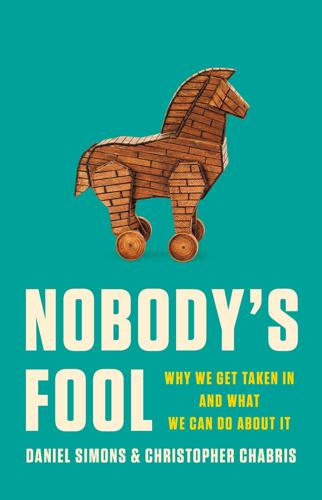
Nobody's Fool: Why We Get Taken in and What We Can Do About It
by
Daniel Simons
and
Christopher Chabris
Published 10 Jul 2023
CHAPTER 8 POTENCY—BE WARY OF “BUTTERFLY EFFECTS” According to the popular science cliché, a butterfly flapping its wings in Brazil can cause a tornado in Texas. We find potency unduly persuasive, when in reality, we should be wary whenever anyone claims that a big effect can come from a small cause. In 2021, American social media influencer Caroline Calloway launched her own brand of essential oils with a marketing blitz to her more than 600,000 Instagram followers. Calloway had gained infamy for provocative claims and event promotions that seemed to fall through at a high rate—receiving a six-figure book deal and then failing to deliver the book, launching a national workshop tour but failing to reserve venues, and so on—somehow landing on her feet and walking away to the next thing every time.

The Day the World Stops Shopping
by
J. B. MacKinnon
Published 14 May 2021
Even the first detailed account of the fashion industry, written by the German historical economist Werner Sombart in 1902, dismissed the myth that fashion follows the tastes of consumers and not the other way around. “The driving force in the creation of more recent fashion is altogether much more the capitalist entrepreneur,” wrote Sombart. “What the Parisian coquette and the Prince of Wales contribute is no more than a kind of mediating assistance.” This is just as true today of the social-media influencer and the hip-hop celebrity when compared to an industry that chooses the year’s colours and hemlines so far in advance that either they are exceptional readers of the consumer mind or, as Sombart understood, they hold most of the power to decide what style will be. If we did not ask for fast fashion, we did take to it with enthusiasm.

Boom: Bubbles and the End of Stagnation
by
Byrne Hobart
and
Tobias Huber
Published 29 Oct 2024
Debord, Society of the Spectacle (London: Rebel Press: Black & Red, 1983); Giorgio Agamben, The Church and the Kingdom (London, New York, Calcutta: Seagull Books, 2012), 41. 67 Johan Bollen et al., “Historical Language Records Reveal a Surge of Cognitive Distortions in Recent Decades,” Proceedings of the National Academy of Sciences 118, no. 30 (2021): e2102061118. 68 National Institutes of Health, “Marijuana and Hallucinogen Use Among Young Adults Reached All-Time High in 2021,” August 22, 2022, https://www.nih.gov/news-events/news-releases/marijuana-hallucinogen-use-among-young-adults-reached-all-time-high-2021. 69 The trend toward interiority and dopamine-inducing simulation—in 2021, a Chinese state media outlet referred to social media, porn, and video games as “spiritual opium”—is reflected in a survey that found that the majority of Western children aged 8 to 12 aspired to become social media influencers while their Chinese peers wished to become astronauts. Eric Berger, “American Kids Would Much Rather Be YouTubers Than Astronauts,” Ars Technica, July 16, 2019, https://arstechnica.com/science/2019/07/american-kids-would-much-rather-be-youtubers-than-astronauts. 70 As defined in The Republic, spiritedness (thymos), reason (logos), and desire (eros) constitute the Platonic tripartite conception of the soul.

The Future Is Faster Than You Think: How Converging Technologies Are Transforming Business, Industries, and Our Lives
by
Peter H. Diamandis
and
Steven Kotler
Published 28 Jan 2020
Every day, billions of people watch billion of videos on the site. For the younger generation, YouTube has completely replaced television as their medium of choice. Meanwhile Hollywood’s longtime stranglehold on talent has been shattered as YouTube democratized content distribution for all of us. Social media influencers are the result, a new breed of uber-creators challenging traditional media in untraditional ways. Take cooking shows. Celebrity chefs like Gordon Ramsay and Rachael Ray are now up against YouTube shows like Binging with Babish, where host Andrew Rea recreates meals from famous TV shows and movies for over a million viewers an episode.

Binge Times: Inside Hollywood's Furious Billion-Dollar Battle to Take Down Netflix
by
Dade Hayes
and
Dawn Chmielewski
Published 18 Apr 2022
“When I asked about it, he said, ‘I want [my readers] to have a fantastic reading experience that I have designed to be satisfying at every step along the way and convenient to what is now a more fragmented and segmented time schedule that people have,’” Katzenberg said in April 2019. “If you’ve got ten minutes, read a chapter or two. Got an hour? Keep going.” Quibi’s all-star lineup failed to produce shows that succeeded in pulling attention from the spontaneous, goofy, and surprisingly intimate videos on TikTok. Amateur social media influencer Nathan “Doggface” Apodaca drew a bigger crowd grinding his skateboard down Highway 20 in Idaho Falls, sipping cranberry juice while listening to Fleetwood Mac’s “Dreams.” But it isn’t as if Katzenberg wasn’t warned. He surrounded himself with young development executives who cautioned Quibi was squandering its money on talent that the audience didn’t care about.

Targeted: The Cambridge Analytica Whistleblower's Inside Story of How Big Data, Trump, and Facebook Broke Democracy and How It Can Happen Again
by
Brittany Kaiser
Published 21 Oct 2019
Our two team members had been able to query focus groups and do basic research, but they hadn’t built a database of any helpful size or relevance, and they’d been unable to do any proper modeling or targeting. When I arrived, I set out to assemble the database and create a dream team of young professionals, from both inside Mexico and out—researchers and creatives, pollsters and data scientists, radio and television producers, and social media influencers—to support a winning effort. As a U.S. citizen, I found it a fraught time to do business in Mexico, commercial or governmental—never mind at the presidential level. Trump had demonized the very people with whom I was going to work, and my success with clients required caution, humility, apology, diplomacy, and patience.

Buy Now, Pay Later: The Extraordinary Story of Afterpay
by
Jonathan Shapiro
and
James Eyers
Published 2 Aug 2021
PopSugar reported on beauty trends, fitness and diet for the same female audience that Afterpay was targeting, and had acquired a shopping search engine called ShopStyle. Brian helped to open many retailing doors for Molnar, just as Paul Greenberg had done in Australia through his NORA network. Afterpay was also coming to the attention of the world’s largest social-media influencers. Shortly after arriving in the United States, Molnar had been told by a young member of his new team that Afterpay’s growth in the world’s biggest retailing market would be turbocharged if he could get the Kardashian sisters on board. After rising to fame from a reality television series, the omnipresent Kardashians had created a vast online retail network that included selling beauty products to millennials—an Afterpay sweet spot.
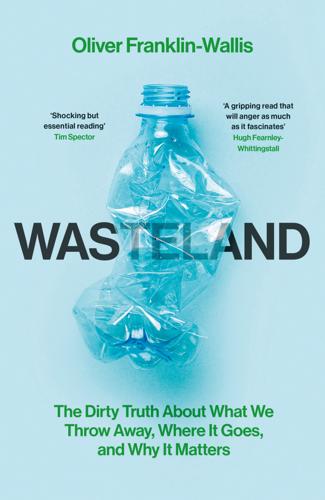
Wasteland: The Dirty Truth About What We Throw Away, Where It Goes, and Why It Matters
by
Oliver Franklin-Wallis
Published 21 Jun 2023
There are now 11,209 charity shops in the UK, according to the Charity Retail Association.1 That figure has risen steadily since the 2008 financial crisis, even as other shops have shut by the thousand.2 Not that long ago, charity shopping (or ‘thrifting’) came with all sorts of negative connotations tied up with poverty and class. Today, buying things second hand is if anything more fashionable than buying things new, the subject of glowing magazine features and championed by social media influencers. Some of the biggest charity chains in the UK, such as Oxfam and Shelter, have even set up destination stores for their highest-end donations, somewhere for the eco-bougie to buy Prada or Margiela guilt-free. Early in my career at Condé Nast, it was a closely guarded secret which of the local charity shops would receive the fashion magazines’ unused press freebies – a secret that penny-pinched interns, often working for little more than minimum wage, would share with only the closest of friends, so that they might get in on the drop early.

Crushing It!: How Great Entrepreneurs Build Their Business and Influence—and How You Can, Too
by
Gary Vaynerchuk
Published 30 Jan 2018
, was to teach entrepreneurs how to monetize their passion by using social media to build a strong personal brand to attract customers and advertisers to their websites, as well as transform them into such trusted experts or entertainment figures that brands and outlets would pay them to talk, consult, and attend events. In other words, it was all about building a personal brand around your business strong enough to make you an influencer. And yet the word influencer doesn’t appear once. The multibillion-dollar influencer marketing industry was still so new at the time, the concept hadn’t crystallized when that book was published in 2009. Yet today, influencer marketing is poised to eat a real chunk of traditional marketing’s lunch. Younger consumers spend increasingly less time on traditional media and more time consuming content online. YouTube’s daily viewership is closing in on TV’s 1.25 billion hours per day, as television viewership falls every year.1 One in every five minutes spent on mobile is spent on Facebook’s apps and services.2 Every minute, 65,900 videos and photos are posted on Instagram.3 Over 3 billion snaps are created each day on Snapchat, where over 60 percent of ads are watched with the audio on.4 Consequently, since 2009, brands have tripled the amount of money they spend on social media.5 With the explosion in the number of social networks available to anyone who wants to amass an audience, and vast sums of money being redirected toward those networks, influencer marketing has become a legitimate monetization strategy for anyone building an online profile, which means pretty much anyone in business.
…
YouTube’s daily viewership is closing in on TV’s 1.25 billion hours per day, as television viewership falls every year.1 One in every five minutes spent on mobile is spent on Facebook’s apps and services.2 Every minute, 65,900 videos and photos are posted on Instagram.3 Over 3 billion snaps are created each day on Snapchat, where over 60 percent of ads are watched with the audio on.4 Consequently, since 2009, brands have tripled the amount of money they spend on social media.5 With the explosion in the number of social networks available to anyone who wants to amass an audience, and vast sums of money being redirected toward those networks, influencer marketing has become a legitimate monetization strategy for anyone building an online profile, which means pretty much anyone in business. How legitimate? The top-grossing YouTubers earned a combined $70 million in 2016. Many fit a certain type—several are gamer dudes, for example—but Lilly Singh is a rapper-comedian who features Punjabi culture in her videos, Rosanna Pansino is a baker, and Tyler Oakley is an LGBTQ activist.6 In the past, the top-grossing list has also included dancing violinist Lindsey Stirling and makeup artist Michelle Phan.7 The most popular Instagrammers can earn seven figures per year from their social-media efforts alone.
…
The Internet is an entrepreneur’s oyster, and you can use its pearly platforms to build a personal brand so powerful that the world is not only willing to pay you for your products or services or to promote other people’s products and services, but also it might even be willing to pay you to just be you. To me, that is when you’ve become a true influencer. At its height, influencer marketing is reality TV 2.0. I want you to think of yourself as tomorrow’s newest star. You the entrepreneur are no different from the organic mac-and-cheese brand that branches out into cheddar cheese crackers and chicken noodle soup. The brand was never about organic mac and cheese; it was about organic comfort food.

The Contrarian: Peter Thiel and Silicon Valley's Pursuit of Power
by
Max Chafkin
Published 14 Sep 2021
Bannon suggested that the White House might go further, by regulating Facebook and Google like utilities—essentially controlling prices on advertisements and ensuring that the companies didn’t skew content ideologically (that is, against conservatives); Trump would return to this threat throughout his presidency. As the 2020 campaign began in earnest, Trump invited a group of social media influencers—including those who promoted QAnon, a pseudo-religious right-wing conspiracy theory that saw the president in messianic terms—to a Social Media Summit where the president claimed that tech companies, Facebook included, were censoring his supporters. He pledged to use his power as president to protect them.
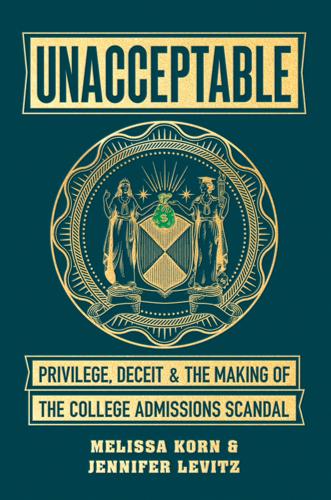
Unacceptable: Privilege, Deceit & the Making of the College Admissions Scandal
by
Melissa Korn
and
Jennifer Levitz
Published 20 Jul 2020
“Her entire life revolves around the kids and her need to be loved poured into them.” Chloe, twelve at the time, followed after her mom, a precocious go-getter. As a little girl, she ran to the TV cameras that came to the Buckingham home to film the family. Chloe would have 700,000 Instagram followers by age fourteen and would become a social media influencer and digital network star. Her college essay would write itself someday. Jack, at fourteen, was private, preferring his mother never even mention his name in public, and he had more subtle gifts. Tall and skinny enough to hide behind a lamppost, he had a sweet, toothy grin and a deepening voice offset by a still high-pitched giggle.
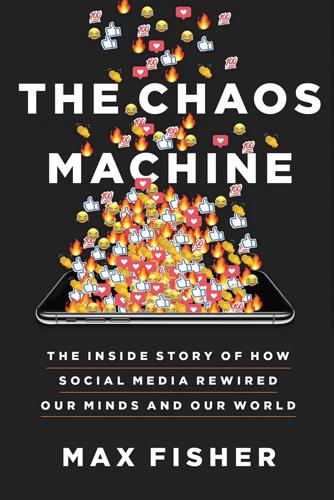
The Chaos Machine: The Inside Story of How Social Media Rewired Our Minds and Our World
by
Max Fisher
Published 5 Sep 2022
If social media were built to activate majoritarian identity panic, then America’s shrinking white majority—and especially the non-college-graduate or working-class whites who tend to hold their racial identity most closely and who became the bulk of the Trump coalition—would be dangerously susceptible to the same pattern I’d seen in Sri Lanka. Status threat and digital deindividuation on a national scale. By 2018, that tribe had, with a handful of exceptions like the rally in Charlottesville, not yet worked itself up to outright mob violence. But I wondered whether this sort of social media influence might be coming out in other forms, priming people for racial violence in less obvious but still consequential ways. I soon got an answer. Just as Sri Lanka combusted in March 2018, two German social scientists neared completion on a long project examining the subterranean effects of social media on their country.

Make Your Own Job: How the Entrepreneurial Work Ethic Exhausted America
by
Erik Baker
Published 13 Jan 2025
As the sociologist Brooke Erin Duffy has shown, the direct-to-consumer fashion and beauty startups that rode the venture capital tidal wave of the low-interest-rate 2010s—the quintessential girlboss companies, in short—often outsourced their marketing, formally or informally, to freelance bloggers, vloggers, and social media users who were women themselves. Many of these workers performing promotional labor for popular brands, sometimes for free, aspired to careers as social media “influencers”—online personalities with large enough audiences to launch their own fashion or beauty brands and achieve the same success as girlbosses like Amoruso and Weiss. Thus, the “girlboss” concept enjoyed the same flexibility as the more general category of the “entrepreneur” in the discourse of the gig economy.
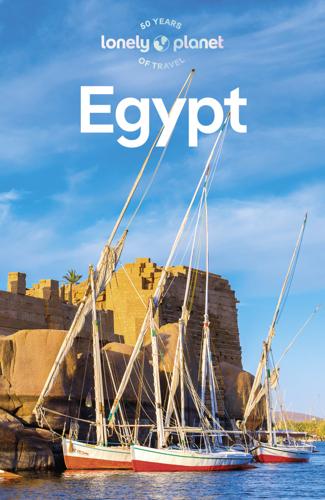
Lonely Planet Egypt
by
Lonely Planet
About 10km southwest of the museum, the fantastical Al Sahaba Mosque has welcomed worshippers only since 2017, but it fuses historic Fatimid, Mamluk and Ottoman architectural styles into a Disney-esque display of huge central domes, golden accents and swirling brickwork up the 70m-tall minarets. Entrance to the mosque’s interior (which is unfortunately not as impressive as the exterior) is at the whim of the guardians. All visitors must dress modestly, covering their knees and shoulders. Scantily clad social media influencers are regularly shooed from the stairs. Al Sahaba Mosque | TUNATURA/SHUTTERSTOCK © The mosque is at the heart of Sharm Old Market, which, despite its name, is a small scrubbed-up grid of wide shopping streets. Stores line up cheek by jowl and sell standard tourist tat, plus luxury handbags, sunglasses and beach essentials.
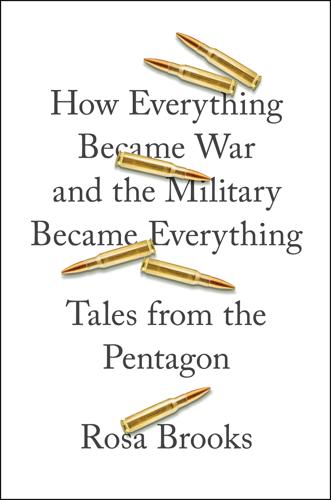
How Everything Became War and the Military Became Everything: Tales From the Pentagon
by
Rosa Brooks
Published 8 Aug 2016
They involve some aggression or use of force, but in many ways their defining characteristic is ambiguity—about the ultimate objectives, the participants, whether international treaties and norms have been violated, and the role that military forces should play in response. Gray zone conflicts abound in today’s world. . . . Each of these confrontations is characterized by “hybrid” threats that may combine subversion, destabilizing social media influence, disruptive cyber attacks, and anonymous “little green men” instead of recognizable armed forces making overt violations of international borders.14 Nadia Schadlow, a former Defense Policy Board member now at the Smith Richardson Foundation, offers a different formulation, arguing that the United States must learn to operate in “the space between war and peace.”

Active Measures: The Secret History of Disinformation and Political Warfare
by
Thomas Rid
Thus, forged and engineered effects mixed with, and solidified into, actual, observable effects—like a liquid cement mix setting and turning into a firm concrete foundation. With the passing of time, reverse-engineering the delicate construction process became harder and harder. Then came the internet, with the hacking and dumping of large volumes of data and social media influence campaigns. Higher numbers and refined, real-time online metrics did not make those measurement devices more reliable, but less so. Higher numbers merely translated into higher perceived confidence in assessments, thus creating an even more seductive illusion of metrics. “Measuring the actual impact of trolling and online influence campaigns is probably impossible,” said Kate Starbird, one of the world’s leading researchers of online disinformation campaigns, who examined the influence of digital disinformation on the Black Lives Matter movement.

We Are the Nerds: The Birth and Tumultuous Life of Reddit, the Internet's Culture Laboratory
by
Christine Lagorio-Chafkin
Published 1 Oct 2018
Then there was a more amorphous problem: all the dubious content swirling around social networks from websites posing as news sources, peddling deliberately false stories. The U.S. Senate launched an investigation into the dissemination of fake news. In the course of it, Mark Warner, a Democratic senator from Virginia, grew concerned that Reddit may have been used as a tool in the Russian campaign for social media influence over the 2016 presidential election. Considering that Reddit’s r/The_Donald was a highly coordinated hub of information analysis and dissemination after the leak of Democratic emails, it was not a far leap. An Oxford University researcher who had studied governmental use of social media to manipulate public opinion told The Hill that patterns she’d witnessed on the site pointed to deliberate efforts to distribute fake news.

Transcend: The New Science of Self-Actualization
by
Scott Barry Kaufman
Published 6 Apr 2020
Research shows that psychotherapy can be highly cost-effective in satisfying people’s need to be seen; it is at least thirty-two times more cost-effective in raising life satisfaction than merely gaining more income.72 Looking at all of this research, Rabbi Hyman Schachtel really seemed to be onto something when he said, “Happiness is not having what you want, but wanting what you have.” SOCIAL MEDIA People will tear you apart and if you’re not strong, it’ll just rip through your soul. . . . [P]eople will be like . . . “You need to get your likes up.” How about I try liking myself? That’ll be actually a challenge. —Social media influencer Brittany Furlan, The American Meme (2018) Excessive social media use is often cited as another culprit of modern loneliness. Today there are many social media outlets to offer the allure of connection, including Facebook, Twitter, Instagram, Tumblr, and Snapchat. There are more ways to be popular to the masses, even if for just a moment, than at any other time in the history of the planet.
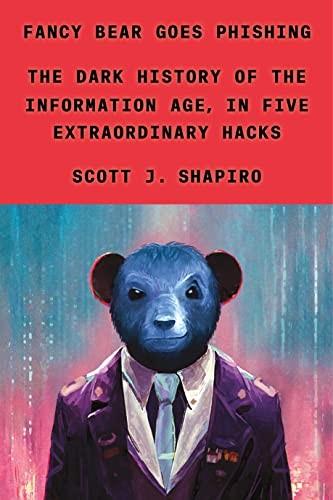
Fancy Bear Goes Phishing: The Dark History of the Information Age, in Five Extraordinary Hacks
by
Scott J. Shapiro
When Billy clicked on the blue “CHANGE PASSWORD” banner, his email client would have sent the following URL to the browser: bit.ly/4Fe55DC0X. The bit.ly URL is generated by Bitly, a URL shortening service. It allows users to convert long domain addresses into shorter ones. Businesses use URL shorteners to make their marketing messages tidier. Social media influencers use them to save space in their posts. And hackers use them to hide the true destinations of their links from users and—critically—their spam filters. The browser would have expanded the shortened URL to the following: Notice the misspelling: “accoounts-google,” not “accounts-google.”

The Rise and Fall of the Neoliberal Order: America and the World in the Free Market Era
by
Gary Gerstle
Published 14 Oct 2022
The distinguished and formerly influential neoliberal economist Lawrence Summers had not.39 The proliferation of new policy ideas and think tanks, the rise of tightly networked groups of political activists, and the emergence of a left-liberal bloc of newspapers, magazines, cable TV anchors, bloggers, podcasters, and social media influencers suggest that a new progressive political order was taking shape. But it was still in its formative—and thus vulnerable—stages. It was not yet clear that there would be enough deep-pocketed donors to support the continued ascent of such a political order if its leaders went through with their threats to target Wall Street and Silicon Valley wealth and power.
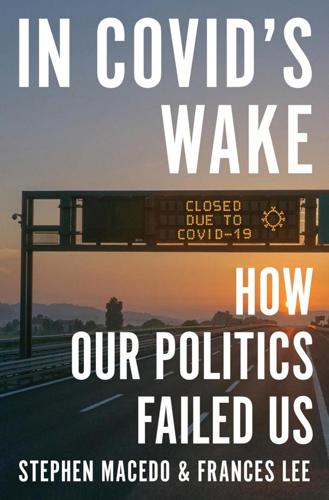
In Covid's Wake: How Our Politics Failed Us
by
Stephen Macedo
and
Frances Lee
Published 10 Mar 2025
Direct U.S. federal spending alone on Covid relief measures totaled more than $5 trillion, nearly a quarter of America’s gross national product in 2020.10 Mobilization against Covid included extraordinary restrictions on free speech. Behind the scenes, public officials pressed social media companies to take down or “shadow ban” the accounts and postings of scientists, academics, and social media influencers accused of spreading misinformation and disinformation. In the summer of 2023, a federal judge characterized this effort as the biggest campaign of government censorship in U.S. history.11 That the Covid pandemic was a stress test for our public health agencies, our economy, our educational systems, and our personal relationships are facts of which we are all too painfully aware.
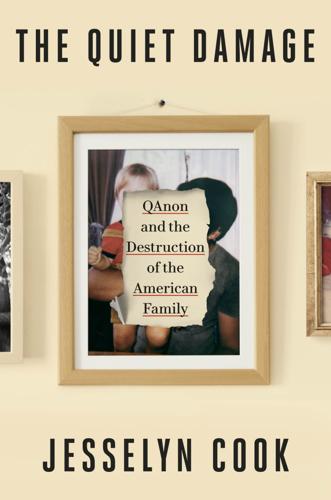
The Quiet Damage: QAnon and the Destruction of the American Family
by
Jesselyn Cook
Published 22 Jul 2024
Hoffner and B. J. Bond, “Parasocial Relationships, Social Media, and Well-Being,” Current Opinion in Psychology 45 (2022): 101306, https://doi.org/10.1016/j.copsyc.2022.101306. GO TO NOTE REFERENCE IN TEXT Influencer marketing was already a booming: “Influencer Marketing Market Size,” Oberlo, updated June 2023, https://www.oberlo.com/statistics/influencer-marketing-market-size. GO TO NOTE REFERENCE IN TEXT Older adults were more susceptible: M. J. Poulin and C. M. Haase, “Growing to Trust: Evidence That Trust Increases and Sustains Well-Being Across the Life Span,” Social Psychological and Personality Science 6, no. 6 (2015): 614–21, https://doi.org/10.1177/1948550615574301.
…
It was a common phenomenon, particularly in the age of online influencers, who put their lives on display like animals at a zoo to create a semblance of intimacy with the strangers who followed them. Over time, these unrequited psychological bonds could become remarkably strong—and persuasive. Influencer marketing was already a booming, multi-billion-dollar industry built off online starlets convincing their adoring fans to buy the ThighMasters and facial cleansers and energy drinks they were shilling. But parasocial dynamics could be used to sell ideas too. And coming from a friend figure, like “Debbie,” conspiracy theories could start to sound less like conspiracy theories.
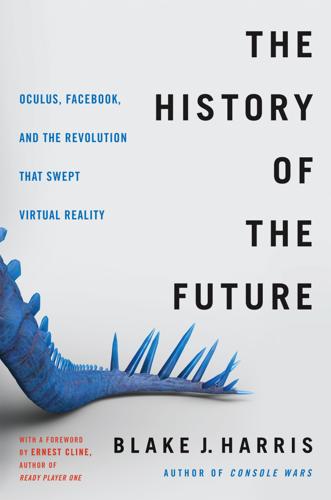
The History of the Future: Oculus, Facebook, and the Revolution That Swept Virtual Reality
by
Blake J. Harris
Published 19 Feb 2019
There was never any kind of internet campaign to malign anyone (or, in fact, do anything beyond pushing billboards and t-shirts into the real world). The reference to “shitposting in real life” on their website is a tongue in cheek reference to a term that means making internet posts with zero information or worth, which is obviously not the actual goal of any campaign with intent to persuade. A wide variety of media outlets and social media influencers have ignorantly and/or maliciously accused myself and Nimble America of trolling, harassment, astroturfing, and copying the Clinton campaign’s well-known paid anonymous internet posting efforts through Correct the Record, unpopular with internet users on both sides of the aisle. Nimble America handled their launch poorly and lack organizational skills, but they are just regular guys who don’t like Hillary Clinton and do like Donald Trump, a set of opinions shared by roughly half our country.

Nexus: A Brief History of Information Networks From the Stone Age to AI
by
Yuval Noah Harari
Published 9 Sep 2024
If anyone objects that this is a fiction, and that they didn’t personally come out of Egypt, Jewish sages have a ready answer. They claim that the souls of all Jews throughout history were created by Jehovah long before they were born and all these souls were present at Mount Sinai.10 As Salvador Litvak, a Jewish social media influencer, explained to his online followers in 2018, “You and I were there together.… When we fulfill the obligation to see ourselves as if we personally left Egypt, it’s not a metaphor. We don’t imagine the Exodus, we remember it.”11 So every year, in the most important celebration of the Jewish calendar, millions of Jews put on a show that they remember things that they didn’t witness and that in all probability never happened at all.
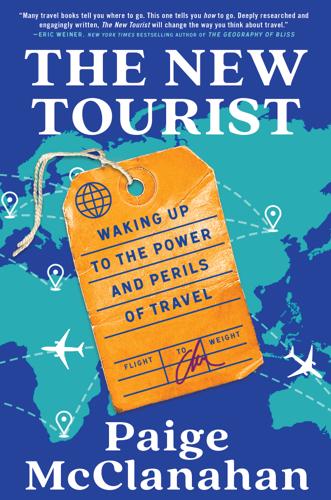
The New Tourist: Waking Up to the Power and Perils of Travel
by
Paige McClanahan
Published 17 Jun 2024
Gore, “Tourism Promo Campaign Helped the Industry,” Tourism Review News, December 27, 2010. 22 Leslie Koch, “The Value of Blogger Press Trips: Interview with Jordan Tourism Board’s Managing Director,” BIIB Blog, Bridge to Bhutan, May 18, 2011, https://bridgetobhutan.com/blog/2011/05/18/the-value-of-blogger-press-trips/#more-1144. 23 Keith Jenkins, author Zoom interview, May 2023. 24 “Influencer Marketing Market Size (2016–2023),” influencer marketing hub, Oberlo, https://www.oberlo.com/statistics/influencer-marketing-market-size. 25 “Influencing Travel: How to Turn Lookers into Bookers,” Stackla, 2019, https://www.nosto.com/wp-content/uploads/2019/03/Travel-Ebook-Digital-US_FINAL.pdf. 26 Expedia Group Media Solutions, “Gen Z Travelers: More Open to Influence and Inspiration Than Other Generations,” Business Wire, November 14, 2018, https://www.businesswire.com/news/home/20181114005361/en/Gen-Travelers-Open-Influence-Inspiration-Generations. 27 Donald Leadbetter, author Zoom interview, May 2023. 28 Elle, “Elle’s 30 Places to Instagram in 2023,” June 28, 2023, https://www.elle.com/culture/travel-food/a27561982/best-instagram-spots/. 29 Philip Schofield, “Holiday Destination Chosen Based on How ‘Instagrammable’ the Holiday Pics Will Be,” Schofields Insurance, April 3, 2017, https://www.schofields.ltd.uk/blog/5123/two-fifths-of-millennials-choose-their-holiday-destination-based-on-how-instagrammable-the-holiday-pics-will-be/. 30 Philip Schofield, “The New Travelling Generation: Gen Zs Mark TikTok as Their Top Holiday Influencer,” Schofields Insurance, February 3, 2023, https://www.schofields.ltd.uk/blog/6850/gen-z-travel-influence/. 31 Sally French, “This Is the Most Instagrammed Place in the World,” New York Post, May 10, 2017, https://nypost.com/2017/05/10/this-is-the-most-instagrammed-place-in-the-world/. 32 Sean P.

Frenemies: The Epic Disruption of the Ad Business
by
Ken Auletta
Published 4 Jun 2018
They created in-app messages, sent Friday evenings to sports bars, containing a five-dollar discount coupon with the ride-sharing Lyft. Campari enjoyed a huge jump in its brand awareness, and probably saved lives. Among the more effective marketing ploys to reach younger consumers has been influencer marketing. Young influencers have their own channels or platforms on YouTube, Instagram, Facebook, Snapchat, as well as their own Web sites. The route Samantha Fishbein, Aleen Kuperman, and Jordana Abraham took was unusual. They are not glamorous, wear little makeup, pin their hair up quickly, and enjoy the easy rapport of three girls who grew up around the corner from each other in Roslyn, Long Island, attended the same public schools and the same college.
…
ABC, 3 Abraham, Jordana, 220–22 Accenture, 209, 212–13, 254 Acxiom, 163 Ad Age, 262–63 Adams, Charles, 121 ad blockers, 32, 47, 81, 171–75 AdBlock Plus, 173–74 Apple’s inclusion of, in Phones and iPads, 171–72 Kassan on, 174, 176 legality of, 174–75 native ads as response to, 81–82, 175 number of consumers using, study on, 173 Samsung’s addition of, for Android phones, 172–73 AdBlock Plus, 173–74 ad campaigns, 41–42 Bernbach’s philosophy on, 42 Ogilvy’s philosophy on, 42 Reeves’s philosophy on, 41 addressable advertising, 160–61 Adobe, 213–14 Advertising, The Uneasy Persuasion (Schudson), 183–84 Advertising Age, 127, 254 advertising agencies advertisers, power wielded by, 42–43 agency reviews, 13–15, 18–22, 44, 79–80 ANA report (K2 transparency report) and, 239–45, 319 changes in agency/client relationship, 16, 17, 20 client concerns and, 9, 20–22, 31–35 client mistrust of, 35–36, 48–49, 76, 144, 244, 245 client’s moving work in-house and, 79–81, 219–20 CMOs, erosion of power of, 43–44, 77–78 compensation system (See compensation system) consulting companies as competitors, 208–13 consumer choices brought about by new technologies and, 33–34, 45–47 creative agencies, threats to, 205–6 data and (See data) digital fraud and, 77–78 gender equality and, 232–3 holding company business model and, 10–11, 104–5 influencer marketing and, 220–22 Kassan on challenges facing, 48–50, 99–100 kickbacks or rebates and (See kickbacks/rebates by advertising agencies) lack of new leadership at, 99–100 Mandel’s allegations of kickback/rebate schemes, 7–11 media agencies bought by, 143 MediaLink’s intermediary role and, 12–14, 31, 39 professionals leaving agencies, survey on, 235–36 public relations firms as competitors, 80–81, 216–19 publishers as disruptors, 206–8 publishing platforms performing creative functions of, 81–82 reaction of agencies to kickback allegations, 14–16 salaries at, 236 sexual harassment and, 230–34 single agency model, 279–82 tech companies as competitors, 213–16 advertising and marketing, 1–5 advertising fatigue, evidence of, 47 agencies (See advertising agencies) clients (See advertising clients) consumer economy, role in, 4, 23–25 criticisms of, 182–86 disruption threat to, 30–31 economic impact of, 3, 24 existential threats to industry, 299–304 flight of advertisers to new media, 3 governmental regulation of, 168–69 history of, 27–28 inflection points for new waves of, 27–28 number or persons employed in, 29 scope of services meeting definition of, 28–29 size of industry, 2, 10 as subsidy for media and Internet, 10, 25 technology and, 31–37, 45–47 Trump election, implications of, 294–99 advertising clients agency reviews, 13–15, 18–22, 44 fears and concerns of, 9, 20–22, 31–35 mistrust of advertising agencies, 35–36, 48–49, 76, 144, 244, 245 moving work in-house, 79–81 new technologies and digital platform choices and, 76–77 power wielded by, 42–43 procurement officers, use of, 43–44, 78 advertising holding companies, 10–11, 104–5 AI (artificial intelligence), 262, 266–69, 302–4 Airbnb, 47 Alexa, 33, 159, 262, 302–3 Alibaba, 146 Alvio, 287 Amazon, 33, 95, 137 Alexa, 33, 159, 262, 302–3 data, refusal to share, 126 data collection, 159 Kindle, 46 Prime, 313 threat to advertising and marketing industry posed by, 262–63, 300 American Association of Advertising Agencies (4A’s) ANA report denounced by, 242–43 professionals leaving agency jobs, survey on, 235–36 Transformation 2016 conference, 229–37 transparency guidelines issued by, 229–30 ANA.
…
campaign, 85 Generation Z, 167 branded content as way to reach, 181–82 privacy issues and, 167–68 profile of, 180–81 Gittlin, Grant, 69, 336 Glock, Bernhard, 19, 20, 21, 65 Goldberg, Andrew, 85, 266–67, 282 Goodby, Jeff, 143, 235, 251 Goodman, Scott, 248 Goodson, Scott, 308–9 Google, 1, 3, 33, 47, 117, 177, 324 advertising revenues of, 23, 130 as competitor of ad agencies, 129, 130–31 data, refusal to share, 126, 149 data collection, 159 as digital duopoly with Facebook, 124–25 DoubleClick, 33, 110–11, 276 Google About Me page, 159 government reviews of privacy protections of, 326 initial ambivalence to advertising of, 130–31 measurement mistakes made by, 272–73 original program offerings, expansion of, 322 Sorrell’s view of, 101, 117, 123–24, 127 talent poaching by, 127 threat to advertising and marketing industry posed by, 299–300 YouTube, 197, 199–200, 272, 314 Googled: The End of the World as We Know It (Auletta), 3 Gotlieb, Chloe, 233 Gotlieb, Elizabeth Billick, 142 Gotlieb, Genya, 140–41 Gotlieb, Irwin, 8, 10, 79, 139–43, 191, 332 on ANA report, 243–44 on Cannes Lions Festival, 257, 336–37 on changes in agency/client relationship, 17 denies using rebate system at WPP, 11, 15, 16 early career of, 142 family history of, 140–42 hired by Sorrell and becomes CEO of GroupM, 143 on Kassan/MediaLink, 14, 60, 72 negotiating skills of, 144–45 on procurement officer’s role, 43–44 on television business fundamentals, 321 on 2016 Upfronts, 201, 202 See also GroupM Gotlieb, Jacob, 140–41 Grazer, Brian, 84 Greed and Glory on Wall Street (Auletta), 2–3 Greenberg, Bob, 15, 36, 113, 251, 253, 288–91 See also R/GA Greenblatt, Bob, 302 Grey Advertising, 8, 108 GroupM, 8, 11, 15, 17, 139 advertising dollars placed by, 140 compensation of, 140 data and tech operations of, 147–54 global expansion of, 144–47 Grove, Hannah, 301 Guardian, 208, 313–14 Guardian Labs, 208 Haber, Jack, 67–68, 76, 114, 184, 229–30 Halpern, Sue, 158 Harper, Marion, Jr., 104, 105, 144, 232 Harvard Business Review, 104, 117 Hasker, Steve, 197 Havas, 10, 273 agency reviews and, 22 brand identity of, 101 revenues of, 100 Hearst, 208 Hearts & Science, 100 Hemingway, Ernest, 37 Henderson, Jay, 211 Hidden Persuaders, The (Packard), 182 Hill, Nancy, 67, 230, 232–33 holding company business model, 10–11, 104–5, 329–33 Holt, Dennis, 59–60 Homonoff, Howard, 65 Horizon Media, 10 brand identity of, 101 revenues of, 100 Hotchkiss, Gordon, 47, 301 Howard, Ron, 84, 305 Hulu, 313 Hussey, Michael, 165 IBM, 47, 209–212, 254 Interactive Experience (IX) division, 209–11 Watson, 211–12 weather data and, 211–12 identity theft, 163–64 Iger, Bob, 192 Ikea, 307 The Image: A Guide to Pseudo-Events in America (Boorstin), 186 Imagine Entertainment, 84 Immelt, Jeff, 86 income, median household, 312 India, 146–47 influencer marketing, 220–22 Instant Messages (IMs), ads delivered by, 37 integrated communications, 218–219 Interactive Advertising Bureau, 166 International Video Entertainment, 55–56 Internet, 28 Internet of things (IoT), 269–70 Interpublic Group (IPG), 10, 59–61, 143 agency reviews and, 22 brand identity of, 100 Harper, Jr.’s holding company model for and founding of, 104–5 lack of new leadership at, 99 revenues of, 100 J.
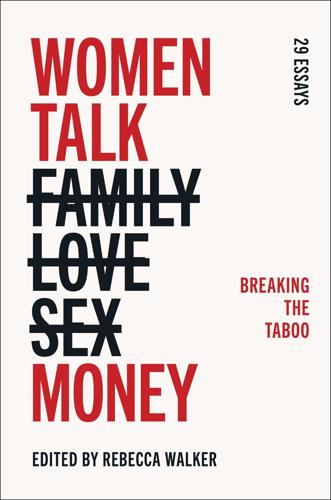
Women Talk Money: Breaking the Taboo
by
Rebecca Walker
Published 15 Mar 2022
I wrote stories about my mother’s death, my single-lady woes, and the string of heartbreaks I weathered over the past decade. I developed recipes for green juices and honey face masks, and—equipped with a blog URL, an iPhone, and a steadily growing internet presence—I began to create #sponcon: sponsored content for brands, propagated by social media. With the wind of a multibillion-dollar influencer marketing industryV beneath my millennial wings, I became that dreaded social media succubus dubbed an “influencer”: one whose virtual presence sways the wants of an ever-hungrier audience. Suddenly, my very presence was commodified. I was paid to attend branded PR events, to talk up products to my followers, and often, to play pretend at blogger friendships—a performance of social bonding engineered to ooze relatability even as it sold the goods.
…
The US Department of Housing and Urban Development’s Very Low Income Level threshold in Los Angeles in 2010 was $29,000. The 2020 Very Low Income Level threshold for Los Angeles is $39,450. And anyone who makes less than $63,100 a year in Los Angeles is officially deemed Low Income. From laalmanac.com and the US Department of Housing and Urban Development. V. Brands will spend up to $15 billion on influencer marketing by 2022 based on Mediakix data (Business Insider, January 5, 2021). VI. Dr. Ellen Hesper of the London School of Economics writes, “Being open about the amount of work [read: “labor” or “money”] that goes into maintaining a cohesive, true online persona [is] a no-go in a digital world where authenticity is key.”
…
The US Department of Housing and Urban Development’s Very Low Income Level threshold in Los Angeles in 2010 was $29,000. The 2020 Very Low Income Level threshold for Los Angeles is $39,450. And anyone who makes less than $63,100 a year in Los Angeles is officially deemed Low Income. From laalmanac.com and the US Department of Housing and Urban Development. V. Brands will spend up to $15 billion on influencer marketing by 2022 based on Mediakix data (Business Insider, January 5, 2021). VI. Dr. Ellen Hesper of the London School of Economics writes, “Being open about the amount of work [read: “labor” or “money”] that goes into maintaining a cohesive, true online persona [is] a no-go in a digital world where authenticity is key.”

No Filter: The Inside Story of Instagram
by
Sarah Frier
Published 13 Apr 2020
The company made it a violation of their rules to post sponsored content without using that format, seemingly taking the FTC seriously. But then Instagram didn’t enforce the policy, because after it’d made a tool that would allow users to comply, Instagram transferred any liability it might have had to the influencers and advertisers themselves. An early influencer marketing agency called MediaKix found that for the top 50 Instagram influencers, 93 percent of the posts that mentioned brands didn’t adhere to FTC disclosure requirements. A couple months later, the FTC escalated the warning, directly notifying 20 different stars and influencers, including actress and singer Vanessa Hudgens, supermodel Naomi Campbell, and actress Sofia Vergara, that they might be in violation.
…
There were supposed to be 33 musical acts, including Blink-182, Major Lazer, Tyga, and Pusha T. Behind the festival was marketer slash con man Billy McFarland, a mastermind of hype, who got the rapper Ja Rule to be a cofounder and the digital marketing group FuckJerry to promote it. McFarland understood the power of influencer marketing, paying Kendall Jenner $250,000 for a single Instagram post to drive ticket sales. He preyed directly on the lifestyle Instagram influencers valued. There would be exclusivity; people would get to fly in on a custom VIP Boeing 737. Guests would stay in eco-friendly luxury domes. They would be asked to preload money onto wristbands, to have a completely cashless experience.
…
“Consumers have the right… advertising,”: Federal Trade Commission, “Lord & Taylor Settles FTC Charges It Deceived Consumers Through Paid Article in an Online Fashion Magazine and Paid Instagram Posts by 50 ‘Fashion Influencers,’ ” press release, March 15, 2016, https://www.ftc.gov/news-events/press-releases/2016/03/lord-taylor-settles-ftc-charges-it-deceived-consumers-through. An early influencer marketing agency: “93% of Top Celebrity Social Media Endorsements Violate FTC Guidelines,” MediaKix, accessed September 20, 2019, https://mediakix.com/blog/celebrity-social-media-endorsements-violate-ftc-instagram/. After an FBI investigation and a class action: Lulu Garcia-Navarro and Monika Evstatieva, “Fyre Festival Documentary Shows ‘Perception and Reality’ of Infamous Concert Flop,” NPR.org, January 13, 2019, https://www.npr.org/2019/01/13/684887614/fyre-festival-documentary-shows-perception-and-reality-of-infamous-concert-flop.
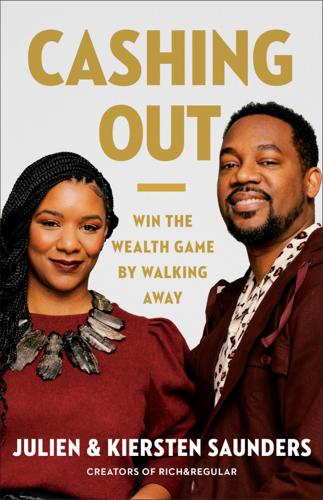
Cashing Out: Win the Wealth Game by Walking Away
by
Julien Saunders
and
Kiersten Saunders
Published 13 Jun 2022
This is why that same $10,000 would be worth $20,000 in ten years, but then worth $40,000 in twenty. As long as you’re dealing with small amounts, normal market returns are going to be slower. Content Creators Make How Much?! In 2015, toward the latter part of our corporate career, one of the last projects we worked on was an influencer marketing campaign, which at the time was relatively new. In short, our company agreed to set aside budget to find influential people online who would be willing to post content about their experience with the company’s brand. One guy was particularly intriguing because he was a Black father of two who celebrated the joys and pitfalls of parenting and wanted to break the persistent stereotype that Black men weren’t active participants in raising their children.
…
So while the label “influencer” may make you think of self-obsessed millennials and Gen Zers who have nothing better to do with their time, you should know there are plenty of them who are earning significant amounts of money doing work they actually enjoy. The internet is a gold mine for making big money quickly with minimal effort. Unlocking its earning potential requires you to accept working in a faster-paced environment than you’re likely used to and embracing innovation. Since our introduction to influencer marketing, much has changed in the industry. Being an influencer is no longer considered a niche form of marketing as more mainstream brands are investing heavily in influencers as major parts of their brand strategy. The rise of the influencer has given birth to what is now called the creator economy, a more professional term that acknowledges how expansive the creators’ marketplace has become and the value they provide to companies and customers.

Trading and Exchanges: Market Microstructure for Practitioners
by
Larry Harris
Published 2 Jan 2003
• Exchanges, brokers, clearing agencies, and information providers freely create any market structures that the legal system permits. They also frequently propose—and sometimes even implement—structures that laws and regulations do not currently permit. • Issuers influence market structure through the decisions they make about where to list their securities. • Traders influence market structure through the decisions they make about where to trade. • Investors and the general public influence market structure by voting for politicians who favor their interests and by lobbying those politicians. • Finally, the leaders of trade organizations, public interest groups, and watchdog agencies often lobby on behalf of their constituents.
…
This chapter introduces a paradigm for how we should make these decisions. Everyone has an economic interest in how markets should be organized because everyone—whether they trade or not—benefits from having well-functioning markets. Not surprisingly, opinions about market structure vary widely. Many people try to influence market structure: • Legislators pass laws that dictate structures. • Regulators interpret those laws, propose new ones, and selectively enforce them. • Government administrators propose laws, veto laws, and use their influence in myriad ways to promote their interests. In some countries, they also write the laws
…
If you agree that markets should be organized to maximize the benefits they produce for the economy, then you must be familiar with these benefits so you can consider them when you evaluate alternative policies. If you believe that markets should be organized to promote other objectives, you should at least be aware of the costs to the economy of the policies that your objectives favor. Even if you have no interest in influencing market structures, you should find these discussions interesting. Well-functioning markets are largely responsible for the tremendous wealth that free market-based economies have generated and continue to generate. This chapter helps explain why some countries are rich while other countries are poor.

Narrative Economics: How Stories Go Viral and Drive Major Economic Events
by
Robert J. Shiller
Published 14 Oct 2019
Having regular communications with successful or socially committed people helps a young person gain a sense of identity in the mentor’s life stories, or in stories that the mentor tells of others in the same circle.4 Mentoring groups are especially effective for women and minorities who may have felt little ownership of such stories.5 Two new phrases, influencer marketing (since 2015) and social media marketing (since 2009), have been gaining popularity. Marketing firms, notably shareablee. com and hawkemedia. com, offer influencer marketing, systematically finding influential people who allow marketing to them or with them via social media. Such sites should increase contagion rates for promoted stories and ideas. Even as information technology is affecting the transmission of economic narratives that affect the human mind, it could conceivably go further and replace some of the ultimate decision-making process that individuals use.
…
See also housing booms housing market: narratives about, before 2007–9 financial crisis, 227; speculative bubbles in, 216–17; surveys of US homebuyers in, 285–86; today’s status of, 226–27 Howard, Milford, Wriarson, 166 Hull, Clark, 195 human interest of economic narratives: added by celebrities, xii, 100–102, 153; impact on events and, 77; many dimensions of, 79–80 human interest of stories, 32 human tragedy narratives in Great Depression, 137, 141 Hume, David, 58, 71 hyperinflation in Germany after World War I, 247, 266 hypnosis narrative, 122 ICOs (initial coin offerings), 76 identity economics, xxi “I Have a Dream” speech (King), 153–54 Iliad (Homer), 174, 314n1 immunity to disease, 20, 289 Index of Consumer Sentiment, 119 Industrial Revolution: labor-saving machinery narrative and, 9; narratives about confidence and, 114; real estate narratives and, 212; as term introduced in nineteenth century, 175 inequality: artificial intelligence narrative and, 273; Bitcoin and fear of, 8–9; burgeoning public attention to, 210–11; decline in modesty narrative and, 150; George’s Progress and Poverty on, 111, 178–79; labor-saving machinery and, 178–79, 180; opposition to gold standard and, 166; origins of the boycott and, 240 infectives in an epidemic, 23, 289; declining contagion rate and, 296 inflation: anger about, 239, 245, 247, 263–64, 265–66; central bank role in control of, 261, 262; cost-push inflation, 258–59, 259f, 260; demand-pull inflation, 258; economic growth and, 319n10; economists’ views of, in 1997 study, 263, 264; highest in US from 1973 to 1981, 262; hyperinflation in Germany after World War I, 247, 266; as negative terminology, 172–73; public views of, in 1997 study, 263–64; runaway US inflation of 1970s, 256; sources of evil blamed for, 263, 266; stock market response to decline in, 29; unusually tame now, 266; wage-price spiral narrative and, 258–62; during wars, 265–66; after World War I, 243–49, 250; after World War II, 255–56 Inflation: A World-Wide Disaster (Friedman), 262 inflation targeting, 261, 262 influencer marketing, 274–75 influenza: new forms and new epidemics of, 271; pandemic of 1918, 108, 198, 252; SEIR model of epidemics of, 294 information cascades, 300 information technology: changing contagion rates and recovery rates, 273–75; communication of stories through, xviii; history of inventions in, 273; for research in narrative economics, 279.
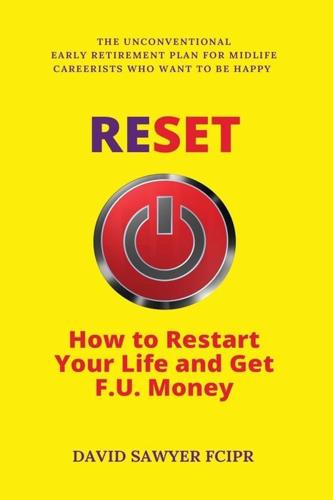
Reset: How to Restart Your Life and Get F.U. Money: The Unconventional Early Retirement Plan for Midlife Careerists Who Want to Be Happy
by
David Sawyer
Published 17 Aug 2018
Still, not to worry, they think, although traditional media is dying there’ll always be a place for it, and demand for my specialised skills. Just how much of a demand and will it be enough to see them to retirement, is the primary concern of most PRs in their mid-forties upwards. Digital is at the same time the single biggest challenge and opportunity facing the PR industry today. In agency land, digital marketers, influencer marketers, bloggers, content marketers, search engine optimisation (SEO) experts and even management consultants, are staking a claim on the digital communications mishmash, and even beginning to eat PR’s media relations lunch. Name me a decent-sized SEO agency now that doesn’t have a PR person on staff.
…
I could say they’re too numerous to mention, but, if I’d reached the Acknowledgements, having helped a friend – and spent hours and days listening to his incessant self-indulgent obsessing – I’d be a bit miffed if my name didn’t appear in lights. Let’s invite them up to take a bow. First up, influencer marketing expert Scott (Guthrie). I’ve met Scott only once, yet his friendship has come to mean a great deal to me. We’ve both worked in the PR industry for more years than we care to remember. And we both “went digital” at pretty much the same time, starting in 2013; him in Sydney, me in Glasgow. Over the last two years, we’ve skyped (often glass in hand) every month.
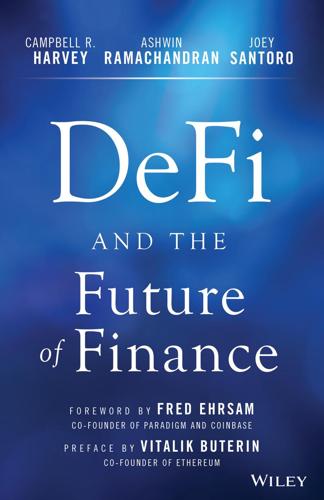
DeFi and the Future of Finance
by
Campbell R. Harvey
,
Ashwin Ramachandran
,
Joey Santoro
,
Vitalik Buterin
and
Fred Ehrsam
Published 23 Aug 2021
Without a failsafe, the tokens are functionally locked within the protocol. Informally, these are known as “bricked” funds and cannot be recovered. An economic exploit would be subtler. There would be no explicit failure in the logic of the code but rather an opportunity for an economically equipped adversary to influence market conditions to profit inappropriately at the contract's expense. For example, consider a contract that takes the role of an exchange between two tokens and determines the price by looking at the exchange rate of another similar contract elsewhere on chain and offering that rate with a minor adjustment.
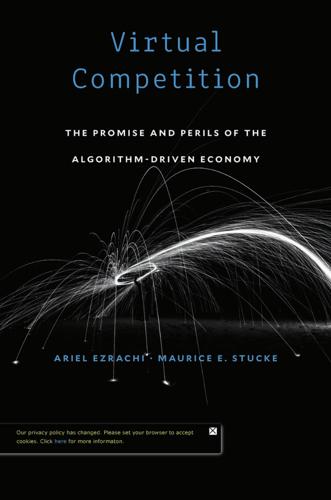
Virtual Competition
by
Ariel Ezrachi
and
Maurice E. Stucke
Published 30 Nov 2016
But if each major office supply retailer delegates its pricing to the same vendor, and if the vendor promises in its advertising materials to maximize profits, then surely each retailer knows that the vendor’s pricing algorithms will make use of its own and its rivals’ information in assessing prices. Each competitor would surely be aware that using the same third-party pricing vendor would likely influence market conditions. Thus, we start to see the shape of a traditional hub-and-spoke conspiracy, where each retailer provides the hub with data and pricing authority, knowing that its rivals are doing the same. The vendor’s pricing algorithm does, in fact, use the market information it collects from each retailer in determining the optimal prices for each retailer’s products.
…
Competition Appeal Tribunal elaborated that an indirect information exchange through a third party will amount to an objectionable hub-and-spoke conspiracy when two phases are present: 1. Retailer A discloses to supplier B its future pricing, with the intention that B will pass that information to other retailers in order to influence market conditions. 2. Retailer C receives the information from supplier B, knowing the circumstances in which its competitor retailer A disclosed it to B, and C makes use of that information in determining its own future pricing intentions; Case 1188/1/1/11, Tesco v. Office of Fair Trading, [2012] CAT 31, para. 57, 58.

Competition Overdose: How Free Market Mythology Transformed Us From Citizen Kings to Market Servants
by
Maurice E. Stucke
and
Ariel Ezrachi
Published 14 May 2020
Newman, “The Myth of Free,” George Washington Law Review 86, no. 2 (March 2018): 513, 563, https://www.gwlr.org/the-myth-of-free/. 121.Newman, “The Myth of Free,” 563. 122.Federal Trade Commission, “FTC Staff Reminds Influencers and Brands to Clearly Disclose Relationship,” news release, April 19, 2017, https://www.ftc.gov/news-events/press-releases/2017/04/ftc-staff-reminds-influencers-brands-clearly-disclose. 123.Richard Wong, “Influencer Marketing Is Going Mainstream with Facebook’s Upcoming Tool,” Adweek, June 25, 2018, https://www.adweek.com/digital/influencer-marketing-is-going-mainstream-with-facebooks-upcoming-tool/. 124.Jack Nicas, “They Tried to Boycott Facebook, Apple and Google. They Failed,” New York Times, April 1, 2018, https://nyti.ms/2GpLrnv. 125.Autorité Report, 54. 126.Facebook, “Reach More People with Facebook Audience Network,” accessed May 2, 2019, https://www.facebook.com/audiencenetwork/products/advertisers.

Palo Alto: A History of California, Capitalism, and the World
by
Malcolm Harris
Published 14 Feb 2023
He settled his gaze on Yosemite’s sublime vistas and brought them home in slices for sale. The book was a hit. Unlike commission-dependent portraitists, Muybridge was an entertainer, and he enjoyed being both artist and subject. A later Yosemite self-portrait shows him dangling his legs from a sheer rock cliff, thousands of feet off the ground, like a social media influencer. The Governor first hired Helios in 1872 to document his Sacramento mansion and many fine possessions, applying new technology to the classic form. Though by then Muybridge had a policy against taking boring photos inside people’s houses, other people didn’t have houses like Stanford’s, and Stanford was a good friend to make in California, so Helios made an exception.
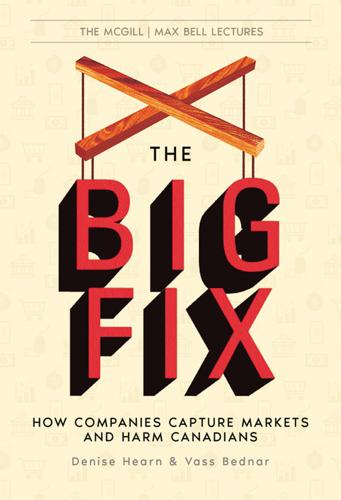
The Big Fix: How Companies Capture Markets and Harm Canadians
by
Denise Hearn
and
Vass Bednar
Published 14 Oct 2024
What initially made e-commerce so great—primarily, the ability to quickly search for product comparators across a range of stores and geographies, price compare, and be informed by reviews—has become unnecessarily difficult and disorienting. It’s not just counterfeit products. It’s getting harder to make the best possible choice when you shop because firms of all sizes do sneaky things like preference their own products, make inflated claims through undisclosed influencer marketing, secretly change the shape and size of their products, degrade product quality, or rush you to buy things online through deceptive hurry-up design. Our trust is being manipulated and exploited, and the tactics used by firms to take advantage of consumers are making markets less knowable and more confusing.

Economics Rules: The Rights and Wrongs of the Dismal Science
by
Dani Rodrik
Published 12 Oct 2015
They bring in a new dimension that may be more relevant in some settings. Consider how economists’ understanding of the most basic question in economics has evolved: How do markets really work? In the beginning, the focus was markets that were fully competitive, with a large number of producers and consumers, none of whom could influence market prices. It was in the context of such competitive markets that the fundamental efficiency properties of a market economy were established. But there was also an early strand of work that analyzed outcomes when markets were imperfectly competitive, either monopolized by a single producer or dominated by a couple of large firms.
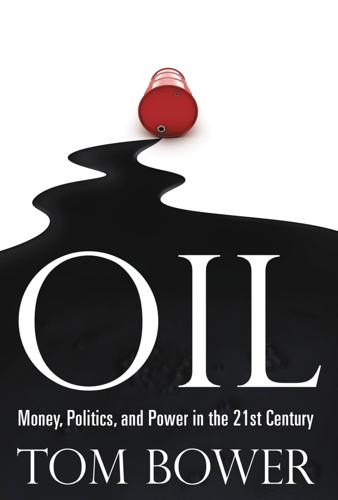
Oil: Money, Politics, and Power in the 21st Century
by
Tom Bower
Published 1 Jan 2009
Although consumption in the West had been falling for over a year, the IEA, based in Paris, still predicted that overall oil consumption in 2008 would rise by 1 percent to 89 million barrels a day. The average in fact would be 85.8 million barrels. Tantalizingly, subsequent research would suggest that speculators had not unduly influenced markets. As the hedge funds were buying, the more passive pension funds were selling. The markets were operating perfectly. Yet misjudgments about the panic had sparked a lust for regulation, especially for “forward” contracts. Suspiciously, while the CFTC, acknowledging the research, would abandon regulating “forward” deals, European regulators appeared determined to impose costly rules despite the threat of trade moving to Switzerland, to New York or to Dubai.
…
In 2008, the corporation invested $26.1 billion to produce oil and spent $35.7 billion to buy back shares. Compared to Chevron’s $22.8 billion investment, ExxonMobil paraded the virtue of conservatism just as the crash reconfirmed that the oil majors were minnows. Vulnerable to blackmail, stricken by falling prices, unable to influence markets and controlling just 5 percent of the world’s oil, they were squeezed by the national oil producers, and forced to survive by their wits. Strong only in marketing gas from the pumps, their fate depended on acquisition, and each merger constricted the investment to find more oil. Shell and BP planned to squeeze costs by more staff cuts.
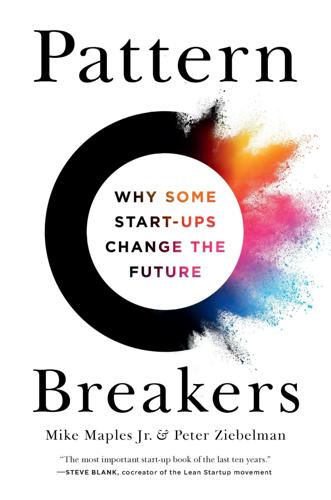
Pattern Breakers: Why Some Start-Ups Change the Future
by
Mike Maples
and
Peter Ziebelman
Published 8 Jul 2024
Using her charisma and storytelling skills, she was able to attract high-profile board members and significant investment. However, it later emerged in court testimony that the technology she touted did not work as promised. She was convicted of massive fraud and is now serving time in prison. Billy McFarland promoted the luxurious Fyre Festival using social media and influencer marketing. The event was considered a total disaster, and McFarland pleaded guilty to fraud and was sentenced to years in prison. The line between unconventional brilliance and fraud can sometimes appear blurry, especially in fast-moving industries like technology. Charisma and public attention can sometimes mask serious ethical and legal shortcomings.
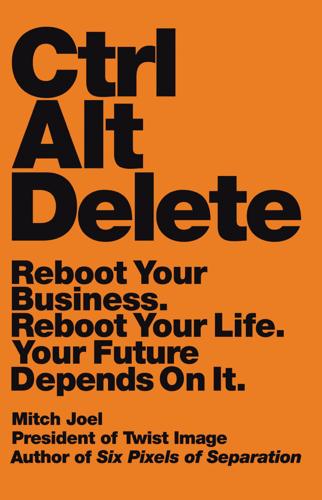
Ctrl Alt Delete: Reboot Your Business. Reboot Your Life. Your Future Depends on It.
by
Mitch Joel
Published 20 May 2013
Individuals threatening to call a brand out online can now be referenced to see just how much their message may (or may not) amplify and spread. Mark W. Schaefer (the executive director of Schaefer Marketing Solutions and a professor at Rutgers University) published an excellent book on this topic titled Return on Influence: The Revolutionary Power of Klout, Social Scoring, and Influence Marketing, which dives into this topic with much more depth and analysis. If you’re trying to understand how to harness the power of your own individual clout (or Klout), I highly recommend his book. If you’re still unsure as to how relevant this all is (and will be), Schaefer is quick to remind me that it’s not uncommon for applicants to include their Klout score on their résumés.

Straight to Hell: True Tales of Deviance, Debauchery, and Billion-Dollar Deals
by
John Lefevre
Published 4 Nov 2014
In fact, when the HKEx tried to implement measures to shorten the lunch break, there were protests. In the fixed-income world, activity doesn’t officially stop, but markets hibernate from noon until the London open. It’s not so much a function of taking a break as it is waiting to get a sense of how European sentiment will influence market direction. This means the typical lunch break is informally either two or three hours, depending on daylight saving time. (The clocks never change in Asia.) I have a feeling that this is going to get me in trouble. A few days later, I am once again invited to join some new colleagues over lunch—this time for a trip to the spa.

23 Things They Don't Tell You About Capitalism
by
Ha-Joon Chang
Published 1 Jan 2010
Why are there such huge differences between the things that you can buy in different countries with what should be the same sums of money? Such differences exist basically because market exchange rates are largely determined by the supply and demand for internationally traded goods and services (although in the short run currency speculation can influence market exchange rates), while what a sum of money can buy in a particular country is determined by the prices of all goods and services, and not just those that are internationally traded. The most important among the non-traded things are person-to-person labour services, such as driving taxis and serving meals in restaurants.
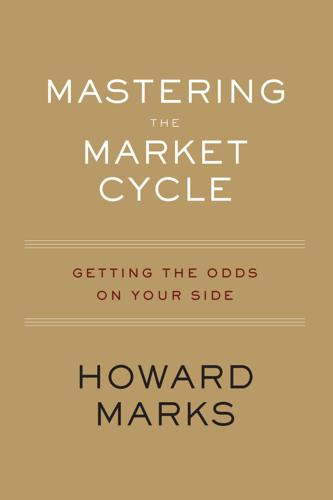
Mastering the Market Cycle: Getting the Odds on Your Side
by
Howard Marks
Published 30 Sep 2018
But it’s equally significant to note that while cycles occur in a variety of areas due to these serial events, cyclical developments in one area also influence cycles in others. Thus the economic cycle influences the profit cycle. Corporate announcements determined by the profit cycle influence investor attitudes. Investor attitudes influence markets. And developments in markets influence the cycle in the availability of credit . . . which influences economies, companies and markets. Cyclical events are influenced by both endogenous developments (including the cyclical events that precede them) as well exogenous developments (events occurring in other areas).
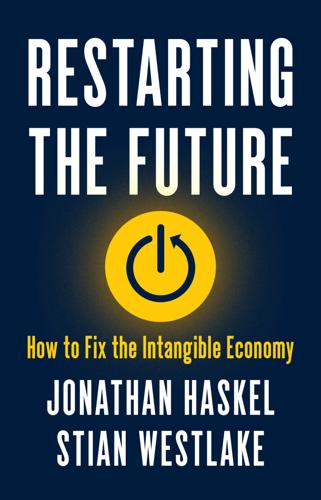
Restarting the Future: How to Fix the Intangible Economy
by
Jonathan Haskel
and
Stian Westlake
Published 4 Apr 2022
July. https://obamawhitehouse.archives.gov/sites/default/files/docs/licensing_report_final_nonembargo.pdf. De Soto, Hernando. 2000. The Mystery of Capital: Why Capitalism Triumphs in the West and Fails Everywhere Else. New York: Basic Books. De Veirman, Marijke, Liselot Hudders, and Michelle R. Nelson. 2019. “What Is Influencer Marketing and How Does It Target Children? A Review and Direction for Future Research.” Frontiers in Psychology 10 (December). https://doi.org/10.3389/fpsyg.2019.02685. Diewert, W. E. 1976. “Exact and Superlative Index Numbers.” Journal of Econometrics 4 (2): 115–45. https://doi.org/10.1016/0304-4076(76)90009-9.
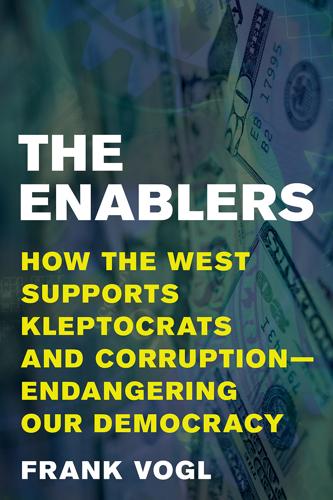
The Enablers: How the West Supports Kleptocrats and Corruption - Endangering Our Democracy
by
Frank Vogl
Published 14 Jul 2021
They were no less apologetic when HSBC was forced to pay around $100 million in penalties to settle yet another scandal—this one involved manipulating international interest rates18: together with other major banks, executives at HSBC regularly and illegally fixed the so-called LIBOR interest rate, which directly influences market interest rates across the financial system. Their actions, in fact, gave them a profitable means to game the system. Flint and Gulliver were bashed in the British press,19 but no matter. Once again, the establishment rallied to provide support and both of them retired on schedule in 2017 with full pensions.

Let them eat junk: how capitalism creates hunger and obesity
by
Robert Albritton
Published 31 Mar 2009
N OT E S Smoking cigarettes is the second leading cause of death in the world (Epstein, 2007: 38). Brandt (2007: 153). Epstein (2007: 38). Brandt (2007: 167). Brandt (2007: 394). Califano (2006: 143). Brandt (2007: 227). Brandt (2007: 249). Brandt (2007: 249). Brandt (2007: 459). Brandt (2007: 7–9). Brandt (2007: 10). Nestle (2006: 64). “Food is an area where influence marketing and the decline of parental control has been most pronounced” (Schor, 2004: 24). Schor (2004: 121), Gardner and Halweil (2000: 29), Nestle (2006: 64). Schor (2004: 128). Putnam (2000: 222, 240). Schor (2004: 33). Linn (2004: 6). Schor (2004: 11). Patel (2007: 271). Economist (December 2, 2006: 66).
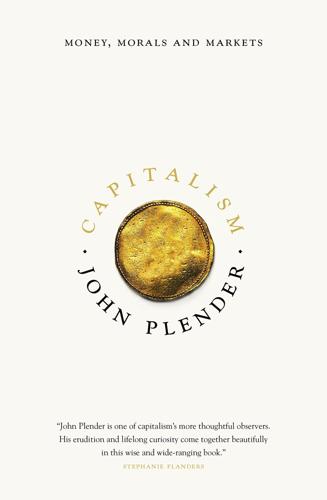
Capitalism: Money, Morals and Markets
by
John Plender
Published 27 Jul 2015
A growing discussion is taking place, too, about the case for leaning against the wind – that is, raising interest rates more than would be necessary to maintain price stability in the short and medium term in order to curb a dangerous increase in banks’ risk appetite or to dampen overheating asset prices. As for waving sticks and spitting into the wind, the points show a realistic appreciation of the difficulty of influencing markets. This is a salutary warning for central bankers in the aftermath of the crisis, since they are now committed to macro-prudential policymaking, which entails imposing counter-cyclical increases and decreases in banks’ capital buffers, as well as other forms of intervention such as quantitative controls on lending.

App Kid: How a Child of Immigrants Grabbed a Piece of the American Dream
by
Michael Sayman
Published 20 Sep 2021
The post should be relevant to what the users are there for. And it should be so engaging that people are drawn to comment on and share it. Hypertargeted advertising has always worked well for me. The Facebook ad platform is a clear-cut service that works very differently from the vague influencer market that I was tapping into. If your ad doesn’t perform very well, meaning it isn’t being liked, shared, or clicked on a lot, guess what? Facebook won’t take your money. They’ll choose not to show it to people. Facebook just wants to show people ads that they are actually going to like and interact with—so make your ad speak as directly as possible to the people you want to see it.
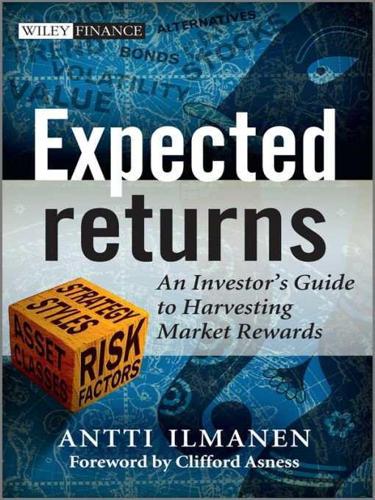
Expected Returns: An Investor's Guide to Harvesting Market Rewards
by
Antti Ilmanen
Published 4 Apr 2011
Conversely, if most current holders bought the stock well below current market levels (so that they have large unrealized capital gains), disposition-biased investors will be quick to sell assets and any good news will travel slowly. 6.4 CONCLUSION Behavioral finance implies that market prices do not only reflect the rationally expected discounted cash flows from an asset. Shifting asset demands from irrational investors influence market prices and expected returns. If there is some mispricing—overvaluation or undervaluation—then that should disappear over time. Active investors can exploit such mispricing and earn alpha through security selection across assets and maybe also through market timing over time. Five points are worth noting:• First, because we cannot directly observe expected returns, there has been considerable debate as to how much time series or cross-sectional predictability of returns really exists.
…
It used to be the case that policy tightening initially raised the required BRP, due to what was then the Fed’s lack of credibility as well as market uncertainty about where the tightening would end. The disappearance of a monetary policy premium since the mid-1990s may reflect enhanced Fed credibility or enhanced transparency. As the Fed has influenced market expectations through its communications, any predictive ability that policy rate moves might have had in the past has vanished. In recent years, long yields rose before actual tightening started. Simple trading rules like “Follow the Fed” have not been successful since 1994. More recently, the tools of monetary policy have changed even more dramatically, as being stuck at the zero interest rate bound has pushed the Fed to conduct large-scale asset purchases in lieu of rate cuts.
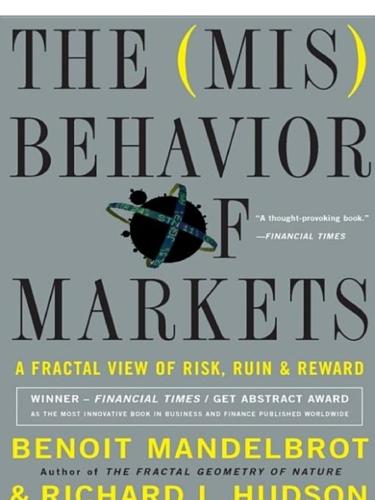
The Misbehavior of Markets: A Fractal View of Financial Turbulence
by
Benoit Mandelbrot
and
Richard L. Hudson
Published 7 Mar 2006
Market behavior Bachelier on deceptiveness of efficiency in five rules of inherent uncertainty in investment bubbles in mathematical study of misleading in momentum effect in multifractal modeling of Oanda’s study of parable of personality in pictorial essay of research needed for risk in roughness in Russian crisis and tax deductions influencing time relativity in timing in trouble streaks in turbulence of value concept influencing Market cube diagram Market-to-book effect Markowitz, Harry influence of modern finance influenced by MPT from Nobel prize for portfolio theory of price changes understood by risk understood by Marshak, Jacob Marshall, Alfred Martingale condition Mathematics Bachelier on calculating fractal dimension with calculus in chaology computational nightmare of economists using expectation Gaussian geometry in Hilbert on invariance in Kolmogorov in least squares method in market studied with mean variance calculation with modeling with Nile river with nineteenth century Onsager in power law in price deviation in scaling in seismology in simplifying life through time in topology in wild randomness and Mehra, Rajnish Memory Efficient Market Hypothesis and financial market with long stock price movements with Meriwether, John Merrill Lynch CAPM used by Merton, Robert C.
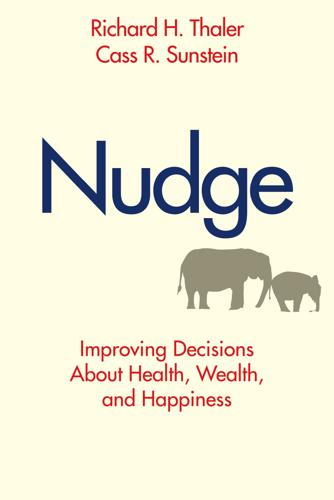
Nudge: Improving Decisions About Health, Wealth, and Happiness
by
Richard H. Thaler
and
Cass R. Sunstein
Published 7 Apr 2008
Finally the son comes back to his father to report on his series of brilliant trades. When he does so, he reports that his father was “too proud of [him] to speak.” Suppose that some Humans in a well-functioning market economy prefer two quarters to one dollar because two is more than one. What happens to these quarter lovers? Are they harmed? And do they influence market prices? The answers to these questions depend a bit on how dumb the quarter lovers are, but let’s suppose that while they prefer two quarters to one dollar, they still prefer more quarters to fewer quarters (since they love quarters). That means that while they would, in principle, be willing to trade two quarters for a dollar, they won’t have to do that, because banks (among others) will compete for their business, and will be happy to give them four quarters for each dollar.
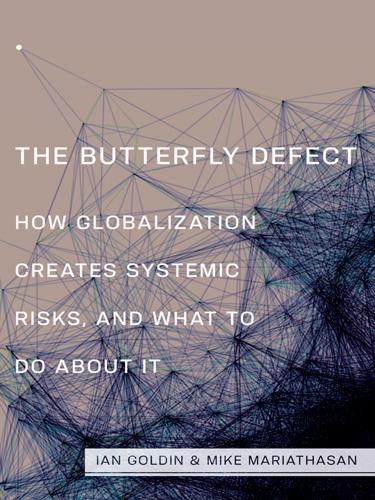
The Butterfly Defect: How Globalization Creates Systemic Risks, and What to Do About It
by
Ian Goldin
and
Mike Mariathasan
Published 15 Mar 2014
It is very hard to trace the source of a particular security breach because attacks are often conducted from compromised computers belonging to innocent bystanders. Even when an attack has been successfully traced, the evidence can be destroyed by a sophisticated cybercriminal. The damage can be compounded by the ability of a cyberattack to promote misinformation that can potentially be used to cause panic, influence markets, and generally cause instability. Deterrence is also rendered ineffective because such crimes are generally multijurisdictional. An attacker residing in Russia can use compromised computers based in the United States to launch an attack on Estonia. Even if authorities in Estonia managed to trace the attack back to Russia, how would they prosecute the criminal?

Keeping at It: The Quest for Sound Money and Good Government
by
Paul Volcker
and
Christine Harper
Published 30 Oct 2018
The interest rate on Treasuries established a benchmark for borrowing costs that helped determine whether banks would aggressively lend or would hold back. In those days, market participants and policy makers alike spoke of the importance of fiscal, monetary, and debt management policies. Only recently has debt management—the purchase and sale of Treasury securities of different maturities—come back into fashion as a way to influence markets and economic activity. Inevitably, the responsibility is shared between the Treasury as issuer and the Federal Reserve as buyer or seller, a sensitive matter with respect to Federal Reserve independence. The New York Fed has a long history, tracing back to the 1920s, of exercising a strong voice in both the framing and implementation of Federal Reserve policies.

#Republic: Divided Democracy in the Age of Social Media
by
Cass R. Sunstein
Published 7 Mar 2017
They in fact controlled numerous variables, ensuring that their results are weaker than what happens in actual markets, where unpredictability is even greater, and where cascades are inevitable. Media attention, marketing efforts, critical reviews, and other pressures inflate the role of social influences. When experts fail to predict success, it is “because when individual decisions are subject to social influence, markets do not simply aggregate pre-existing individual preferences.”8 Note here that marketers often try hard to create early online “buzz” by suggesting that a certain cultural product is already popular; indeed, some marketing efforts actually involve artificial efforts to overstate the demand for the product, through purchases not by ordinary people, but by those allied with the artist.

Irrational Exuberance: With a New Preface by the Author
by
Robert J. Shiller
Published 15 Feb 2000
Of course, it is conceivable that the results are unreliable for reasons other than sample size; for example, those who chose to answer the questionnaire might be more likely than others to feel confident about the stock market. On the other hand, those who answer the questionnaire are more likely to be the kind of active investors who influence markets, and so the respondents may be more representative of the investors who are behind the stock market boom than would be a truly random group of wealthy respondents. 3. I have seen evidence of investor overconfidence in real estate markets as well. In a 1988 questionnaire survey of new home buyers in California that I undertook with Karl Case during a housing price boom there, we asked home buyers in Anaheim (a city near Los Angeles) whether they thought that the housing prices in their city would go up or down in the next several years; 98% thought that prices would go up.
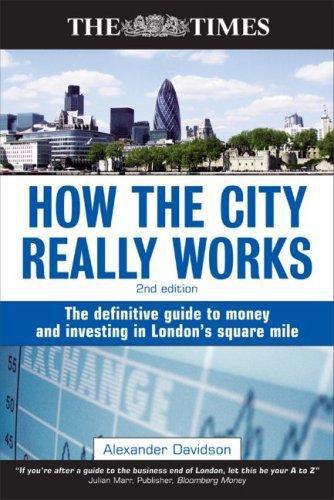
How the City Really Works: The Definitive Guide to Money and Investing in London's Square Mile
by
Alexander Davidson
Published 1 Apr 2008
The result, unlike before, is a flat curve over the period. Banks also have access to lending and deposit facilities at the Bank. The rates on these form a ‘corridor’, which narrows on the final day of the maintenance period to 25 basis points above and below Bank Rate. This too reduces incentives to influence market rates. Open market operations (OMOs), where the Bank lends money to banks in the money markets and sometimes borrows from them (see Chapter 2), partly by way of repo (see below), aim to satisfy the system’s targeted level of reserves over the maintenance period as a whole. As before, the aim is not to implement interest rate policy.
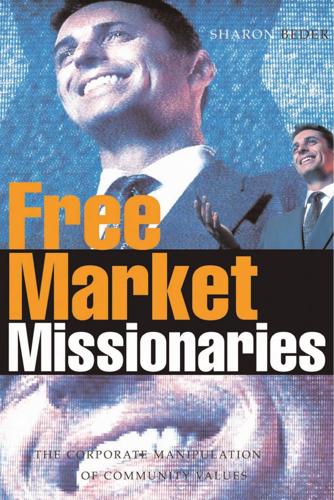
Free Market Missionaries: The Corporate Manipulation of Community Values
by
Sharon Beder
Published 30 Sep 2006
This was the result of several factors: the growth of corporate influence; the public relations-orchestrated spread of free market ideology; and the proliferation of business networks and coalitions aimed at exerting political pressure (see Figure 1.1). As a consequence, corporations now completely dominate the political process. 2 FREE MARKET MISSIONARIES corporate resources/ influence market ideology public relations political mobilization mobilisation corporate political power Figure 1.1 Corporate power equation PUBLIC RELATIONS Figure 1.1 Corporate Power Equation Rhetoric and deception have long been part of the arsenal available for people to persuade others of their own good qualities or the merits of something they would like to sell.
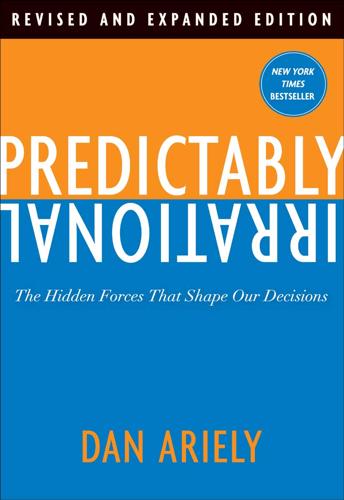
Predictably Irrational, Revised and Expanded Edition: The Hidden Forces That Shape Our Decisions
by
Dan Ariely
Published 19 Feb 2007
Second, whereas the standard economic framework assumes that the forces of supply and demand are independent, the type of anchoring manipulations we have shown here suggest that they are, in fact, dependent. In the real world, anchoring comes from manufacturer’s suggested retail prices (MSRPs), advertised prices, promotions, product introductions, etc.—all of which are supply-side variables. It seems then that instead of consumers’ willingness to pay influencing market prices, the causality is somewhat reversed and it is market prices themselves that influence consumers’ willingness to pay. What this means is that demand is not, in fact, a completely separate force from supply. AND THIS IS not the end of the story. In the framework of arbitrary coherence, the relationships we see in the marketplace between demand and supply (for example, buying more yogurt when it is discounted) are based not on preferences but on memory.

A Pelican Introduction Economics: A User's Guide
by
Ha-Joon Chang
Published 26 May 2014
Some of them are the only supplier (monopoly) or, more typically, one of the few suppliers (oligopoly) – not just at the national level but increasingly at the global level. For example, Boeing and Airbus supply close to 90 per cent of world civilian aircrafts. Companies may also be the sole buyer (monopsony) or one of the few buyers (oligopsony). Unlike the small companies in Adam Smith’s world, monopolistic or oligopolistic firms can influence market outcomes – they have what economists call market power. A monopolistic firm may deliberately restrict its output to raise its prices to the point that its profit is maximized (I explain the technical points in Chapter 11 – feel free to ignore them now). Oligopolistic firms cannot manipulate their markets as much as a monopolistic firm can, but they may deliberately collude to maximize their profits by not under-cutting each other’s prices – this is known as a cartel.
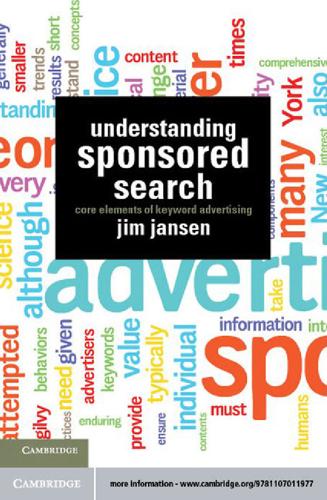
Understanding Sponsored Search: Core Elements of Keyword Advertising
by
Jim Jansen
Published 25 Jul 2011
The company will influence what type and model of sponsored-search efforts are undertaken, as the keyword advertising effort must be in line with the strategy aspects of the company. Continual evaluation It is important to the seven P’s and three C’s that they be regularly reviewed to take into account changes in customer needs and other external influences. Marketing managers need to adapt their set of controllable variables to face new conditions. Promotion and price can be adjusted in the short term, whereas the product itself or its distribution channels cannot. Decisions involving the marketing mix reinforce one another and strengthen the overall product’s position if they are internally consistent and pursued over a longer period of time.

A Random Walk Down Wall Street: The Time-Tested Strategy for Successful Investing
by
Burton G. Malkiel
Published 10 Jan 2011
Even so astute a commentator on the Wall Street scene as “Adam Smith” displays this misconception when he writes, “I suspect that even if the random walkers announced a perfect mathematical proof of randomness I would go on believing that in the long run future earnings influence present value, and that in the short run the dominant factor is the temper of the crowd.” Of course, earnings and dividends influence market prices, and so does the temper of the crowd. We saw ample evidence of this in earlier chapters of the book. But, even if markets were dominated during certain periods by irrational crowd behavior, the stock market might well still be approximated by a random walk. The original illustrative analogy of a random walk concerned a drunken man staggering around an empty field.
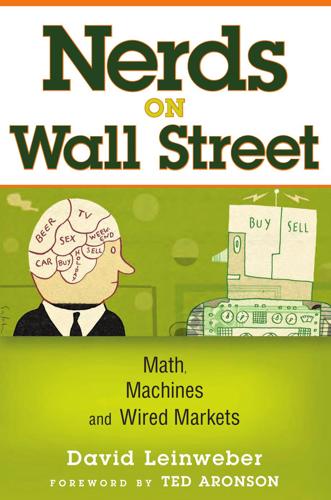
Nerds on Wall Street: Math, Machines and Wired Markets
by
David J. Leinweber
Published 31 Dec 2008
The project emphasizes Ner ds Gone Gr een 337 the interaction between the economic and technical aspects of competitive electricity markets. Our research focused on several specific topics. • Theoretical and experimental studies of alternative auction structures and their implications for participants’ behavior and the efficient operation of the system. • How market rules in conjunction with system characteristics influence market power. • Congestion management and transmission pricing. • Design and analysis of financial instruments for asset valuation and risk management in electricity markets. • Understanding price formation and market operation. • Optimal unit commitment algorithms for competitive electricity. • Design of demand-side contracts.
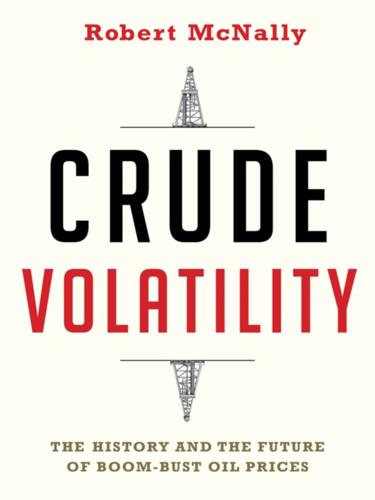
Crude Volatility: The History and the Future of Boom-Bust Oil Prices
by
Robert McNally
Published 17 Jan 2017
The decade started and ended with major conflicts in the Persian Gulf that triggered wild-price instability and hastened transformations in the oil market. OPEC transitioned from a loose association of producers wielding newly acquired power to set administered prices for their crude exports to a cantankerous supply-regulating cartel attempting to influence market prices. But OPEC’s initial success in replicating the TRC’s role as supply regulator was not terribly promising. It depended on Saudi Arabia playing the swing producer role—which it abandoned spectacularly in 1985 and 1986, triggering a price collapse. Fortuitous supply cuts outside OPEC and stronger demand later in the decade enabled OPEC to enjoy relative price stability.

The Millionaire Fastlane: Crack the Code to Wealth and Live Rich for a Lifetime
by
Mj Demarco
Published 8 Nov 2010
Their product funnel is directed by a centralized source. They're told like automatons what they can and can't do. They're held hostage to a corporate patriarch, not realizing that they aren't really their own boss. If you can't change your product, are you the boss? If you can't change your price, are you the boss? If you can't influence marketing decisions, are you the boss? Years ago, I joined a network marketing company. I had a friend who earned good money. Ultimately, the company changed its product line and compensation structure. My friend's income stream was disrupted and eventually disappeared. The asset he created (his downline and cash-flow stream) vaporized in a matter of months.

Chokepoint Capitalism
by
Rebecca Giblin
and
Cory Doctorow
Published 26 Sep 2022
Just as artists object to the lack of transparency around their sales and royalties, record companies accuse YouTube of obfuscating how much music is actually streamed via YouTube, how much it pays out, and how rates are decided.41 YouTube doesn’t publicly report on these matters, but it seems like all kinds of different deals are made: in 2018, for example, one influencer marketing firm reported working with clients receiving as little as $0.35 and as much as $5 per thousand views.42 Google claims its rates on music are higher than Spotify’s ad-supported tier,43 but without transparency, there’s no way of verifying that claim—and no way for creators and rights holders to use payments made to others as leverage for increasing their own.
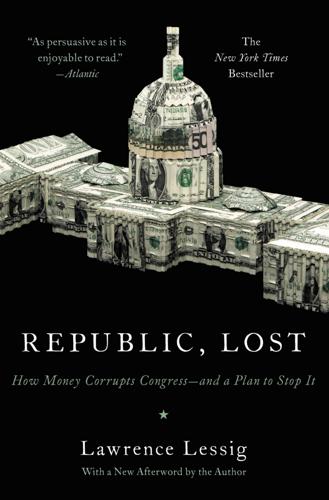
Republic, Lost: How Money Corrupts Congress--And a Plan to Stop It
by
Lawrence Lessig
Published 4 Oct 2011
Or at least, if they’re going to raise a family the way their family might reasonably expect, given their talents and the comparable opportunities. Whatever the pressure, the question I mean to raise is about the work these members do after their life in Congress. Because if their plan is to enter the influence market that D.C. has become, then they can’t help but develop a dependency upon that market doing well. It’s not just the need to keep future employers happy. That’s a possible but, I think, distant concern that would rarely extend its reach into the day-to-day work of the job. Instead, the real problem is imagining a soul like this voting to destroy a significant chunk of the value of this influence industry—which fundamental reform of the type that I discuss in chapter 15 would do.
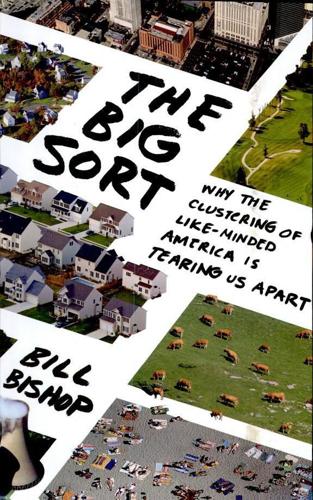
The Big Sort: Why the Clustering of Like-Minded America Is Tearing Us Apart
by
Bill Bishop
and
Robert G. Cushing
Published 6 May 2008
But Smith figured that the question was a way of determining which term resonated more with people—whether means mattered more than ends. Beginning in the 1990s, Smith said, he found a big jump in the salience of means (integrity) over ends (success). Principles were paramount. "Nobody is willing to live with trade-offs anymore," Smith said. "We're in this no-compromise world." The Geography of Influence Market segmentation and psychographic market research roused the same fears as McGavran's homogeneous units. Vance Packard warned in his 1957 book The Hidden Persuaders that advertising employed "mass psychoanalysis" to manipulate consumers. This was The Manchurian Candidate fear that advertisers had managed to "invade the privacy of our minds" to manipulate both sales and political opinion.*22 Other social critics said that beyond exploiting consumers, advertising and marketing were actually making national consensus impossible.
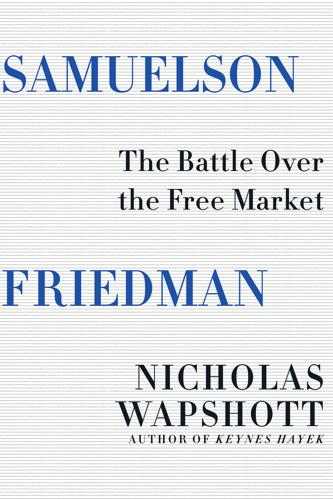
Samuelson Friedman: The Battle Over the Free Market
by
Nicholas Wapshott
Published 2 Aug 2021
Before Keynes, when an economy shed jobs during an economic downturn—which Samuelson described as one of “the cruelties of historic capitalism”4—the price of labor fell, which meant employers could afford to start hiring again, which in turn led to economic recovery. Since Keynes, market economies had become “mixed economies,” with governments influencing markets to keep unemployment at a minimum. With the threat of unemployment removed, Labor demanded pay rises, which employers passed on to the consumer as price increases. Samuelson’s bitter childhood memories of the jobless Thirties made him reluctant to propose mass unemployment as a remedy to rising inflation—which he described as “the malaria of the modern mixed economy”5—even if it was an economically sound cure to rising prices.
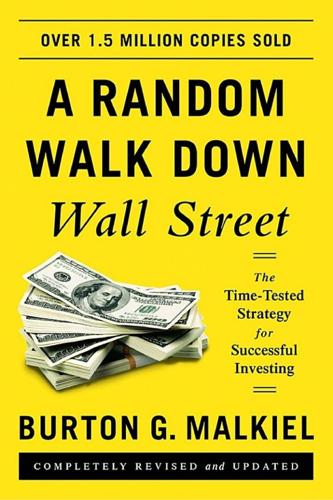
A Random Walk Down Wall Street: The Time-Tested Strategy for Successful Investing (Eleventh Edition)
by
Burton G. Malkiel
Published 5 Jan 2015
Even so astute a commentator on the Wall Street scene as “Adam Smith” displays this misconception when he writes, “I suspect that even if the random walkers announced a perfect mathematical proof of randomness I would go on believing that in the long run future earnings influence present value, and that in the short run the dominant factor is the temper of the crowd.” Of course, earnings and dividends influence market prices, and so does the temper of the crowd. We saw ample evidence of this in earlier chapters of the book. But, even if markets were dominated during certain periods by irrational crowd behavior, the stock market might well still be approximated by a random walk. The original illustrative analogy of a random walk concerned a drunken man staggering around an empty field.
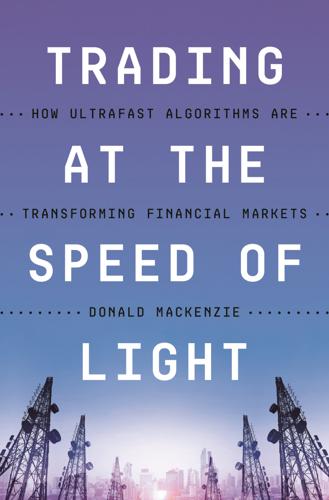
Trading at the Speed of Light: How Ultrafast Algorithms Are Transforming Financial Markets
by
Donald MacKenzie
Published 24 May 2021
On an issue such as this, different firms whose algorithms act in different ways will have different economic interests, and can be expected to have different preferences, and furthermore such issues can have unintended effects on market structure. Recall interviewee DI’s view that receiving fill messages early keeps competition alive by allowing market-making firms that are not the fastest to still make profits. More generally, even material phenomena that are essentially fortuitous can influence market structure, such as the effectively accidental fact (also discussed in chapter 5) that until 2010 the firm that had “gold line”—the fastest fiber-optic route from Chicago to New Jersey—was predominantly a market-maker. The materiality of market structure goes beyond the technologies of trading such as exchanges’ computer systems or the gold line.

A History of Future Cities
by
Daniel Brook
Published 18 Feb 2013
When Shanghai first reopened for international business in the early 1990s, foreigners could only live in hotels; in the mid-1990s, an official list of (presumably bugged) apartments were opened up to foreign renters. Finally, in 1999, the authorities dropped even that requirement and began relying on a state-influenced market system to corral foreigners with carrots rather than sticks. Pudong’s Western-style suburbs are the final result of the authorities’ strategy for luring expatriates to live and work in the city. Green Villas, a Pudong gated community of single-family homes that opened in 1999, is one such development designed to woo foreign professionals and their families.
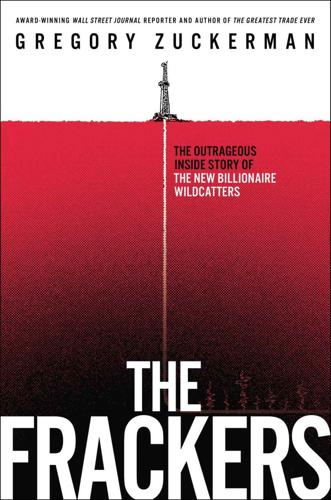
The Frackers: The Outrageous Inside Story of the New Billionaire Wildcatters
by
Gregory Zuckerman
Published 5 Nov 2013
It was hard to judge the impact of McClendon and Ward’s trading, however. Chesapeake was responsible for about 10 percent of the activity in the natural gas market, traders estimate. There were times when Chesapeake’s moves, including its hedging and its decisions on natural gas production, influenced markets, traders say. That raised the possibility that the hedge fund could have benefited from the activities of Chesapeake, though no such evidence emerged. Either way, McClendon and Ward didn’t spend too much time worrying about how the trading by the hedge fund, or their own speculation in the brokerage accounts, might look to outsiders.
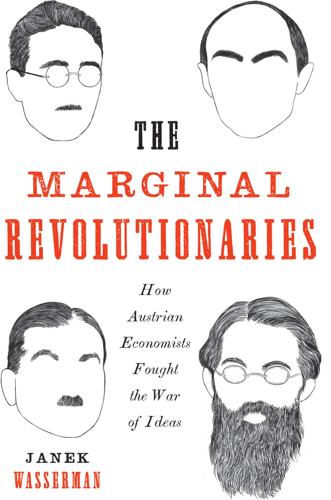
The Marginal Revolutionaries: How Austrian Economists Fought the War of Ideas
by
Janek Wasserman
Published 23 Sep 2019
On Schüller, see Feichtinger, Kulturen, 222–25; Nautz, Unterhändler. 7. Mises, Die Kritik, ix, 3–6, 19–21. Mises made clear what he did not consider an “intervention”: (1) regulations that protect private property and free competition; (2) the socialization of some means of production; (3) state actions through the market that may influence market processes. He believed anarchism to be erroneous, so a state must act to protect property. 8. Slobodian, Globalists, 30–42. 9. See Grandner and Traxler, “Sozialpartnerschaft”; Slobodian, Globalists, 42–48. 10. On Marienthal, see C. Fleck, Marienthal. See also Wasserman, Black Vienna, ch. 6. 11.

Investing Amid Low Expected Returns: Making the Most When Markets Offer the Least
by
Antti Ilmanen
Published 24 Feb 2022
It thus looks like passive indexers can continue to “free-ride” on the price discovery service of active investors. Whether the shift to passive has made markets more or less efficient depends on whether passive inflows mainly replace the activity of inexperienced retail investors or their more skillful delegated active managers. A shift from active stock picking to passive investing will influence market pricing mainly if the active assets sold come from certain corners of the market (e.g. from disappointed value investors) or if the main passive indices differ from the broad market (e.g. the popular S&P500 index has a clear large-cap tilt). The shift to passive, as well as to ETFs and factor investing, could lead to higher correlations between single stocks and thus higher systematic risk.

The Fissured Workplace
by
David Weil
Published 17 Feb 2014
But it’s not a boutique chain, a cutting-edge chain or terribly innovative.” See Jane Levere, “A Campaign from Marriott Aims Younger,” New York Times, June 17, 2013, B4. 55. A number of studies have measured the impact of brands on market valuation as well as revenues and profits. O’Neill and Xiao (2006) found that hotel brand influences market value significantly after accounting for profitability, occupancy rates, average daily rates (ADRs), and scale measured in terms of room size, as well as location and chain scale. O’Neill and Mattila (2006) also found that brand affiliation, name recognition, and reputation for service quality contributed up to 20%–25% of the “going-concern” value of a hotel. 56.

Model Thinker: What You Need to Know to Make Data Work for You
by
Scott E. Page
Published 27 Nov 2018
Without this information, knowing which banks have obligations to other banks will be insufficient to predict or prevent failures, and the net effect of greater connectedness of banks will not be clear. Volatility Last, we consider a more subtle implication of long-tailed distributions. If the entities that make up a power-law distribution fluctuate in size, then the exponent of the power law becomes a proxy for system-level volatility. It follows that the firm size distribution should influence market volatility. For this exercise, think of a country’s gross domestic product (GDP) as the aggregate production of thousands of firms. If production levels are independent and have finite variation, then, by the central limit theorem, the distribution of GDP will have a normal distribution. It also follows that the greater the variation in production levels across firms, the greater the aggregate volatility.
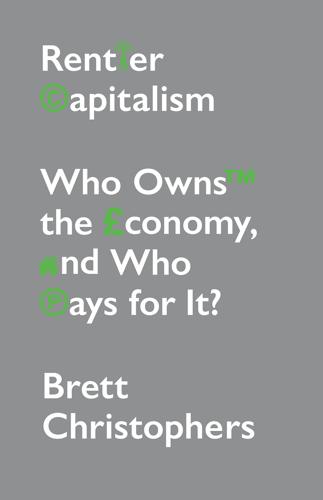
Rentier Capitalism: Who Owns the Economy, and Who Pays for It?
by
Brett Christophers
Published 17 Nov 2020
Just as recent decades have seen significant consolidation in the UK of ownership of financial assets (see above), so also have they seen parallel consolidation, often in the self-same corporate hands, of control of the aforementioned asset-market infrastructures.77 In 2012, in an influential report dealing specifically with UK equity markets, John Kay explained this consolidation trend as follows: ‘Since “Big Bang” removed obstacles to the consolidation of financial services businesses in 1986, regulation has not concerned itself with issues of market structure. Indeed, the application of competition policy, the main policy tool for influencing market structure, has been restricted in financial services.’78 It has been restricted in financial services in non-equity markets, too – and with the same implications for the ability of leading gatekeepers to extract rents.79 Strikingly, John Plender, in his early reflections on the Big Bang back in 1987, foresaw exactly this outcome.
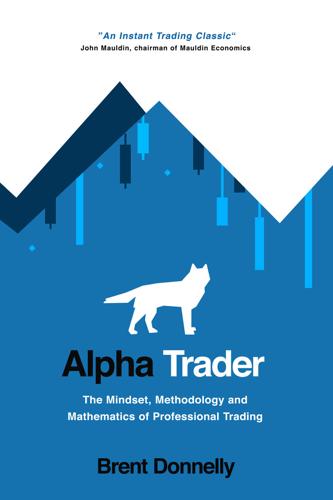
Alpha Trader
by
Brent Donnelly
Published 11 May 2021
Furthermore, the very fact that you caught the run-up trade means the security has moved a fair bit already into the event and thus it is probably getting crowded in that direction and offers asymmetric risk/reward (in a bad way). Everybody’s bearish and nobody’s short Sticking with the topic of events, there is a subtler way that upcoming events can influence markets. Often, when a major risk event is coming up, risk managers and traders lean on the conservative side until it is out of the way (due to gap risk and concerns about extreme volatility). They reduce their risk as the event nears, regardless of their view. Once the event passes (regardless of the result), risk appetite returns to normal and a move that probably should have happened before the event happens afterwards.

More Money Than God: Hedge Funds and the Making of a New Elite
by
Sebastian Mallaby
Published 9 Jun 2010
Shaw hired quants of all varieties, usually recruiting them in their twenties, the crucial early years at Renaissance were largely shaped by established cryptographers and translation programmers—experts who specialized in distinguishing fake ghosts from real ones. Robert Mercer echoes some of Wepsic’s wariness about false correlations: “If somebody came with a theory about how the phases of Venus influence markets, we would want a lot of evidence.” But he adds that “some signals that make no intuitive sense do indeed work.” Indeed, it is the nonintuitive signals that often prove the most lucrative for Renaissance. “The signals that we have been trading without interruption for fifteen years make no sense,” Mercer explains.

Adaptive Markets: Financial Evolution at the Speed of Thought
by
Andrew W. Lo
Published 3 Apr 2017
For example, DeLong et al. (1991) and Blume and Easley (1992) explore the long-run survival of rational and irrational traders, and show that irrationality can persist; Waldman (1994) shows that natural selection and sexual reproduction can often yield behaviors that are suboptimal or “second-best”; Luo (1995; 1998; 1999; 2001; 2003) explores the implications of natural selection for futures markets and money as a medium of exchange; the literature on agent-based modeling pioneered by Arthur et al. (1997), in which interactions among software agents programmed with simple heuristics are simulated, relies heavily on evolutionary dynamics; Hirshleifer and Luo (2001) consider the long-run prospects of overconfident traders in a competitive securities market; and Kogan et al. (2006) show that irrational traders can influence market prices even when their wealth becomes negligible; Lensberg and Schenk-Hoppé (2007) derive the asymptotic properties of investment strategies that follow the Kelly criterion; and Hens et al. (2011) derive an evolutionary explanation of the value premium puzzle. 35. Lo and Zhang (2017). 36. Arthur et al. (1997). 37.
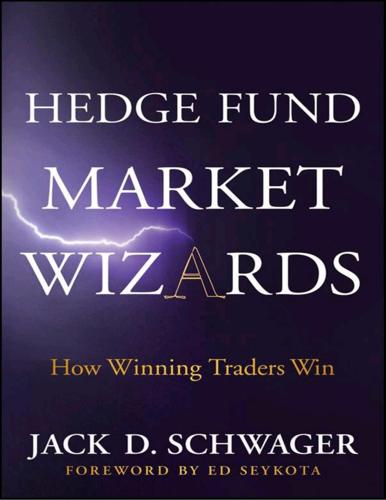
Hedge Fund Market Wizards
by
Jack D. Schwager
Published 24 Apr 2012
Since that time, however, hedge fund growth has exploded, expanding more than twentyfold, with the industry currently managing in excess of $2 trillion. The impact of hedge fund trading activity far exceeds its nominal size because hedge fund managers trade far more actively than traditional fund managers. The enhanced role of hedge funds has itself influenced market behavior. With hedge funds accounting for a much larger percentage of trading activity, trading has become more difficult. In some strategies, the effect can clearly be seen. For example, systematic trend-followers did enormously well in the 1970s and 1980s when they accounted for a minority of futures trading activity, but their return/risk performance declined dramatically in subsequent decades, as they became a larger and larger part of the pool.
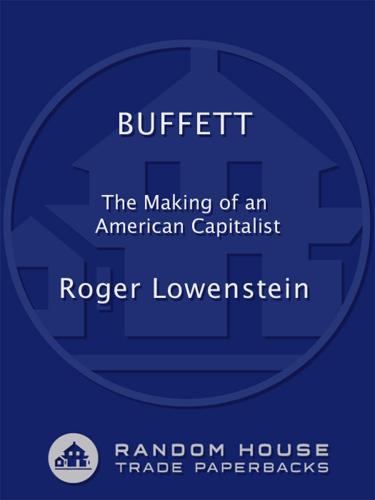
Buffett
by
Roger Lowenstein
Published 24 Jul 2013
Then, renouncing his sins, he became an apostle of long-term, selective investing.15 He pursued the market with calm, devoting to it an hour in bed in the morning, yet compiling a stellar record for his own account and for that of King College. His speeches at the annual meetings of the National Mutual Life Assurance Society, of which he was chairman, were celebrated in the London of the 1930s for their impact on market prices. For Buffett, Keynes’s relevance during the Go-Go era was his keen understanding of how crowds could influence market prices. The stock market is a crowd, consisting of whoever is following prices at any given moment. This amorphous assemblage revalues prices every day, even every hour. Yet the outlook for a given business—say, a Walt Disney—changes far more slowly. The public’s ardor for Mary Poppins is unlikely to change from a Tuesday to a Wednesday, or even over a month or two.
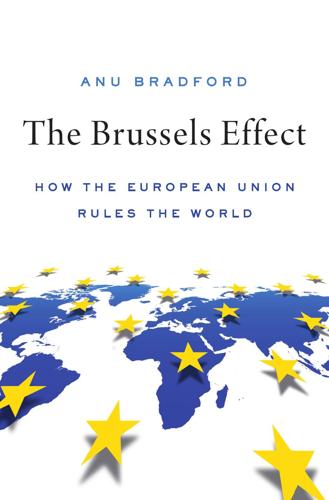
The Brussels Effect: How the European Union Rules the World
by
Anu Bradford
Published 14 Sep 2020
According to Katja Biendenkopf, the EU data generated under REACH was part of the legislative debate on amending the TSCA.246 It was also used by the Environmental Defense Fund to illustrate the discrepancies between the two regulatory systems.247 Following the trend set by REACH of greater data transparency, the EPA released information on more than 7,600 chemicals and made public information on more than 100 cases of formerly confidential chemical identities.248 Further, as discussed earlier, California uses EU data in its online database, the Toxic Clearinghouse.249 Another potential pathway for REACH data to influence market behavior in other jurisdictions is through private toxic tort litigation.250 For example, a coalition of European agencies and research institutions created an online tool—the Advanced REACH tool (ART)—to model and assess benzene exposure given inputs such as ventilation rate and room size. While at least one US federal court found that an expert opinion based on ART could be reliable in quantifying a plaintiff’s benezene exposure,251 there is no evidence yet that such testimony is common, or that REACH data is widely or often used in private litigation.
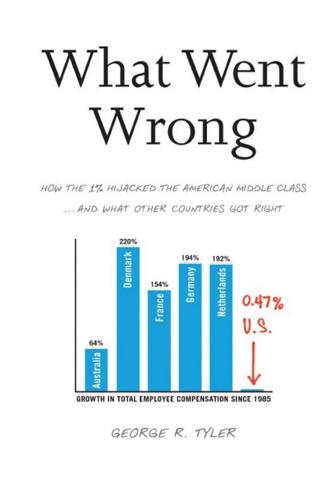
What Went Wrong: How the 1% Hijacked the American Middle Class . . . And What Other Countries Got Right
by
George R. Tyler
Published 15 Jul 2013
New York University professor Nouriel Roubini—one of the few who predicted the Wall Street meltdown—concluded that: “… the Anglo-Saxon model of supervision and regulation of the financial system has failed…. [it] “relied on self-regulation that, in effect, meant no regulation; on market discipline that does not exist when there is euphoria and irrational exuberance; on internal risk management models that fail….”42 Behind Friedman’s Influence Market fundamentalism was pretty thin gruel for economists schooled in history. It quickly attracted as sharp critics the British economist Andrew Smithers and Yale economist Robert J. Shiller, who as early as 1984 judged the underlying theory “one of the most remarkable errors in the history of economic thought.”43 It actually faded in popularity quickly as the profession came to terms with its unreal assumptions.
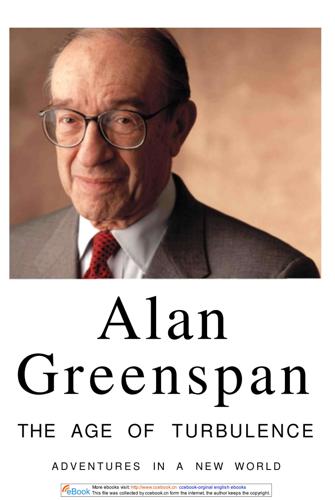
The Age of Turbulence: Adventures in a New World (Hardback) - Common
by
Alan Greenspan
Published 14 Jun 2007
Only in areas of operational risk and business and consumer fraud do the principles of twentieth-century regulation remain intact. Much regulation will continue to be aimed at ensuring that rapid-fire; risk-laden dealings are financed by wealthy professional investors, not by the general public. Efforts to monitor and influence market behavior that is proceeding at Mach speeds will fail. Public-sector surveillance is no longer up to the task. The armies of examiners that would be needed to maintain surveillance on today's global transactions would by their actions undermine the financial flexibility so essential to our future.

The Irrational Bundle
by
Dan Ariely
Published 3 Apr 2013
Second, whereas the standard economic framework assumes that the forces of supply and demand are independent, the type of anchoring manipulations we have shown here suggest that they are, in fact, dependent. In the real world, anchoring comes from manufacturer’s suggested retail prices (MSRPs), advertised prices, promotions, product introductions, etc.—all of which are supply-side variables. It seems then that instead of consumers’ willingness to pay influencing market prices, the causality is somewhat reversed and it is market prices themselves that influence consumers’ willingness to pay. What this means is that demand is not, in fact, a completely separate force from supply. AND THIS IS not the end of the story. In the framework of arbitrary coherence, the relationships we see in the marketplace between demand and supply (for example, buying more yogurt when it is discounted) are based not on preferences but on memory.
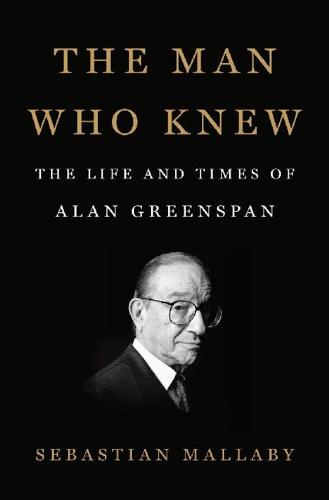
The Man Who Knew: The Life and Times of Alan Greenspan
by
Sebastian Mallaby
Published 10 Oct 2016
“I can’t be in charge of people’s perceptions,” Greenspan replied. “I don’t function that way. I can’t function that way.” Again, it was a curious argument. Contrary to Greenspan’s assertion, he absolutely did function by manipulating perceptions. Perceptions lay at the heart of everything the Fed did—that was how it influenced market interest rates. More to the point, perceptions lay at the heart of what Greenspan himself did. The media watched everything from his body language to the bulge in his briefcase, and he understood this perfectly. On the morning of Greenspan’s testimony, January 25, 2001, USA Today published a triumphant scoop.